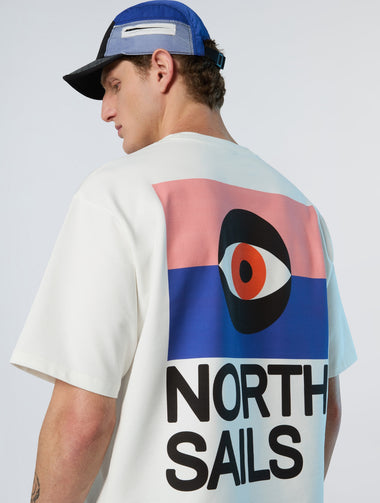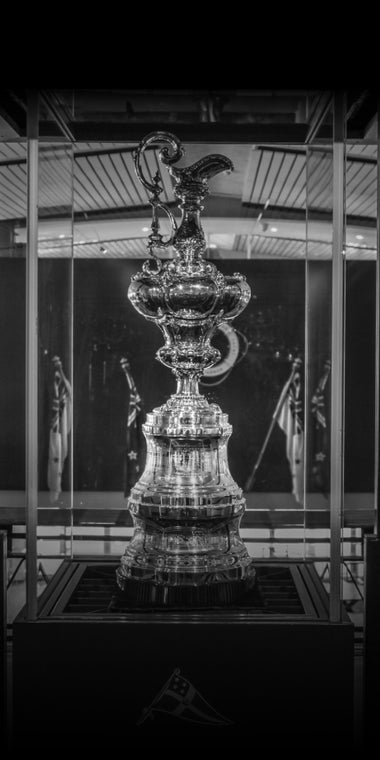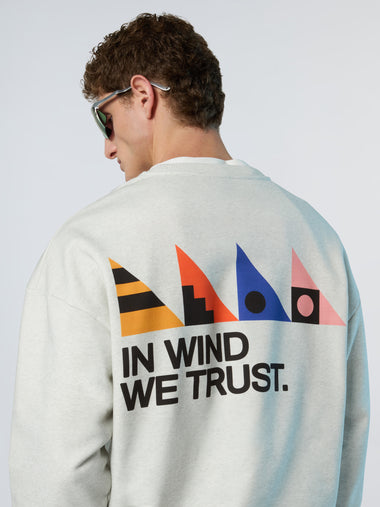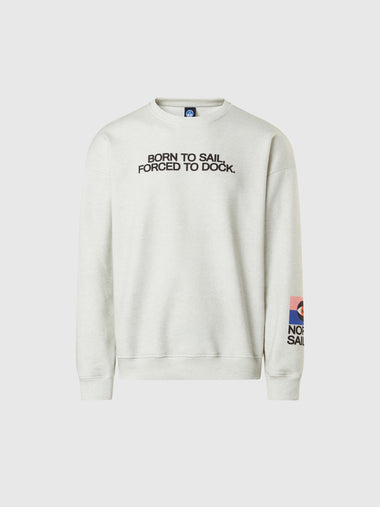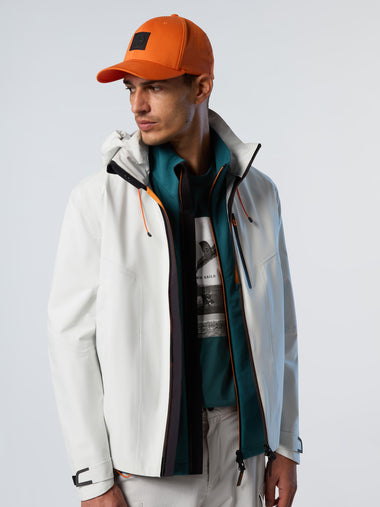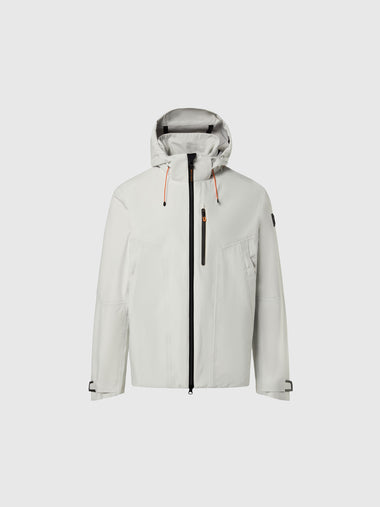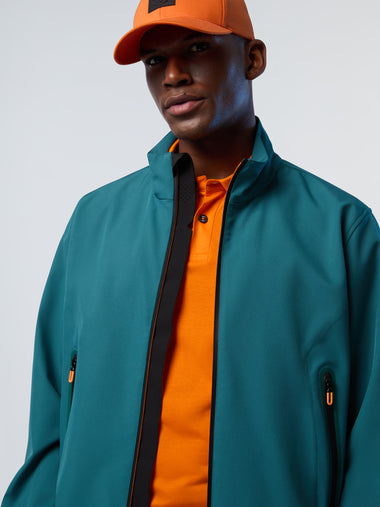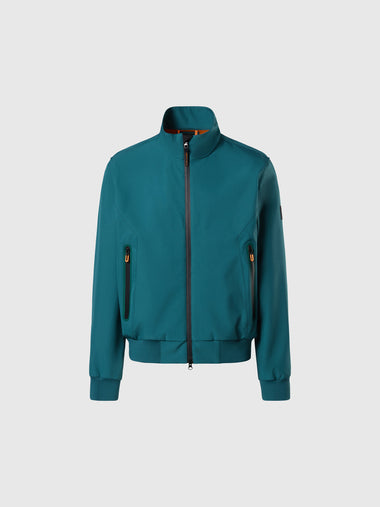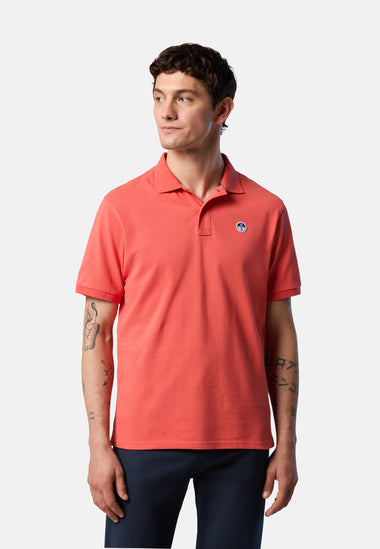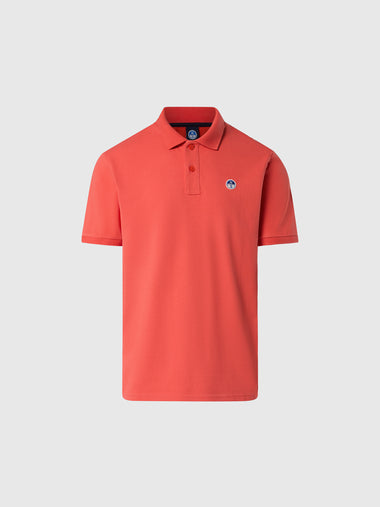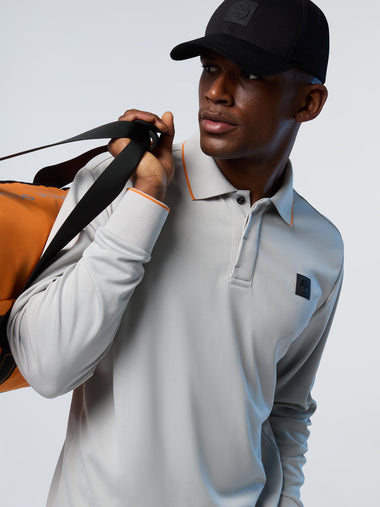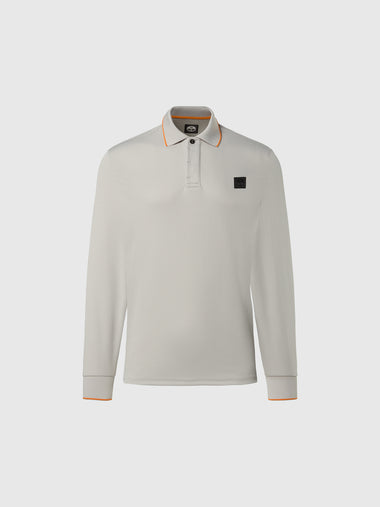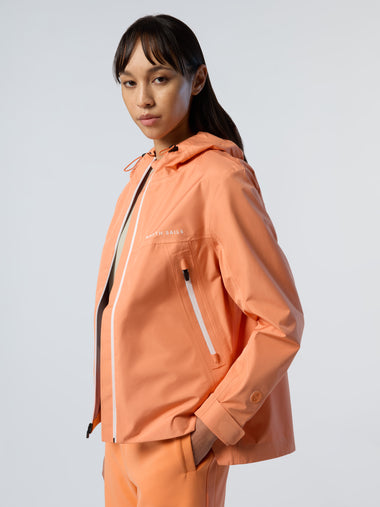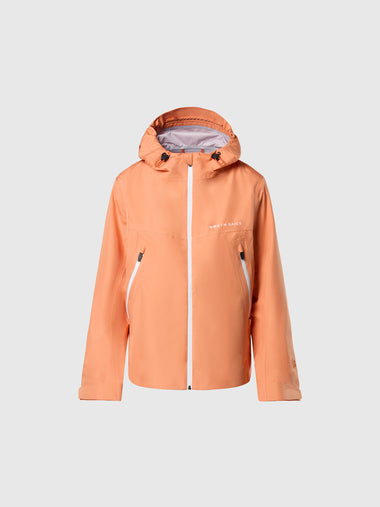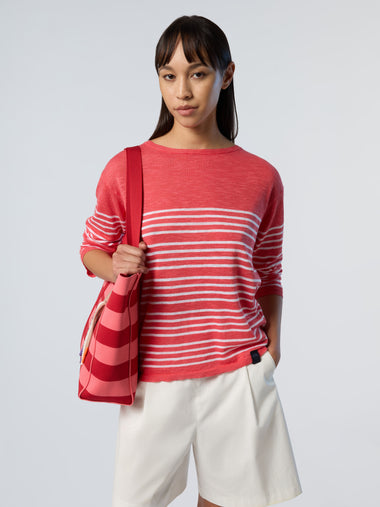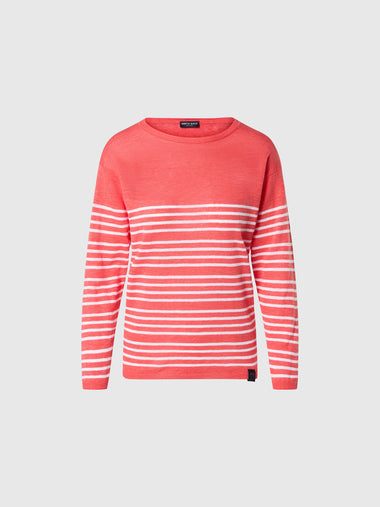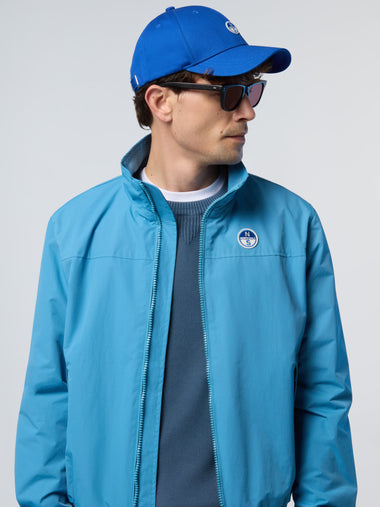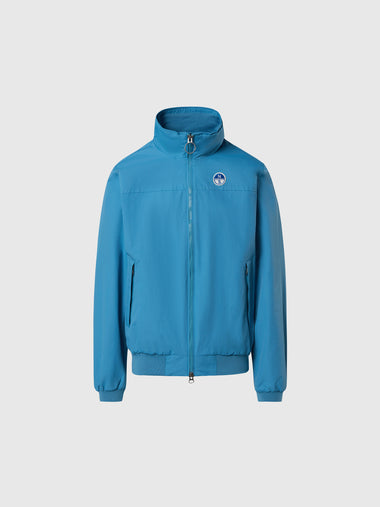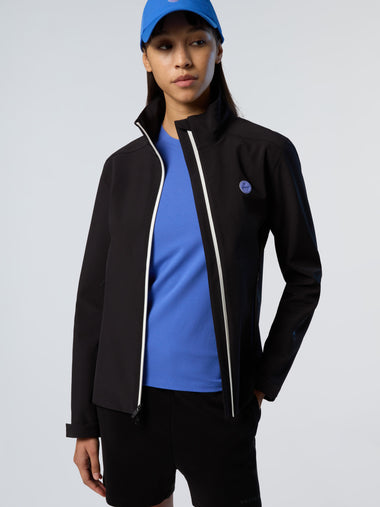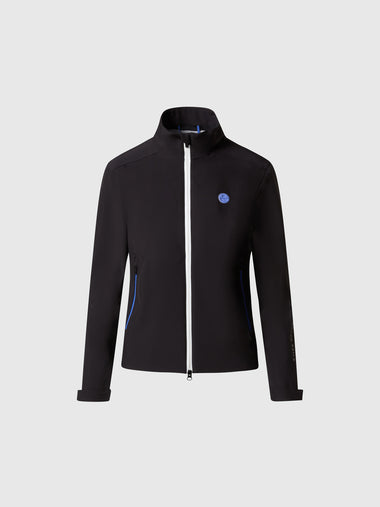NORTH SAILS BLOG
All
Events
Guides
News
People
Podcast
Sustainability
Tech & Innovation
Travel & Adventure
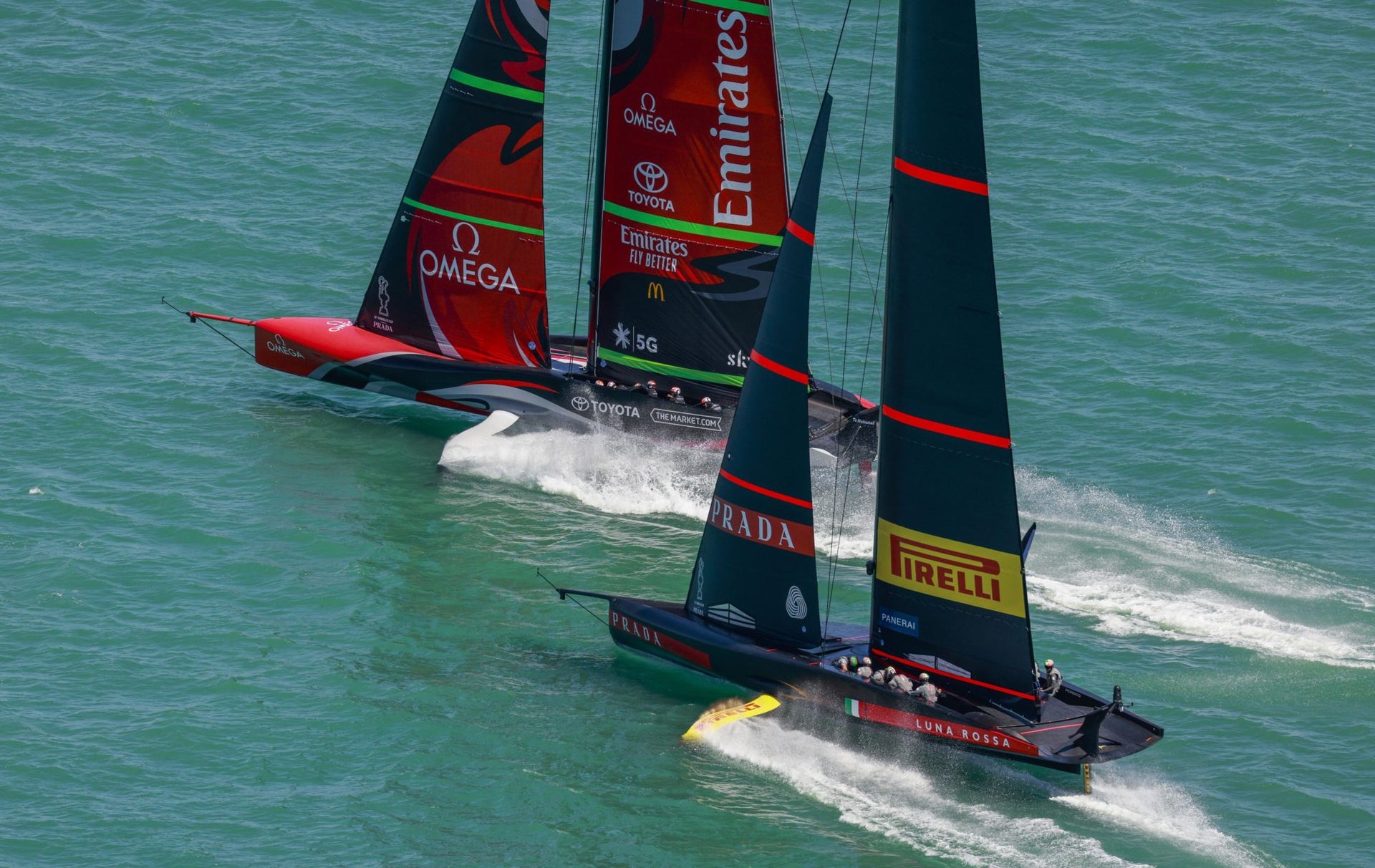
BEHIND THE SCENES: NORTH SAILS AT THE 36TH AMERICA’S CUP
You’re familiar with the phrase if you know, you know, right? For over three decades, North design expertise and sails have been onboard with every team to capture the Auld Mug. When the Defenders and Challengers built their winning teams, they knew who to call: North Sails.
READ MORE
READ MORE
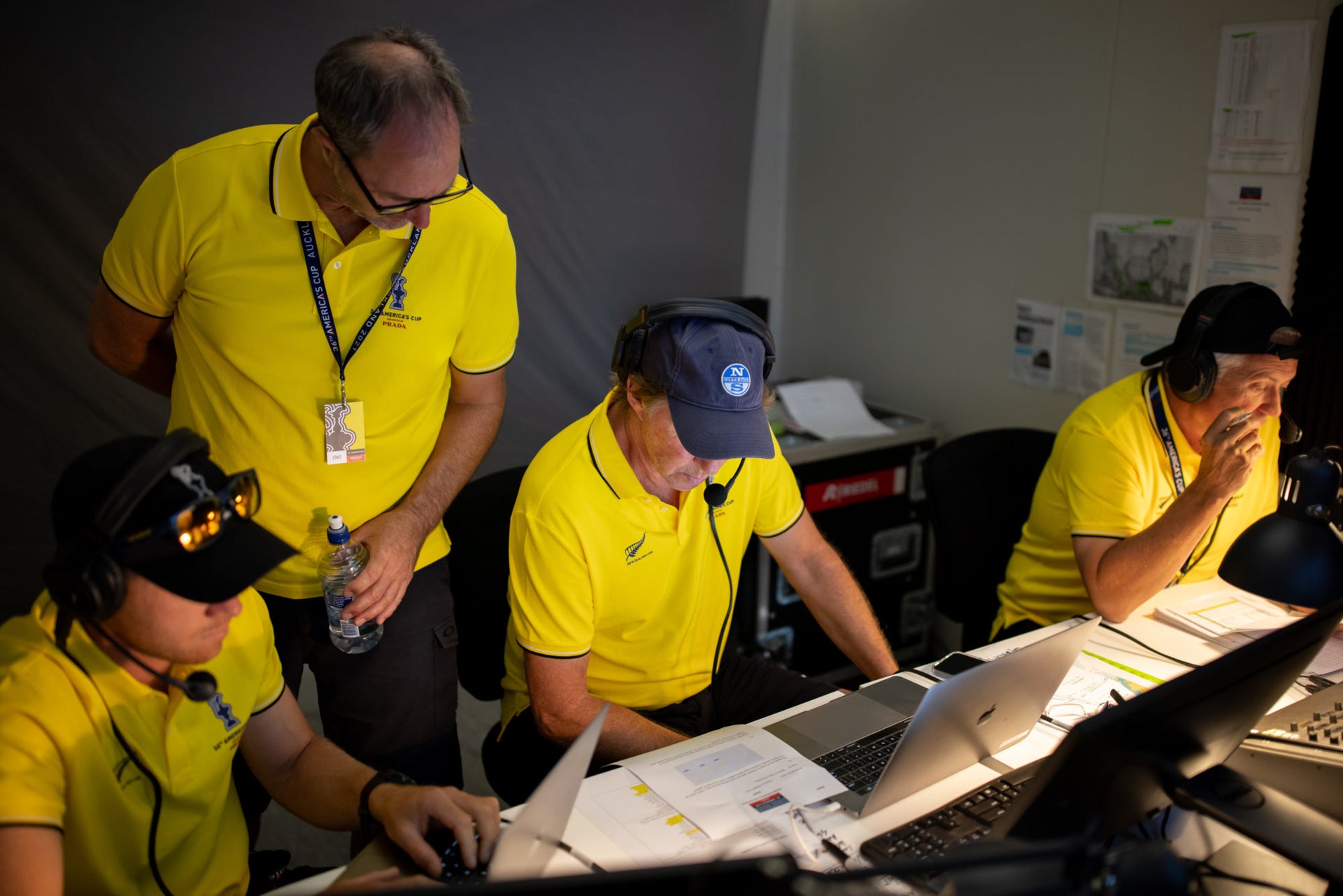
BEHIND THE SCENES: EPISODE 6
GO BEHIND THE SCENES WITH TV PRODUCER LEON SEFTON
Episode 6: North Sails x the 36th America’s Cup
Leon Sefton is no stranger to professional sailing and the America’s Cup, however he is lesser known than the sailors or design teams. As one of the top producers in sailing TV, Sefton is the guy calling the shots behind the cameras to bring the 36th America’s Cup to your screens. “Each day when we’re on-air, what I’m looking for we’re making sense of what’s playing out in front of us.” Managing and directing 12 audio feeds, 10 onboard cameras, 2 chase boats, and 2 helicopters—all on the water– Sefton has his hands full. “It is immensely challenging,” he said. “Compared to F1, where you surround a track with cameras and run cables back to your live truck and nothing moves and everything should work, we have none of this going for us in sailing.”
READ MORE
READ MORE
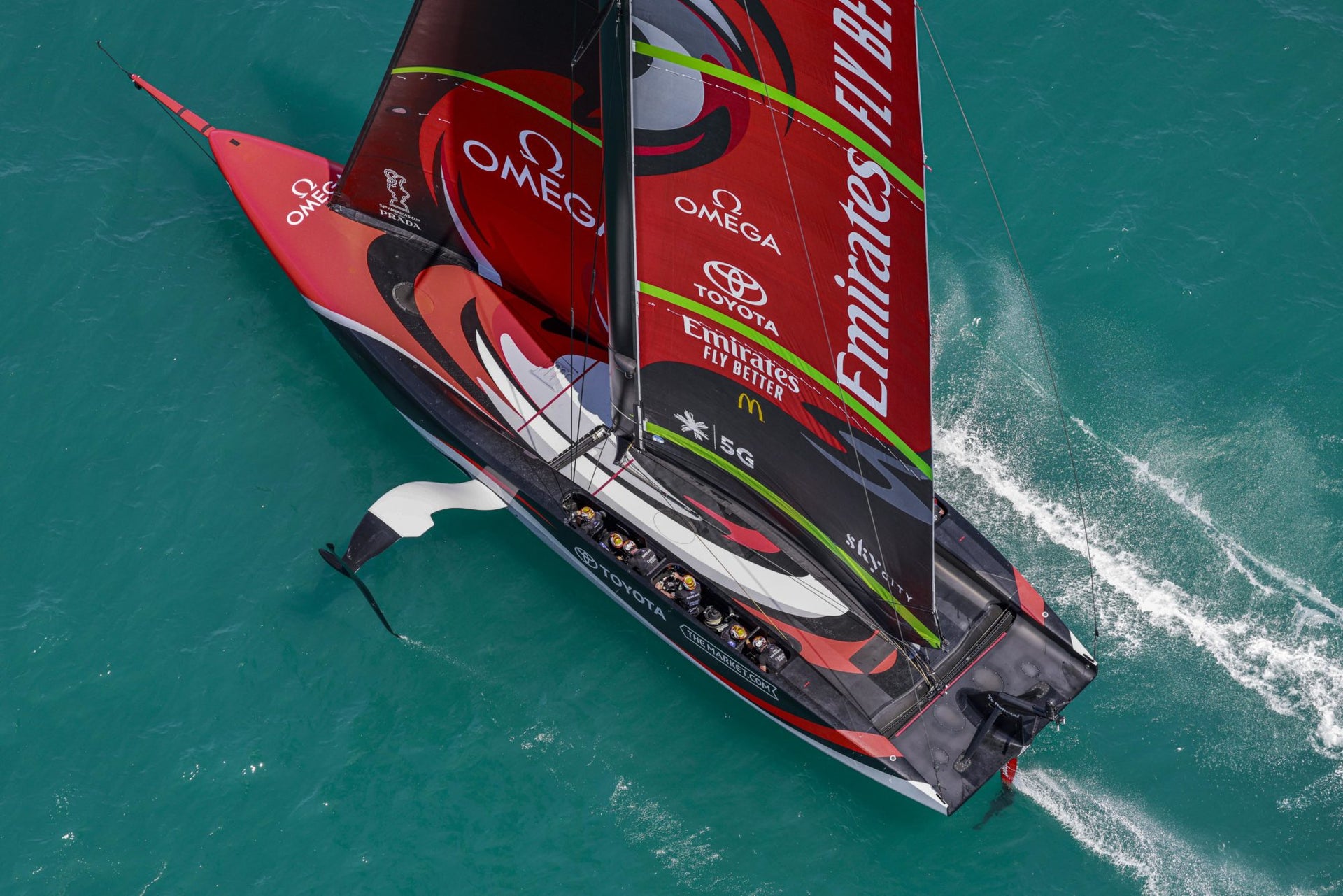
BEHIND THE SCENES: EPISODE 5
GO BEHIND THE SCENES WITH EMIRATES TEAM NEW ZEALAND’S GLENN ASHBY
Episode 5: North Sails x the 36th America’s Cup
As one of Emirates Team New Zealand’s sailors and sail trimmers, Glenn Ashby is a core member of the team. This is Ashby’s fourth America’s Cup, and he’s amazed with how the sport has evolved over the years from massive multihulls to flying monohulls. It’s challenging but incredibly rewarding. “What we’re doing now and how we’re pushing things is extremely challenging. We’re really pushing boundaries that have never been done before,” he said. One of the secrets to winning the America’s Cup? Teamwork.
READ MORE
READ MORE
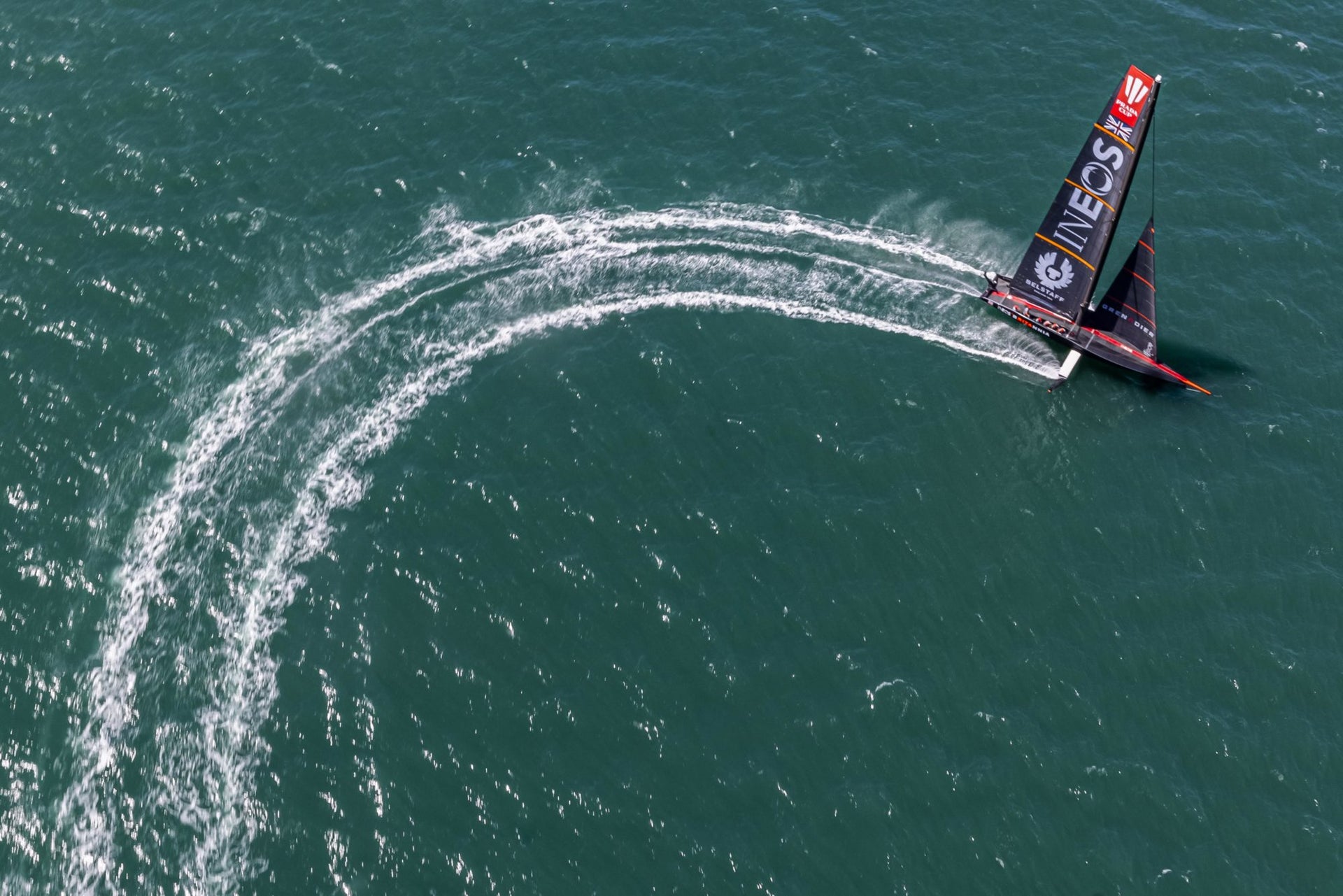
BEHIND THE SCENES: EPISODE 4
As one of North Sails cutting edge designers, Gautier Sergent worked with INEOS TEAM UK in the 36th America’s Cup. As someone who strives constantly to push the limits and refine new design, Sergent is never satisfied with average. “In the sailing sense, the America’s Cup is the Holy Grail of the technology and the performance,”.
READ MORE
READ MORE
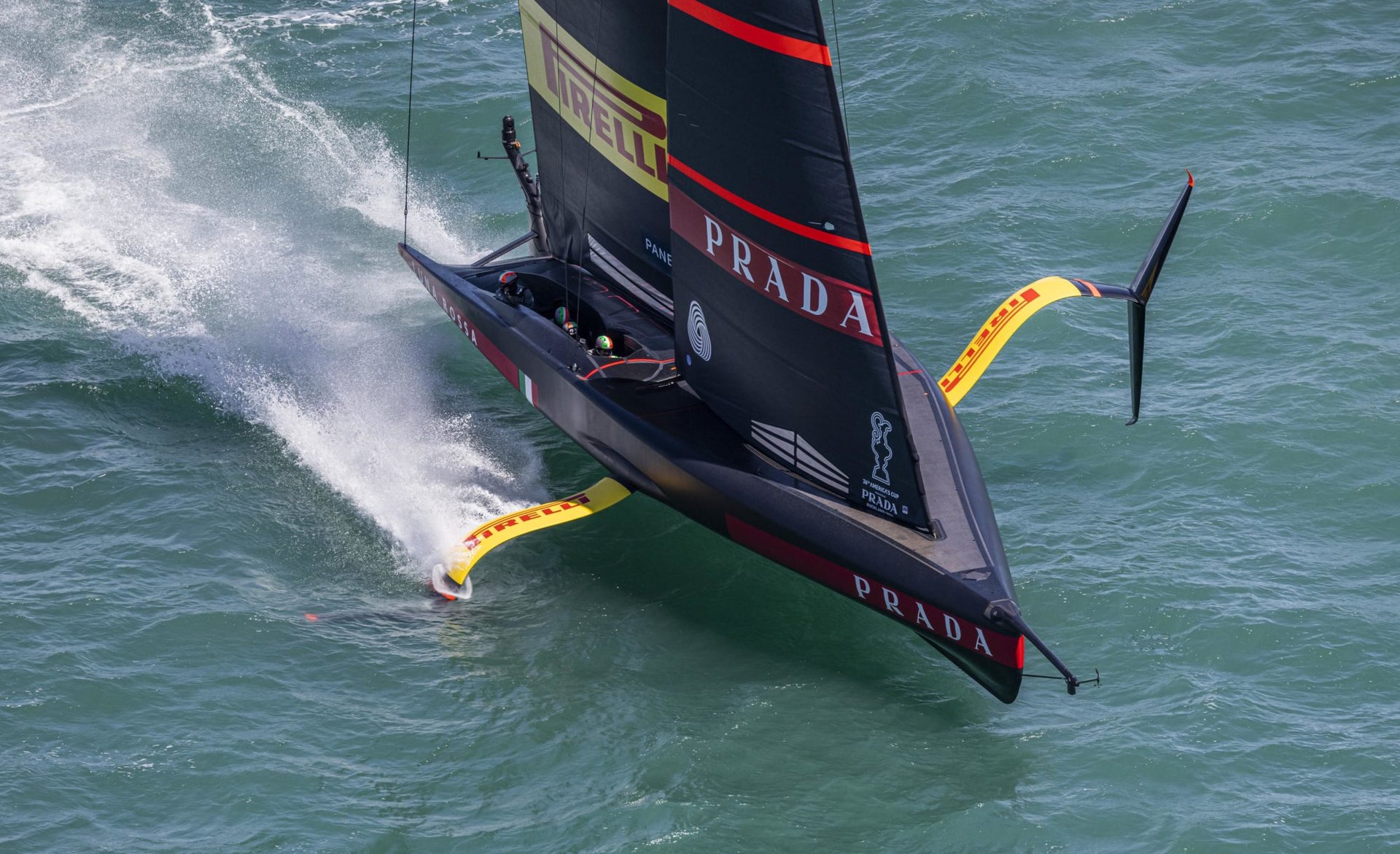
BEHIND THE SCENES: EPISODE 3
GO BEHIND THE SCENES WITH LUNA ROSSA PRADA PIRELLI SAIL DESIGNERS
Episode 3: North Sails x the 36th America’s Cup
“For a sail designer, being involved with the America’s Cup is a dream come true,” said Marco Capitani, one of Luna Rossa Prada Pirelli’s sail designers. With Luna Rossa Prada Pirelli, the sail design is looked after by Capitani and his fellow North designer Juan Garay. Each designer brings their unique perspective and expertise to the project, Garay devising the concepts and Capitani keeping a hawk-eye watch over the performance details. This really allowed both designers to share a lot of innovative ideas in the America’s Cup—an event they both agree is intense, demanding, and a dream come true.
READ MORE
READ MORE
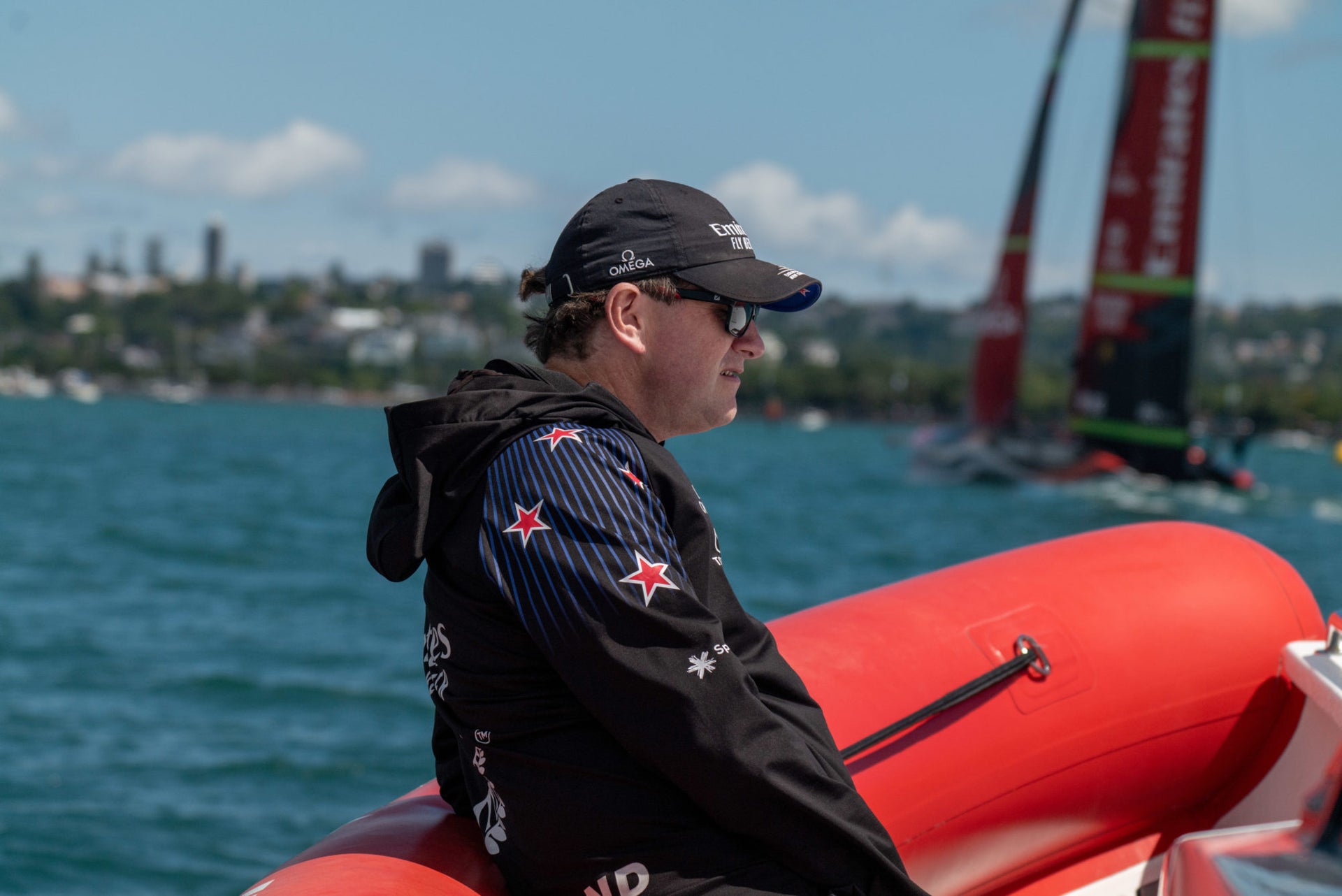
BEHIND THE SCENES: EPISODE 2
Joining North Sails in 1988, Burns Fallow is the lead sail designer for Emirates Team New Zealand and has been at the forefront of sail design for the Kiwi team ever since. He’s seen it all from hoisting sails mid-race in the IACC boats to hard wing sails on 72’ cats; for the 36th America’s Cup, Fallow was one of the central figures in bringing to life the twin skin mainsail concept.
READ MORE
READ MORE
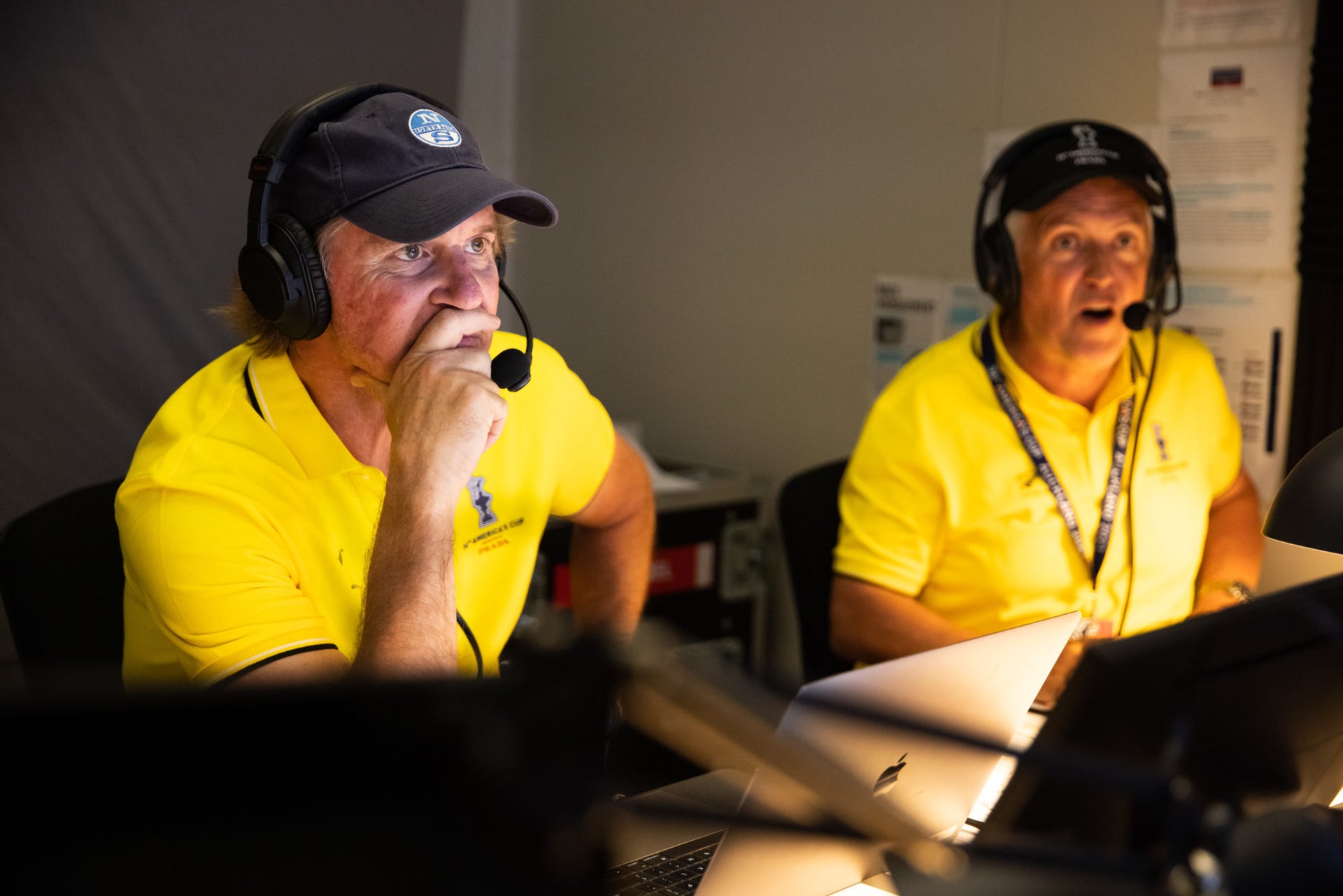
BEHIND THE SCENES: EPISODE 1
GO BEHIND THE SCENES WITH TV COMMENTATOR KEN READ
Episode 1: North Sails x the 36th America’s Cup
Ken Read, President of North Sails and Executive VP of North Sails Technology Group, is not sailing in the 36th America’s Cup, but he’s doing his best to make sure you enjoy (and understand) it. As one of the four TV commentators, Read is bringing to life all the action as it unfolds on the Hauraki Gulf in Auckland, New Zealand. He is also wearing his North Sails hat, and he is fully aware that the partnership between North Sails and the America’s Cup is putting the industry leader on the fast-track for sailmaking evolution and innovation. “We couldn’t do it without the America’s Cup,” Read said. “For North Sails, the America’s Cup is a fast-track design evolution. We’re constantly climbing the ladder for product development for our company. I know how much these teams are counting on us. We need to deliver better than what they expect because that’s what we do.
READ MORE
READ MORE
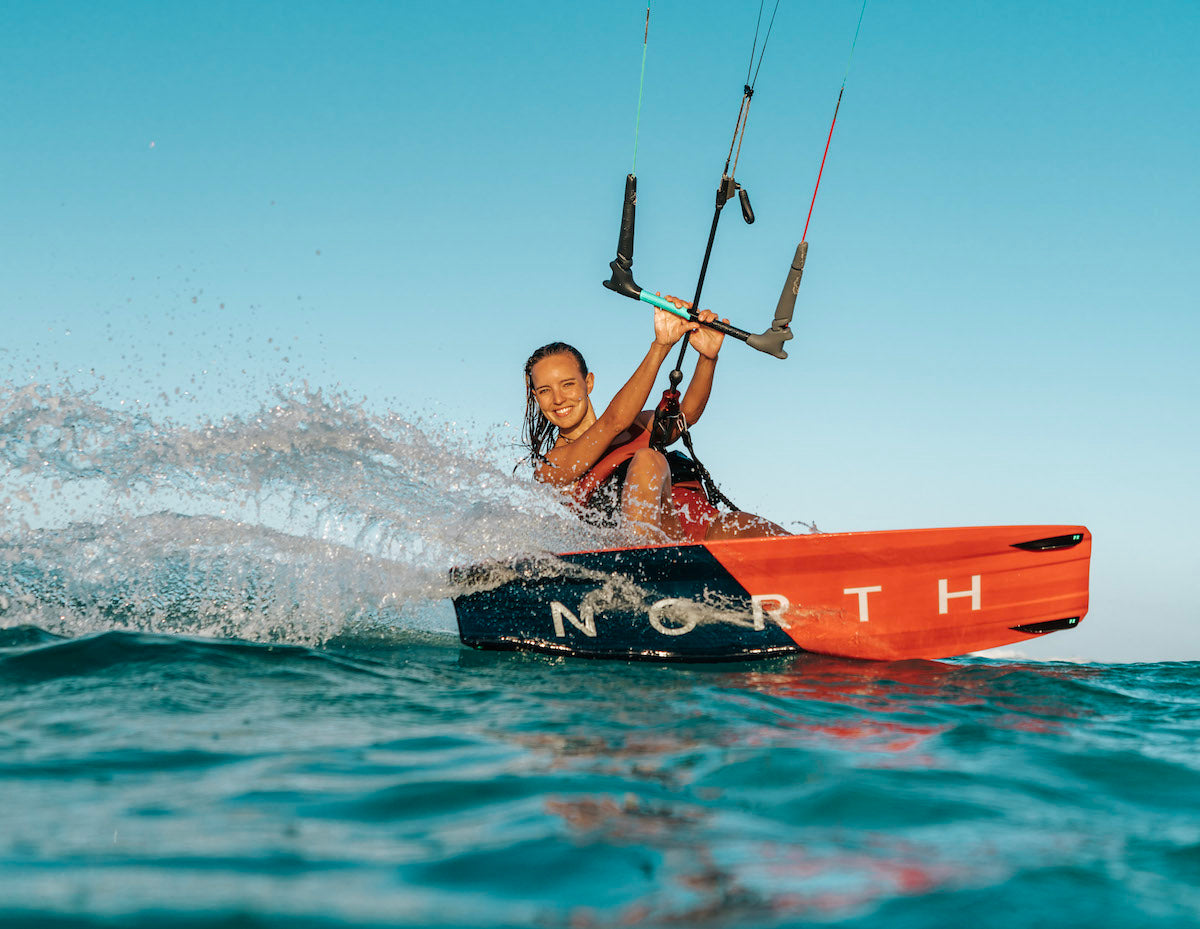
HOW DO YOU CHOOSE TO CHALLENGE?
Today we celebrate International Women’s Day with the global theme “Choose to Challenge”. A challenged world is an alert world. Individually, we’re all responsible for our own thoughts and actions – all day, every day. We can all choose to challenge and call out gender bias and inequality. We can all choose to seek out and celebrate women’s achievements. Collectively, we can all help create an inclusive world. From challenge comes change, so let’s all choose to challenge.
Below we’ve highlighted some of many amazing women in our sport who have shown their leadership, dedication, professionalism, drive and compassion for being on the water. Today we celebrate water women all over the world who are leading the way, teaching others and sharing their stories and experiences. #choosetochallenge #IWD2021
📸 David Troeger @jetlag
“Every day I am out on the water living the life of my dreams, I choose to challenge together with girls and women from all over the world, to unite through our passion for kiteboarding. We become one with what we do…until the point where the challenge is no longer a point of attention, as the natural expression of our love and passion proves enough.” – Annabel van Westerop
Annabel van Westerop grew up with salt in her hair and sand between her toes in Aruba. This spirit is shown in her riding, which is powerful, yet collected. Despite taking her passion for kiting to the next level by joining the International Sales Team at North Actionsports in the Netherlands, Annabel still makes time to follow the dream.
“I choose to challenge because together every individual can make a collective change for the greater good. It starts with me. – Libby Greenhalgh
Libby Greenhalgh is a world-renowned meteorologist, She has sailed all her life and spent four years on the Olympic circuit. In 2007, she was hired by the British Olympic Sailing team as team meteorologist and supported the team for the 2008 and 2012 Olympic Games. She served as navigator for Team SCA in the 2014-15 Volvo Ocean Race, helping them post a historic leg win and finish 3rd in the In-Port Series.
“Happiness for me is living my dreams and achieving them, and learning new things about myself through getting out of my comfort zone.” – Katrin Kerr
Katrin Kerr is a bluewater cruiser, liveaboard, and chef. Katrin, her husband and son set sail from Spain last year and have been cruising all over the world since. Sharing their passion of sailing and the ocean with their son Kilian, Katrin passes down the teachings from her grandparents who were fellow cruisers.
📸 Billy Black
“The sport of Sailing is continuously evolving, advancing & transforming… which in turn requires those who compete to be forever learning and adapting. I challenge myself every day to expand my skill sets, and challenge the sailing world to embrace those with talent, regardless of gender, color or orientation.”
– Suzy Leech
Suzy has spent her life racing sailboats and was known as “Suzy Bowchick” in the 1995 America’s Cup. She has also sailed as helm, tactician, and navigator on everything from J/70s to Superyachts. She has won over 30 International regattas in 15 separate classes, including three world championships. An Aerospace Engineer, Suzy started her career developing data systems for NASA’s International Space Station. She currently develops database-driven websites, and has conducted remote expeditions for National Geographic, UNESCO and ESPN. She has also worked both in front of and behind a TV camera – commentating, producing, and filming onboard for ESPN.
📸 Jean-Louis Carli/Alea
“Being the first woman is good, but it was never my first objective. We must dare to take the plunge and look at examples of women who have been able to do so to give ourselves courage.” – Clarisse Crémer
Clarisse Crémer is an offshore sailor having competed extensively in the Figaro class before progressing to the IMOCA 50. Her 12th place in the 2020–2021 edition of the Vendée Globe, with a time of 87 days, 2 hours and 24 minutes, is the world record for a single-handed, non-stop, monohull circumnavigation by a woman.
📸 Oakcliff Sailing
“I prefer to be challenged by conditions and competition rather than by people standing in my way. But I will continue to fight to make a career in sailing a bit easier for the next woman.” – Dawn Riley
Dawn Riley is one of the best-known sailors in the world. She was the first woman ever to manage an America’s Cup syndicate, and the first American (man or woman) to sail in three America’s Cups and two Whitbread Round the World races. Since 2010, she’s used her own experience to help others become sailing professionals, as the Executive Director of Oakcliff Sailing.
📸 Martin Keruzore
“I have always competed against men, and I have always challenged myself to become the best I can be so I can compete on a level playing field. Success comes through perseverance, a lot of hard work, chasing opportunities and a little bit of luck. Nothing is impossible.” – Carolijn Brouwer
Carolijn has sailed in three Olympics and was the only female in the Open Tornado Fleet at the 2008 Games. She’s won the World Sailor of the Year award twice, and was the first female to win Round Texel, the biggest catamaran race in the world. As part of the Dongfeng race team, she became one of the first two women to ever win the Volvo Ocean Race (2017-18).
📸 Juerg Kaufmann
“Gentlemen who run our sport, women who choose it – from today, open your eyes. Ask ‘why” there’s such a thick male veneer that surrounds what should be a gender equal sporting playground. Think about YOUR own thoughts and actions! From challenge will come change…choose to challenge.” – Shirley Robertson
Shirley Robertson OBE made history by becoming the first British woman to win Olympic Gold Medals at two consecutive Olympic Games. She’s in Scotland’s prestigious Sports Hall of Fame, holds a role as Deputy Lieutenant for the Isle of Wight and is one of the most recognisable faces from the sport of sailing. With a reputation for a strong work ethic and obsessive attention to detail, away from the Olympic arena Shirley continued her sailing career, blazing a trail for women in the sport as the first ever female skipper in the ground breaking Extreme 40 Sailing Series. From luxury superyachts to grand prix race boats, out on the water Shirley’s CV is extensive.
“If it were meant to be easy, then everyone would be doing it.” – Stacey Jackson
Stacey has raced 11 Sydney Hobarts and won line honours onboard Wild Oats. She’s also a regular at TP52 regattas, once sailed a Mumm 30 World Championship, and has completed a Rolex Fastnet Race. She was part of Team SCA for the 2014-2015 Volvo Ocean Race.
“Challenges make me feel alive, and drive me everyday to be the best version of myself. Chasing dreams is what I’ve been doing for 15 years now, and I’m looking forward to what’s up next!” – Francesca Clapcich
Francesca began sailing in Trieste, Italy in 1999. After graduating from the Nautical Institute of Trieste and San Raffaele University with a Sport Science degree, she joined the Italian Air Force and served as a First Senior Airman. She sailed in two Olympics; 2012 in the Laser Radial, and 2016 as crew in the 49er FX. She won both the World and European Championships in 49er FX in 2015, and placed in the top five at the 2013, 2014 and 2016 World Championships and the 2013 and 2015 European Championships. Francesca was part of the Turn the Tide on Plastic team for the 2017-18 Volvo Ocean Race and was skipper of the 90’ Maxi Golfo di Trieste Wind of Change.
📸 Georgia Schofield
“I choose to challenge to inspire young female sailors to forge a career in the marine industry.” – Bianca Cook
New Zealander Bianca Cook grew up in a boatbuilding family. After starting out in dinghies, she quickly progressed to classic yachts, match racing, and superyachts. She’s accumulated over 100,000 offshore miles, including the 2017-18 Volvo Ocean Race onboard Turn the Tide on Plastic. She also sailed on Wild Oats X as part of the Ocean Respect Racing Team, the first professional all-female crew to compete in the Rolex Sydney to Hobart.
📸 Luis Lemes /Lanzarote / Winter Series
“Like a rising tide lifts all boats, we feel that a respect for the talents of each individual lifts all women to accomplish greatness.”
– Nikki Barnes + Lara Dallman-Weiss
Nikki Barnes and Lara Dallman-Weiss teamed up to win US selection for the 2021 Olympics in the women’s 470. Nikki grew up on St. Thomas, USVI and is a commissioned officer in the US Coast Guard. Lara grew up in Minnesota and has worked as a pro sailor and occasional drone pilot. Their final qualifying regatta (the 470 Worlds) wraps up on 13 March.
READ MORE
READ MORE
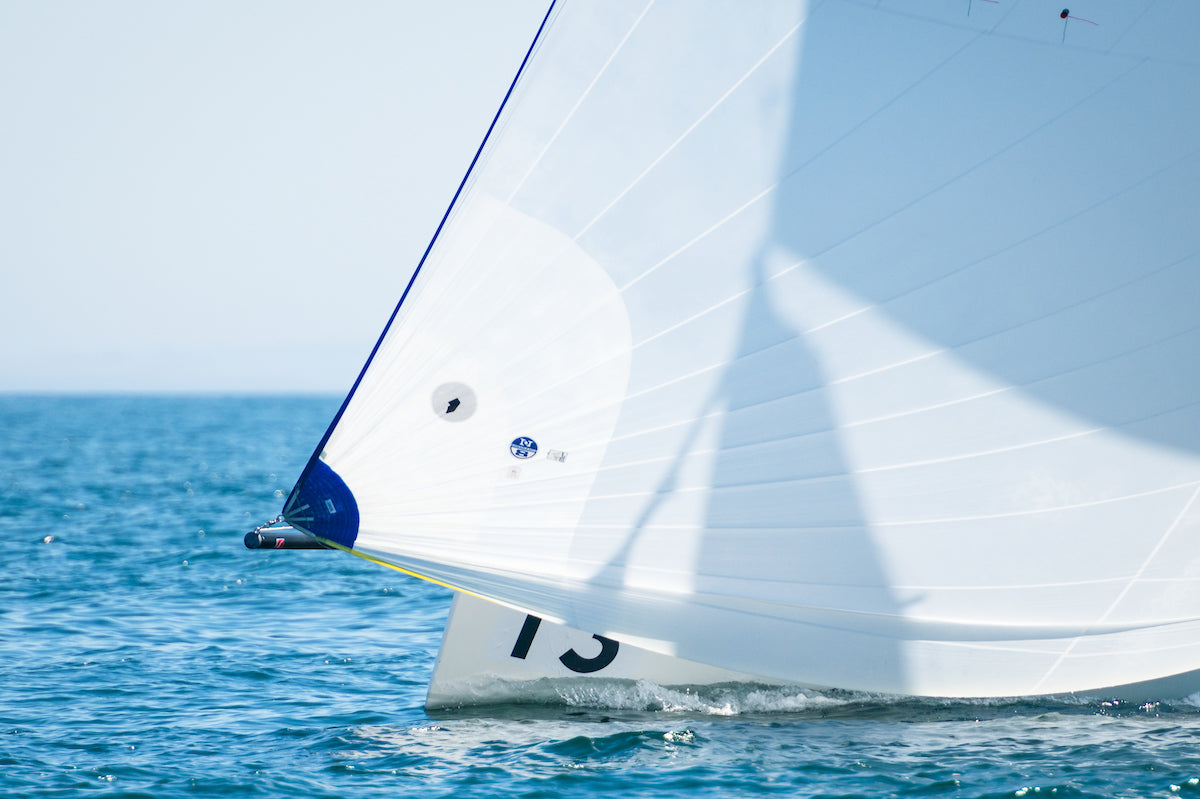
SPECIALTY REACHING SAIL GUIDE
SPECIALTY REACHING SAIL GUIDE
Options For All Angles
Wind Seeker
This is a very light sail for drifting conditions. Used when a full size, heavier weight sail will not pressurize or remain stable. Wind Seekers are commonly made in forgiving cloth to handle slatting conditions and designed to sheet at or near the shroud base, to make tacking and sheeting in zephyrs easier.
Jib Top
A Jib Top is a high-clewed overlapping headsail for beam reaching in medium to strong winds. Conventional headsails are designed with a lower clew, which is optimized for close-hauled sailing. As you ease the sheet of a conventional headsail and bear off, you lose control over the leech. This sail is shaped to tolerate the extra twist that results from easing the sheet while not being able to hold the lead down and out, due to deck limitations. The Jib Top design is designed to sail wider apparent wind angles while still allowing the trimmer control over the twist and leech profile of the sail. The sail is usually sheeted using the spinnaker sheet, which is “tweaked” to the deck using an adjustable purchase system. The Jib Top is a faster sail on a reach than a conventional low-clewed Jib or Genoa.
Blast Reacher
A Blast Reacher is a non-overlapping sail, similar in concept to the Jib Top. Used in heavier wind than the Jib Top, or in place of a Jib Top on boats that do not carry overlapping headsails.
Genoa Staysail
The Genoa Staysail is a small jib (often furling), which is set inside the fore-triangle and used for reaching in more than eight knots of wind. The primary purpose of the Genoa Staysail is to add power and speed to the boat when reaching by helping to counteract weather helm. It provides more balance on the helm when it’s set inside a Genoa, Jib, Code Zero, Jib Top or even the A5. The helmsman uses less rudder angle, resulting in a higher average boat speed than with a staysail. The Genoa Staysail is most commonly used with a Jib Top or Jib sheeted on an outboard lead from 40 degrees apparent wind angle. Once the jib car goes outboard, or is re-led to the rail, the Genoa Staysail can generally slot into the gap that results with good effect. The Genoa Staysail can also be used in combination with a Code Zero or fractional A5 when faster boat speeds will move the apparent wind angle forward and load the helm. The Genoa Staysail is a very versatile reaching sail and is definitely worth taking into consideration for any offshore sailing. Some boats will use a dual purpose Storm Jib / Genoa Staysail.
Spinnaker Staysail
A Spinnaker Staysail is a small high-clewed furling sail used downwind with a spinnaker. It is generally used between 10 and 25 knots, hoisted on the jib halyard and tacked just aft of the headstay on the bow. It can also be tacked slightly to weather. These sails are commonly used on boats with either bowsprit configurations or conventional spinnaker poles. The Spinnaker Staysail can also be used as a Wind Seeker when the tack is brought forward to the bow.
Mizzen Staysail
Typically a close reaching Jib hoisted on the mizzen mast and tacked near the mainmast. This sail may also be a downwind sail from the G Series Gennakers or S Series Spinnakers products.
READ MORE
READ MORE
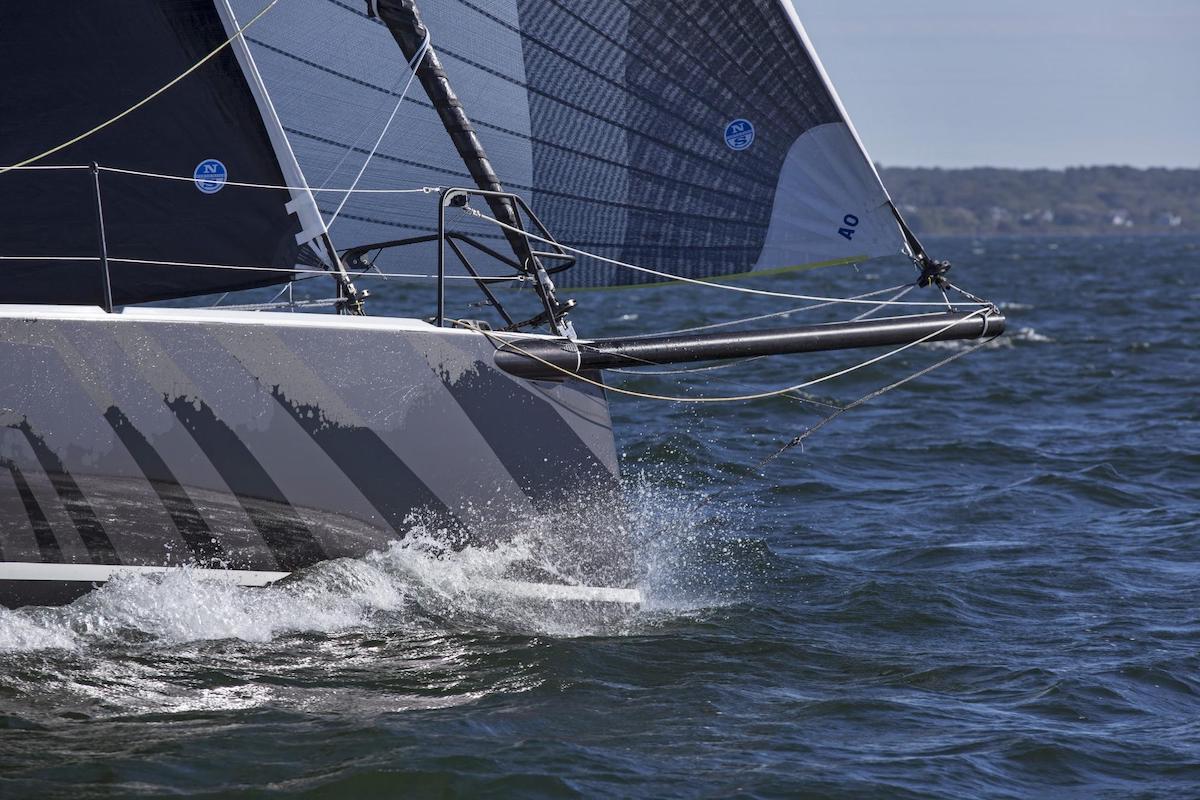
CODE SAILS: WHICH ONE IS BEST?
CODE SAILS: WHICH ONE IS BEST?
North Experts explain how to decide which Code sail is best for your sailing
Even if you already understand what a Code sail is, it might not be clear why there are three different types—or which one will best fit your boat and your type of sailing. First, a quick refresher: Code sails fill the large gap between upwind sails and downwind sails, from about 65° to 135° True Wind Angle. They are free flying with a relatively high clew, sheeted like a spinnaker to an aft lead. In most cases, these sails will be furled when not in use.
To cover such a large range in true wind angles, there are three different types of Code sails. Each has a different “sweet spot” – a specific wind speed and angle where it’s most efficient.
Code Zero, Code 65, and Code 55
The Code Zero was originally designed to measure in as a spinnaker, with a minimum midgirth of 75% of foot length. Code 65 and Code 55 are named for the geometry of the sail; the number specifies the ratio between foot and mid-girth. For a sail with a foot of 10 meters, a Code 55’s mid-girth will be about 5.5 meters, while a Code 65’s mid-girth will be around 6.5 meters.
What is the best code sail for my boat?
There’s a lot that goes into that answer. First, your boat’s details are important: weight, righting moment, deck layout, etc. We also need to factor in your preferred type of sailing. Grand Prix racing has extremely specialized requirements, but for club racing and cruising, we can make some generalizations.
One way to upgrade your Code sail is to go with a Helix Structured Luff. Helix Code sails are great for both racers and cruisers on any sized boat, as this modern design philosophy produces sails with greater range. Sails with Helix Structured Luff are more versatile than a typical Code sail, and their optimized shape makes them easy to furl, self supporting and forward projecting.
Best Code Sails for Racing
If you want to boost your racing results, the best sail is probably a Code Zero. Rating rules like ORC and IRC consider it a downwind sail, which means they won’t penalize the extra midgirth. If you often sail tight reaches in light breeze, though, a Code 55 or Code 65 might well be worth any rating penalty.
IRC and ORC are both moving toward fairer ratings for Code sails with girths of less than 75%, which increases your freedom to choose the best addition to your racing inventory. Your North Sails expert can give you the latest information and help you identify the best sail for your racing.
📸 Alex McKinnon Photography
Best Code Sail for Cruising
Whether your cruises last a day, a week, or a year, Code sails are a blessing. Most modern cruising boats have jibs with a very narrow top section. Reaching with a main and jib will leave the boat quite underpowered—an unsatisfying sailing experience.
Cruisers require a sail that is easy to handle and safe to operate, so your best choice will be either a Code 55 (if you like to sail high angles in light air) or a Code 65 (if you usually sail deeper angles in stronger wind).
For most modern cruising boats, a usual personal favorite is the Code 65. This single sail will cover an incredible range of angles and wind speeds, from 65° in 6 kts true wind speed up to 125° in 16 kts. When paired with a Helix Structured Luff the sail will project forward and to windward for an added performance boost, while providing a safe, reliable and easy furl at the end of your day. Helix Structured Luff is available for all North Sails Code sails, whether cruising or racing.
How to set up your boat for a Code sail
Code sails attach to the boat in front of the headstay, though the exact location will vary from one boat to the next. If your boat isn’t already rigged for Code sails, make sure to contact your boatbuilder and/or mast manufacturer to evaluate the loads.
On race or club race boats, you may want to fly both jib and Code sail at the same time; you should have a tack point that’s far enough forward to get good separation between the two.
For cruising, you can either attach the tack to the stem fitting or rig a short sprit.
Need help picking the best Code sail?
If you’re still uncertain about what your next Code sail should be, contact your North Sails expert. We can help analyze your specific needs and figure out the best type of Code sail for you.
Contact an Expert Learn More Request a Quote
📸 Ian Roman
READ MORE
READ MORE
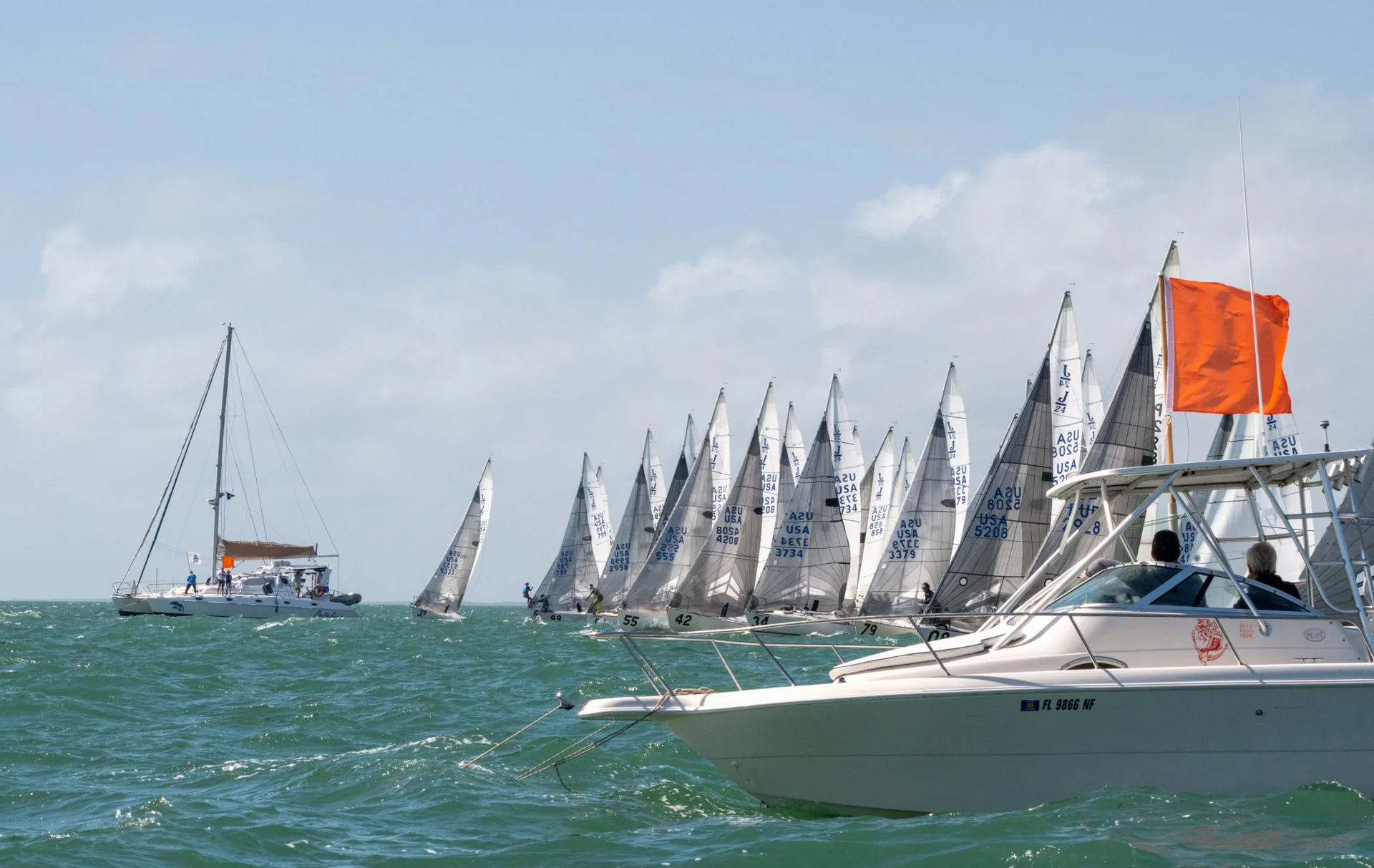
J/24 RACING TIPS FOR ALL CONDITIONS
J/24 RACING TIPS FOR ALL CONDITIONS
Racing Takeaways: The 2021 Midwinter Championship
📸 Chris Howell
The 2021 Midwinter Championship in Miami, FL supplied a variety of conditions for the 29-boat fleet. North Experts with the help of Midwinters skipper John Mollicone broke down each race day by wind speed and explain the changes they made with their rig tune, body weight, crew roles, and sail trim. Although the racing took place in Florida, these tips can be related to any regatta coming up depending on wind conditions and sea state.
Tips for light to medium air: 6-10 knots
Tiny bit of weather helm in under 6
Consistent heel angle, always
Send one or more down below to get low in chop
More heel helps you stay powered up in flat water in the lightest winds
Avoid getting close to other boats to eliminate chop and disturbed air
20/15 shroud tension
Move the mast butt aft ⅜”
Look for -3 fingers on the headstay
2.25 to 2.50 inch pre-bend on the mast
Stay powered up and avoid the lulls!
📸 Chris Howell
In lighter conditions, the trimmer should stand down below and be agile and able to move up to the rail as the wind picks up. The trimmer controls the angle of heel the most. Two forward crew are last to go below if needed, but keep weight forward in light conditions.
Skipper/Trimmer Tips for lighter air:
Trim the main in hard, two handed when fully powered up so you can point a little higher, 8 to 10 knots range with everyone hiking
Trim the genoa 2-3” off the spreader tips when fully powered up, ease to 4-6” off spreader tips in the lulls.
Move the genoa car one hole forward to power up the bottom of the jib.
North Expert Paul Abdullah commented on trim,
“I like to move off the rail and move forward. When I look at other boats who have their trimmers on the leeward side by the winch, it’s not long before we are sailing right by them. Body placement is key for the trimmer in light air. I avoid sitting to leeward by the winch, if your weight needs to be to leeward it is better to do that below deck.”
📸 Chris Howell
Trimming the Genoa: Medium to Heavy Air
“It is a common misconception to trim harder in more breeze, said John. This is not a solution. You actually point higher by easing out, sometimes a full foot off the spreader tip. If you see 8” off the spreader tip it’s not a bad thing if things are working for you.”
How can you tell?
If the boat feels good, your speed is good, and you are playing the main and vang sheeting in the puffs, you will be in good shape.
Skipper and trimmer should work together with sail trim.
Never let the boat heel over too much. When you feel bound up, ease the genoa 5-6” off the spreader tips. Easing off the backstay will also help get your power back in the major lulls with the rig tight.
Rig tuning tips: Medium to heavy air
When you move your mast, 2 to 2.25” of prebend is always a good starting point.
Headstay tension should go from 3 fingers to a tight 2 fingers.
Having your backstay set up so you can move through a wider range is important.
“The mast butt on J24 is a powerful tool,” said North expert Nick Turney. “When the breeze increases you need to feel comfortable moving your mast. Ideally you move the mast at the dock before you leave. When you don’t make necessary adjustments to rig and mast, you will notice that you are losing punch. If your main is flattened too much, this is a direct indicator that your settings are not aligned.”
📸 Chris Howell
Tips for Breeze On and building: 13-18 knots
27/24 shroud tension
When the wind builds, go plus 1/plus 1 – stick to full turns if possible. It’s easier to keep track.
Moved mast butt forward, ⅜ to ½” depending on age and stiffness of mast and boat.
If the lulls are big, you’ll need power. 27/24 is great for lulls and only a tad loose in the puffs.
The North Sails tuning guide is a great place to get your set up numbers.
Mainsail set up is important, especially in bigger breeze. If you notice wrinkles from all the clew up towards the spreaders at a 45-degree angle, this is a telltale sign that you need to go tighter on the rig, sometimes an up plus 1/plus 1 can help get your main looking better, which in turn allows it to work better. You will be able to pull on more backstay, and cunningham. The cunningham for example is not easily adjusted from the rail, so we minimized how much we moved our bodies because we needed weight out mostly, we would leave the cunningham as-is and ride it out. Another thing that is crucial is crew weight. Keeping it together and close makes hiking more effective.
With the mast settings the same as medium air conditions, it allows for depth in the mainsail while keeping the backstay tight. Weight aft together hiking hard is a good look.
When changing gears, it’s important to define your modes and make adjustments. It’s very important to stay powered up and transition through the modes.
Ask yourself: “What mode do we want to be in?”
Height mode,
normal mode (balanced and going well through the water),
Or fast mode
What are the changes you have to make in the back of the boat to accomplish the different modes?
Trimmers typically call the speed, the tactician may override in certain instances. The driver has the mainsheet and backstay, the trimmer adjusts the genoa sheet accordingly, it’s a constant dialog. Together you are always making sure the boat is going full speed. If you feel like the boat is stuck ease the sails out and get it going again. When the boat stalls the boat goes sideways.
“In Miami for the Midwinters,” John commented, “5.4-5.6 was our normal boat speed. We had our bow down, and our backstay on. We looked more for 5.8 to 6.2 on our velocitek once we got going. It’s nice to gauge where you want to be and see what that feels like.”
📸 Chris Howell
When should we switch to the blade?
Start out with the genoa if you are on the fence. Try moving the mast butt ⅜ to ½” forward, which is a conservative move. Make sure your tension is adequate. In medium breeze 29/31 could work well depending on the age and stiffness of your mast.
Ask yourself:
Can we go upwind without the main flogging?
Does the boat feel balanced?
Are we slipping sideways?
Is our speed a problem?
If things are out of balance, speed is a struggle, and your main is flogging, then it may be time to switch to the blade.
Paul Abdullah commented,
“Understanding the ability of your trimmer is the real question. If you cannot tack the genoa efficiently, then you have your answer.”
The blade is good if the conditions are right for it. The genoa gives you the power and punch for getting through waves. The blade can be sufficient enough if breezy and flat water.
When you are on the edge of the blade in 14-16 knots, you might need to consider a step down on the shrouds and jib lead forward to power up the Jib. Keep in mind, using the genoa at the top end of the wind range means you have to pull the halyard on harder, move the lead back one as you go tighter on the shroud tension.
“On a shifty day with flat water, the blade could be the best weapon of choice. It varies for every team, so you have to do what is best for you, depending on what you are comfortable with,” said John.
📸 Chris Howell
Upwind strategy
Find the pressure
Set yourself up for the long term play
Get into the pressure before making a decision on your next move
It’s OK to hang in a thin lane as long as its the long tack
Try to figure out what the long tack is before the start so you can position yourself on the starting line
It can be a high risk to win the pin and you might not be able to tack so you have to recognize that early on
Choosing the midline works well if the pin is crowded. It can also open doors later on up the beat.
Minimize your maneuvers
Tacking with the genoa in mid-range conditions will result in ¾ boat length loss. Chop and puffy conditions tacks are costly using the genoa especially. We made sure our tacks counted. If we wanted to make a tactical decision, we made sure we were in the best pressure first.
Downwind Strategy
Balance crew weight
Get around the windward mark and ask yourself: do we want to stay high or go low? After the offset, are we jibing early?
All things should be openly discussed as the pole is being put on and you have almost arrived to the offset.
Steer clear of potential issues
Identify: Is there anyone around us? Are we playing defense? Recognizing scenarios early and talking about it is the key to a successful windward mark rounding and setting up for a good downwind.
📸 Chris Howell
Settling in for the Downwind Leg
After the kite is set, it’s important to get settled in. Depending on location, remember to check for weeds. If it’s windy, send the lightest person back to do this. It is hard to drive and check for weeds, especially in heavier air conditions.
Crew weight Downwind
Changes with weight will help steer the boat. The trimmer and driver are mostly in the same spots all the time downwind. Driver plays the main, sits to leeward. Trimmer stands up on the deck to trim.
Tacticians can take the guy and face outboard to help trimmer.
If it lightens up, the tactician would go below but generally stands in the companionway.
Bow guy went side to side as needed, twings could also move with bowman as both are more agile.
Keep your weight outboard out to the sides.
Keep the boat flat so if the wind increases, there is no risk of the driver losing steering due to instability.
If it is super windy you may consider two forward crew sitting to leeward to help balance.
“Weather heel downwind pole back is my favorite,” John said. “It’s fast.”
📸 Chris Howell
What Gate to Choose?
Find the path of least resistance.
Figure out which side is lifted, and try to round the side that allows you to immediately be on the long tack.
Ask yourself: where’s the competition and where is there less traffic?
Tips for Breezy Conditions Downwind
Bring both twings down, especially on the jibes.
Stacking the leeward (bow and mast) rail is a huge weapon in breeze downwind. Too much weather heel is out of control.
Vang on- be all over it. You need more than normal if it’s breeze-on conditions.
Backstay on just a little for stability.
Broad reach more, don’t sail DDW in puffs or by the lee if things are getting dicey.
📸 Chris Howell
For the Miami Midwinters, the winners used North Sails Fathead mainsail, DX-7TT Genoa, SRB jib, and FR2 spinnaker. Have questions about optimizing your inventory? Get in touch with a North Sails J/24 expert today.
Thank you Chris Howell for your support of the class on and off the water!
Miss the Midwinters Full Webinar Recap? Rewatch and rewind at your own convenience!
Watch Webinar
READ MORE
READ MORE
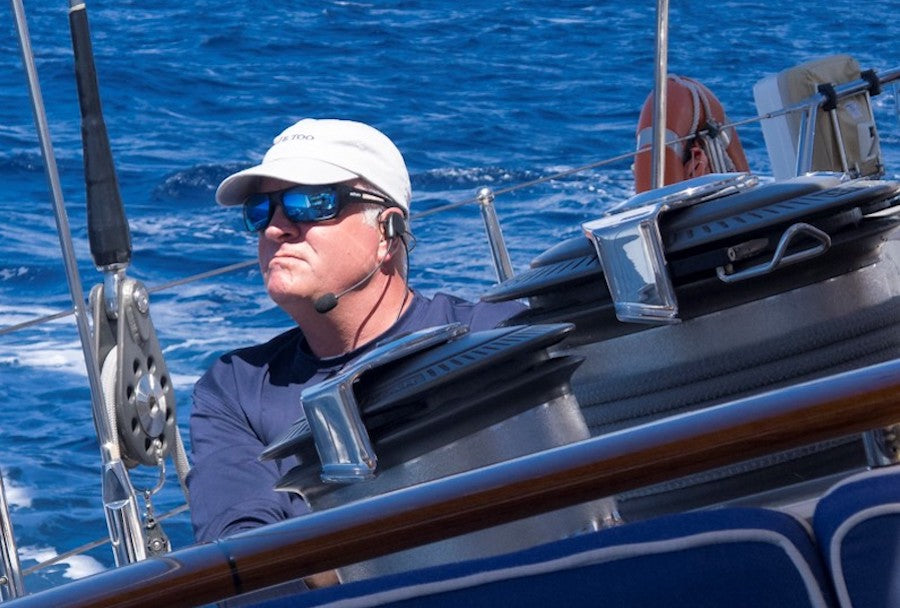
WHO WE ARE: JOHN BAXTER
WHO WE ARE: JOHN BAXTER
Get To Know Your Local Sales Expert
What background do you have in sailing?
I grew up in a sailing family. My parents, sisters, and brother Mark are avid sailors. Mark is also part of the North Sails team. I started in Chicago and spent 10 years sailing in Florida. I did my first SORC when I was 15 and the rest is history! I have been fortunate to sail all over the world in events like the Sydney Hobart, SORCs, California to Mexico races, San Francisco Big Boat Series, Superyacht regattas and in several National and World Championships.
What boat/classes do you have experience?
Over the years I have done a lot of different sailing on many different designs. Cruising boats to racing boats, and a lot of the Offshore One-Design classes which include the Farr, Mumm30, 40, Corel-45, J/111, J/109, J/105, and the Beneteau 36.7 and 40.7. These One designs have really made for some great racing.
What got you into the marine industry?
Spending my teenage years in Florida I had the opportunity to sail a ton. I became good friends with Peter Grimm (Who now also works for North Sails based in Ft Lauderdale). I started working for him when I was 14 and it grew from there. I sold my first set of sails to a cruising boat client when I was 16 and I was hooked on helping clients enjoy the most from their boats.
How long have you been involved in the marine industry?
37 years today. Over that time I have run race boats, worked in rigging, sold sails, made sails. I have been fortunate to work directly with and alongside of some of the best sailmakers in the world. The actual sailmaking side has helped me within the sales side as I have become familiar with every important detail involved in the sailmaking process.
What do you love most about sailing and what keeps you coming back?
Helping sailors get better and helping customers solve problems is what I enjoy most. Each customer is different and looking for different solutions, which makes it fun and exciting to take on new projects and challenges each day. Our industry is constantly evolving and today its evolving at a faster pace. I learn things every time I get on a boat and every day I spend on the water or making sails. If you ever stop learning, this industry will leave you in the dust!
READ MORE
READ MORE
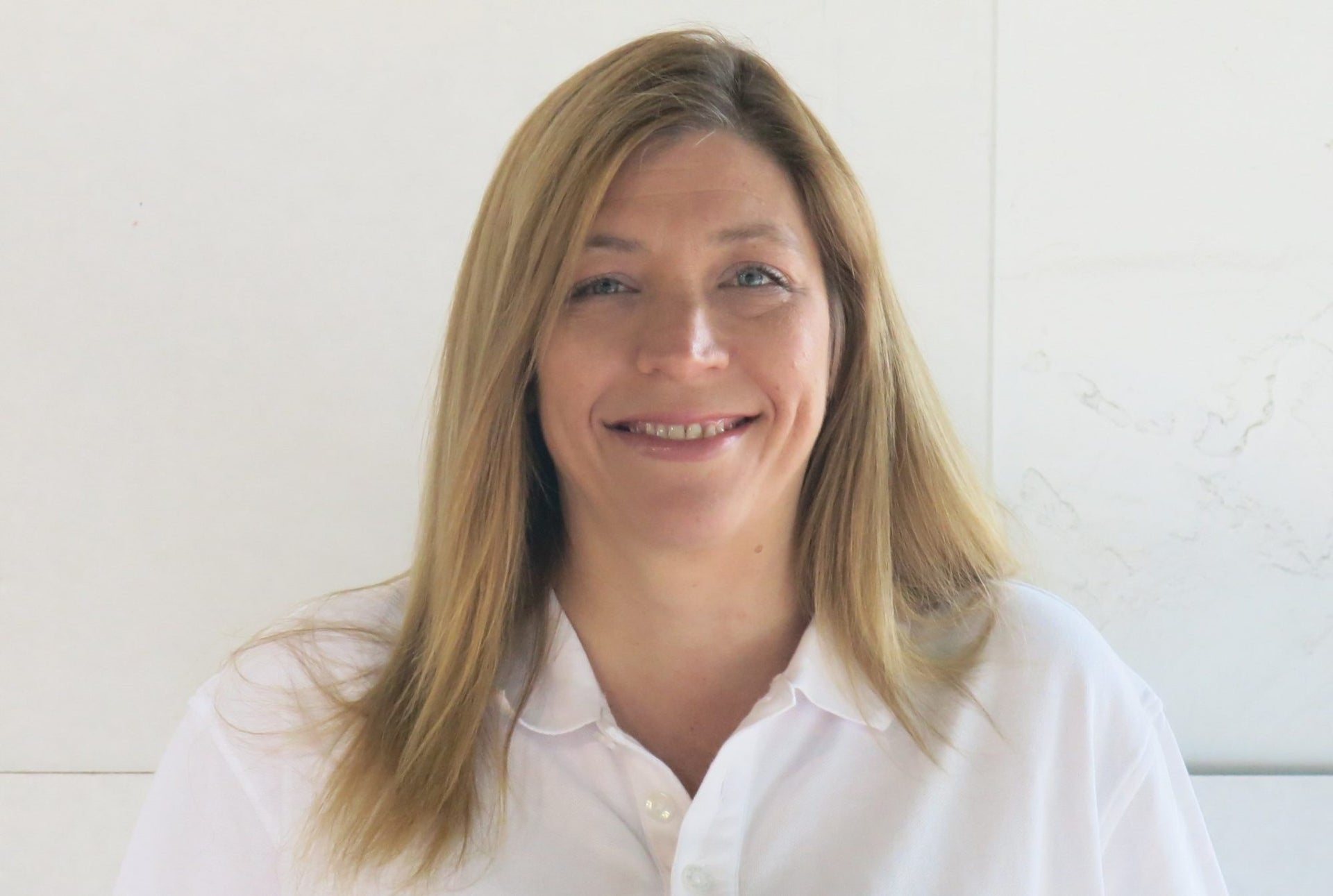
WHO WE ARE: CHRISTINA DONNERMEYER
WHO WE ARE: CHRISTINA DONNERMEYER
Get To Know Your Local Team
How long have you been involved in the marine industry?
I have been in the industry for 25 years. Working at the yacht clubs, and many events. I started in sailmaking over 20 years ago. I began as the office manager and learned how to sew and work on sails. For the last six years, in addition to running the office, I have been making new sails and doing a lot of the service work. Now I’m very well adapted to the service sailmaking side of the business. I appreciate the detail involved in sailmaking.
What do you like most about the Marine Industry?
I like working with and taking care of the customers. So many have come to know me over the years, it like working with family. I also like the joy people have when their sails are ready on time!
What do you do in your spare time?
Ha! Spare time... I have three grandchildren so that pretty much fills my time when I'm not at work.
READ MORE
READ MORE
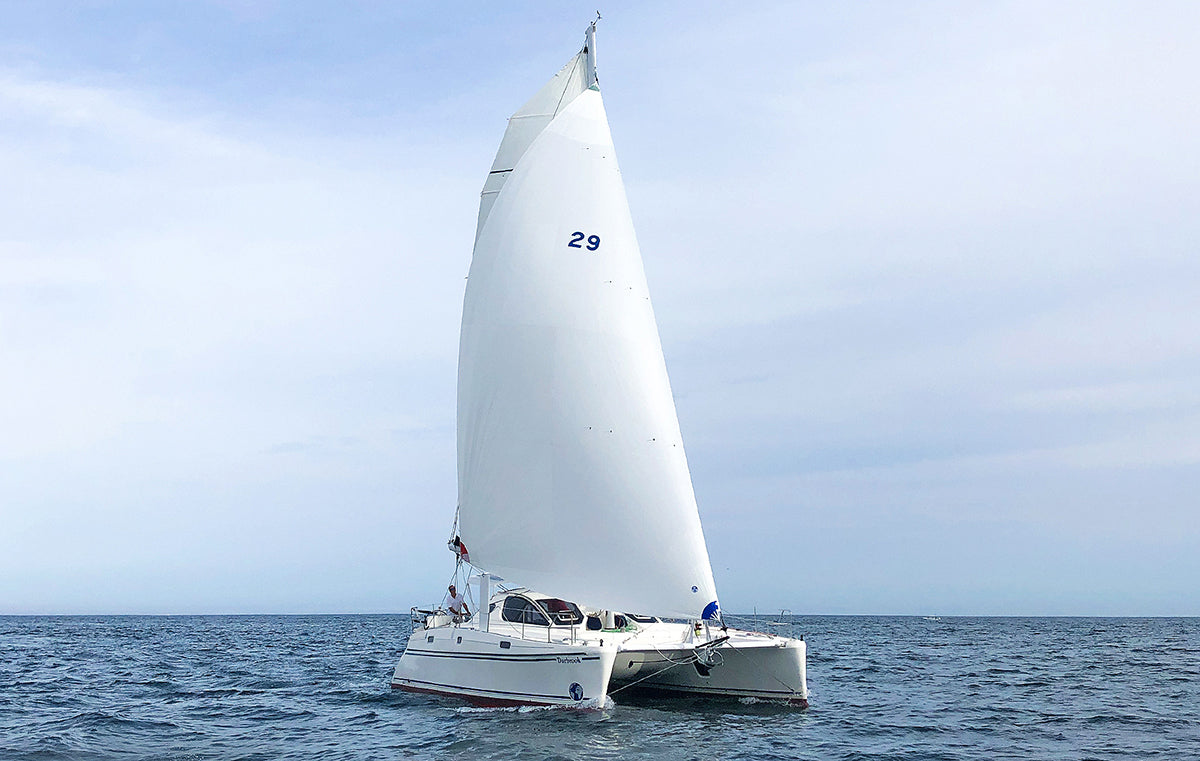
Consejo North Sails
CONSEJO NORTH SAILS
¿Qué es un gennaker?
Se trata de un spinnaker asimétrico fijado a la proa o al botalón que no requiere tangón ni aparejos especiales.
Básicamente, es una vela intermedia entre un génova y un spinnaker simétrico. Su forma asimétrica hace que sea una vela más eficiente en rumbos de largo y través, pero la mayor virtud de un gennaker es su polivalencia y rendimiento en un amplio rango de ángulos, lo que la convierte en auténtica vela multiuso. Puede utilizarse con calcetín snuffer de North Sails o montado sobre un almacenador para poder enrollarlo, y la ausencia de tangón hace que sea más fácil de utilizar que un spinnaker simétrico. La vela perfecta para la navegación de crucero.
READ MORE
READ MORE
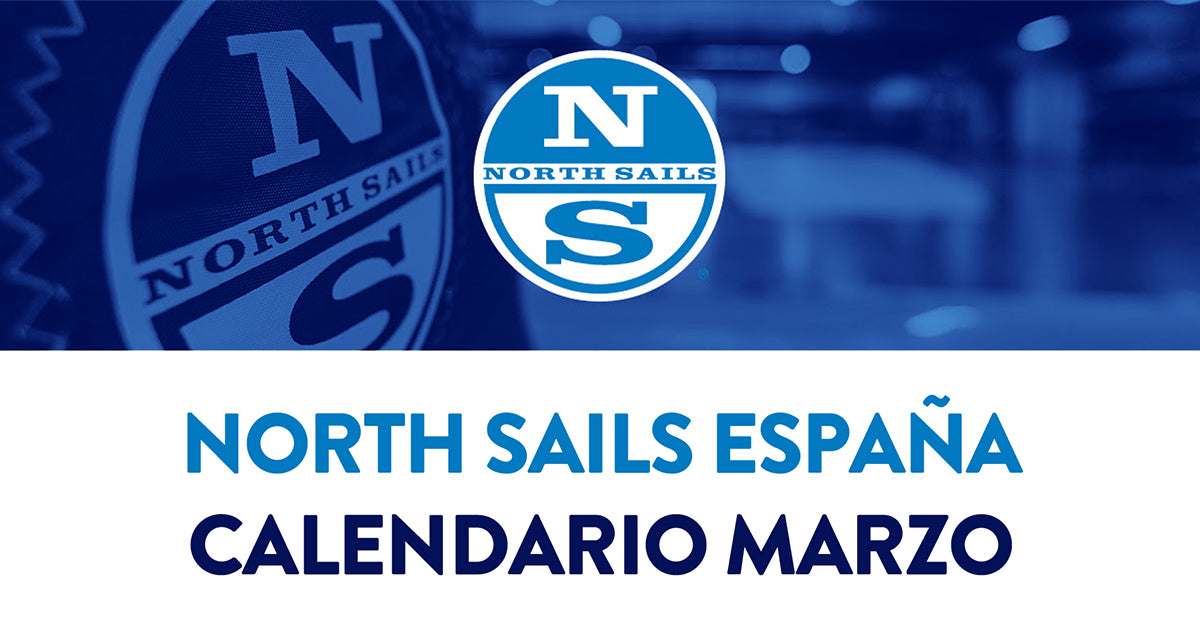
CALENDARIO NORTH SAILS
CALENDARIO NORTH SAILS
La actividad de North Sails España no cesa.
Tras el éxito de nuestros webinars de enero y febrero, y el clinic de 420 impartido en Vigo, ponemos el foco en los próximos eventos en los que participaremos y la esperanza de que la llegada de la primavera devuelva la actividad al calendario de regatas. Nuestros compañeros Hugo Rocha y Gustavo Martínez Doreste participarán en el campeonato del mundo de 470 que se disputará del 5 al 13 de marzo en la localidad portuguesa de Vilamoura, y estarán encantados de resolver cualquier duda sobre el inventario North Sails de One Design.
READ MORE
READ MORE
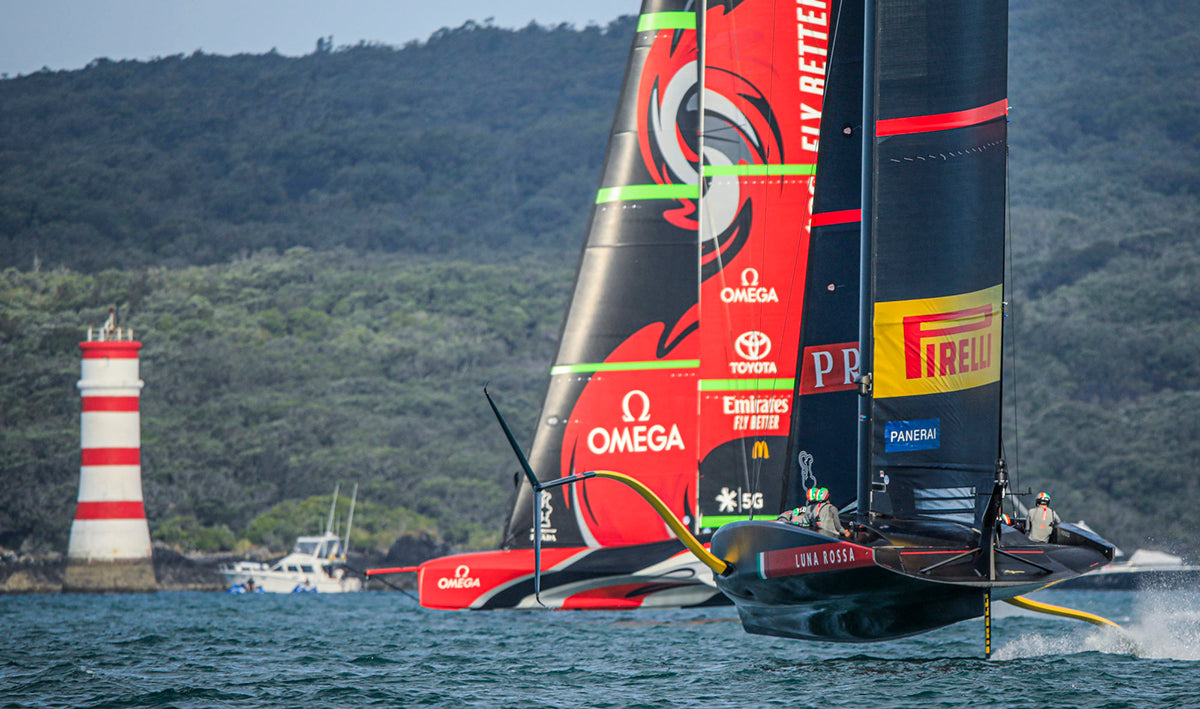
NORTH SAILS GANARÁ LA 36A AMERICA'S CUP
NORTH SAILS GANARÁ LA 36ª AMERICA’S CUP
Luna Rossa Prada Pirelli Team se ha impuesto a INEOS Team UK por 7-1 en la Prada Cup y se enfrentará a Emirates Team New Zealand en la final de la 36ª America’s Cup.
📸 Studio Borlenghi
Desde que el estadounidense NYYC American Magic quedara fuera de la carrera por la Jarra de las cien Guineas, North Sails se convertía en la única velería en el campo de regatas de Auckland y ganará la America’s Cup. Tanto el Challenger italiano como el Defender lucen el logo North Sails en todo su inventario de velas: Una revolucionaria mayor flexible de entre 135 y 145 metros cuadrados, un génova de 90 metros cuadrados y un código cero de 200 metros cuadrados. La Final de la 36ª America’s Cup se disputará en Auckland (Nueva Zelanda) a partir del 10 de marzo.
READ MORE
READ MORE
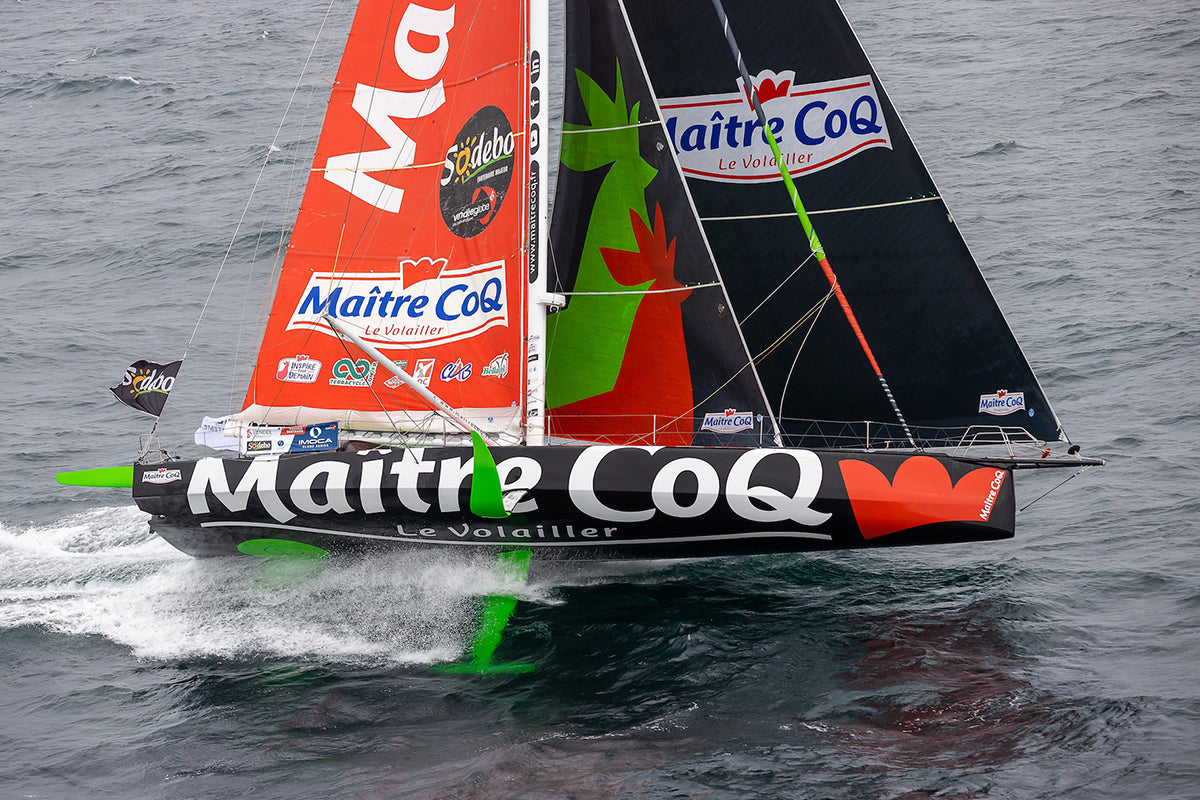
DIMINIO EN LA VENDÉE GLOBE
DOMINIO EN LA VENDÉE GLOBE
Yannick Bestaven ha ganado la novena edición de la Vendée Globe, la regata de vuelta al mundo en solitario y sin escalas, con un tiempo de 80 días, 3 horas, 44 minutos y 46 segundos.
📸 Jean-Marie LIOT / Maître Coq
El bravo patrón francés equipó inventario completo North Sails en su Maître CoQ IV, al igual que los dos rivales que le acompañaron en el podio: Charlie Dalin (Apivia) y Louis Burton (Bureau Vallée 2). A falta de que crucen la meta los últimos participantes, las estadísticas confirman el excelente resultado de velas North Sails, que equipó a los nueve primeros clasificados y a 16 de los 20 primeros en cruzar la línea de llegada.
Enhorabuena a todos, y gracias por confiar en North Sails.
READ MORE
READ MORE
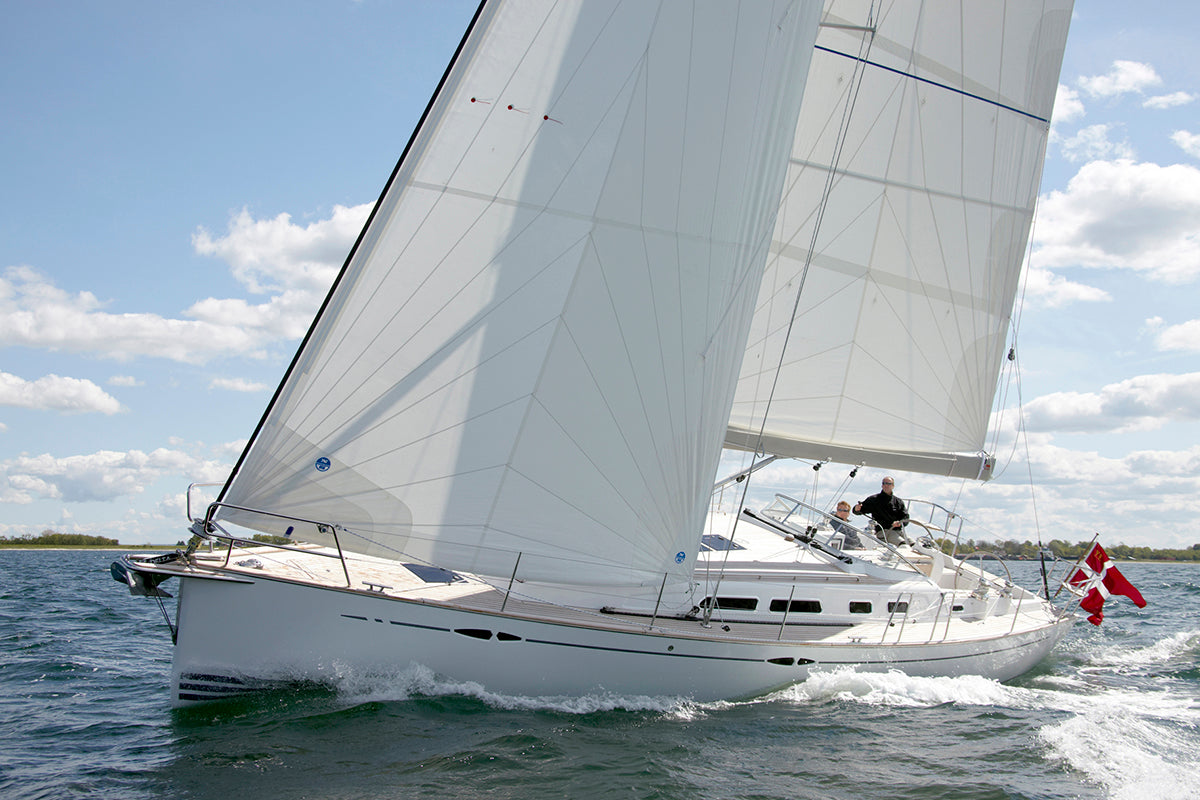
NAVEGACIÓN DE CRUCERO CON TECNOLOGÍA OCEÁNICA
NAVEGACIÓN DE CRUCERO CON TECNOLOGÍA OCEÁNICA
Fiabilidad, resistencia y prestaciones de competición oceánica, a medida para la navegación de crucero.
📸 Klaus Andrews
La gama de velas para navegación de crucero de North Sails se beneficia de la misma tecnología que ha permitido a los mejores equipos de la Vendée Globe completar la vuelta al mundo en solitario y sin escalas, incluyendo al campeón Yannick Bestaven.
Desde sus orígenes, North Sails ha aprovechado los conocimientos adquiridos en competición para desarrollar y evolucionar las velas de su catálogo. Lowell North, fundador de la velería, supo combinar su formación como ingeniero aeronáutico y su experiencia como regatista para diseñar productos que ganaran regatas y tecnologías que pudieran ser aplicadas a todo el espectro de la vela.
Esa misma filosofía continúa siendo la piedra angular de North Sails, que hoy experimenta en el campo de regatas, desarrolla en el laboratorio y aplica a la navegación de diario. La competición de alto nivel constituye un inmejorable campo de ensayos para la velería, que dentro de los límites del campo de regatas puede asomarse más allá de los límites de lo conocido para seguir avanzando en la evolución de sus productos. Y si hablamos de competición, North Sails es la referencia absoluta por cuota de mercado y por resultados.
Pero, ¿cómo puede beneficiarse el propietario de un crucero del hecho de que las velas North Sails ganen regatas?: "Básicamente, aplicamos a nuestro catálogo de velas lo aprendido en competición", explica Luis Martínez Doreste, director comercial de North Sails España. "Nuestros expertos trabajan directamente con los equipos e incluso compiten a bordo de los barcos, lo que nos proporciona información de primera mano sobre qué funciona y qué no. Esta manera de trabajar no solo garantiza prestaciones, sino especialmente fiabilidad y resistencia. Un buen ejemplo son las velas de la última Vendée Globe, en la que los nueve primeros clasificados equiparon velas North Sails 3Di. La misma tecnología que les ha permitido completar la circunnavegación en solitario y sin escalas se encuentra en nuestro catálogo, y se puede aplicar a cruceros de todas las esloras".
3Di Ocean
La gama 3Di específica para navegación de crucero se denomina 3Di Ocean, y está disponible en el dossier North Sails Cruising en versiones 330, 370 y 700.
La 3Di Ocean 330 es una reinterpretación de la tradicional vela de dacron al combinar las propiedades de las velas de composite 3Di con el poliéster. El resultado es una innovadora vela de crucero sin costuras, con una forma aerodinámica más suave y estable que ofrece una mejora en el control, la comodidad y la velocidad, y un compromiso inédito entre coste, prestaciones y durabilidad.
La 3Di Ocean 370 es un híbrido de poliéster y Ultra PE, y está especialmente indicada para monocascos y multicascos de crucero con esloras entre 35 y 60 pies.
La 3Di Ocean 700 ofrece una imbatible combinación entre facilidad de uso y manejo al reducir volumen, peso y rigidez, pero sin comprometer los altos niveles de robustez y fiabilidad característicos de las velas de composite moldeado 3Di.
NPC y NPL
Además de las 3Di Ocean, la gama Cruising de North Sails incluye opciones para quien prefiere velas de poliéster (NPC, acrónimo de North Panel Cloth) o laminadas (NPL, o North Panel Laminate). Las North Sails NPC están disponibles en versiones Cross-Cut (con tejido NorDac Fill de trama de poliéster de alta tenacidad), Radian (menor estiramiento y mayor rendimiento que cualquier otro tejido de poliéster no laminado, en construcción radial) y Downwind (para portantes). La serie North Sails NPL incluye versiones Tour (construcción en sándwich de aramida negra de corte radial con laminado Xi Cruise), Tour Ultra (construcción en sandwich de dyneema o de dyneema/carbono para barcos de mediana y gran eslora respectivamente) y Downwind (laminados de poliéster o de aramida, recomendados para velas portantes de rumbos cerrados tipo G-Zero).
Gennaker enrollable Helix
La última incorporación al catálogo de crucero North Sails se denomina gennaker enrollable Helix y también tiene su origen en la competición. El éxito de las velas con estructura de grátil Helix en regata animó a los diseñadores de North Sails a incorporar el sistema a una vela de tipo G1. El resultado es una vela de enrollado top-down sin cabo antitorsión que incorpora lo mejor de las velas grand prix en un gennaker de crucero más ligero, fiable y fácil de usar. Disponible en 3Di, NPC y NPL, cubre un amplio rango de vientos desde través cerrado y hasta ángulos de popa, y puede reemplazar tanto al código cero como al spinnaker asimétrico, reduciendo el inventario de velas a bordo.
La gama Cruising de North Sails abarca todo tipo de esloras e incluye propuestas para todo el inventario necesario a bordo de un crucero, desde mayores o génovas, hasta velas de rumbos abiertos.
READ MORE
READ MORE
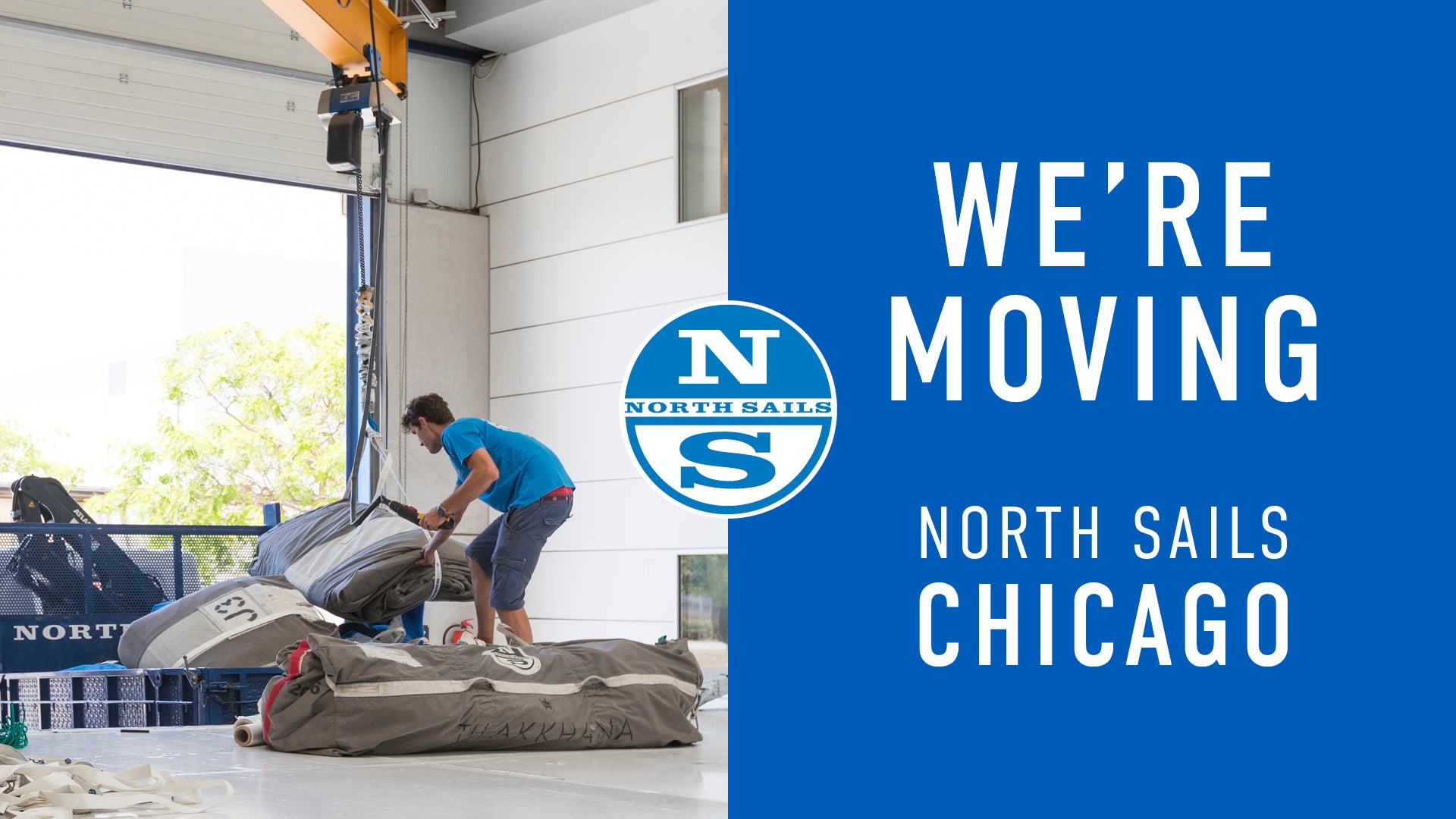
INTRODUCING THE NEW NORTH SAILS CHICAGO
INTRODUCING THE NEW NORTH SAILS CHICAGO
Combining Sails, Service, and Expertise All Under One Roof
North Sails is excited to announce the opening of our new location in Chicago, IL. Managed by local experts Perry Lewis, Keith Church and John Baxter, and previously based on N. Elston Avenue, the North team's new location is in West Town: 1945 W. Hubbard, Unit C, Chicago, IL, 60622. The new Chicago loft is purpose-designed to fit our clients' needs for sail pick-ups, drop-offs, and service work. A full-service operation, North Sails Chicago houses sales, Certified Sail Care™, and expertise under one roof. Local sailors will enjoy easy, customer-friendly access to sail pick-up and drop-off as well as an extensive list of services, such as sail storage, sail washing, sail evaluations, sail measurement, new sail quotes, and more. Current and potential clients can meet with Perry, Keith, and John in the West Town location starting March 15th.
Longtime North Sails Chicago sales expert Perry Lewis shares, "After nearly 30 years at our N/ Elston Ave location, the addition of John Baxter's new business means we have outgrown our space here. Double the size with 5,500 square feet, with the bonus of convenience to the harbors & expressways. We're excited to have all-new offices and a fresh face on our local service facility."
A longtime fixture in the Midwest sailing community, North Sails is eager to welcome customers, new and old to the new West Town loft. Our doors are open on March 15th and your local team looks forward to assisting you with all your sail care needs. Connect with us today at 773-489-1308.
About North Sails Group
North Sails, the largest division of North Technology Group, has become the world’s leading sailmaker through an ongoing commitment to superior performance, technical innovation and elevating the sailing experience of our customers. North Sails holds the patents for 3Di, a unique composite construction process resulting in high-performance sails that approach the shape holding of a rigid foil. By competing at the highest levels of our sport, North Sails validates products in the most demanding environments to create sails that perform better, last longer and provide more enjoyment… no matter what type of sailing you enjoy. Our dedication to development has reshaped modern sailmaking. It is what drives us to push boundaries, pursue adventure, and always Go Beyond.
CONTACT THE LOFT
READ MORE
READ MORE

NORTH SAILS FASTER THAN EVER IN MIAMI
SIX BULLETS, PURE SPEED AT THE STAR MIDWINTERS
North Designs Show Superb Performance as Teams Warm-Up for the Bacardi Cup
While most of North America was shivering and digging out from extreme winter storms, a great group of (smart) Star sailors traveled to Miami for the annual combination of the Walker Cup and Star Midwinter Championship. Teams came from as far away as California, Annapolis, and Argentina to test their skills on Biscayne Bay. The first two days were raced in tribute to the late Harry Walker who was a great friend of the Star Class in Miami for many years.
Competitors were greeted on the first day with a beautiful southerly breeze, 10-15 knots, and warm sunny skies. The fleet was very tight all around the track with Augie Diaz/Arnie Baltins taking the win in the first race and Eric Doyle/Payson Infelise taking bullets in race two and three. The Coral Reef Yacht Club Race committee headed up by PRO Carl Shellback did a great job running three windward-leeward courses on Thursday, and two on Friday. Eric/Payson had two great races on Friday to take the Walker Cup and it was a tight 2nd place for Augie/Arnie with Peter Vessella and Phil Trinter finishing 3rd overall.
A front passed through Friday night and Saturday came with a lot less humidity and a northerly breeze, still quite strong. The breeze was quite shifty and water was flat until the tide turned and most of the Cuban navy turned out to chop up the waves. Big bands of pressure came down the bay so it was important to keep your head out of the boat with the predominantly-right shifting breeze. The first race was a course four, while the final race was a course five with an upwind finish to finish sailors closer to home. The last run ended up quite exciting with puffs over 20-knots at times and the incoming current stacking up the waves. There were some broken poles and bent masts, but all in all, it was a great day. Sunday dawned with 20+ knots and increasing, the regatta was over for the tired, but grateful teams. Eric and Payson had an unstoppable streak of six bullets to win the Midwinter Championship.
“All the North teams used the M-25 main, our all-purpose option. We raced with the J-7 jib while all the other teams used the J-115 full-radial jib. I think this really showed the nice overlap between the two sails and the overall speed of the M-25 main. The North clients were all going fast and are ready for the famous Bacardi Cup next month,” said Eric Doyle.
Star Walker Cup
1. Eric Doyle/ Payson Infelise
2. Augie Diaz/Arnie Baltins
3. Peter Vessella/Phil Trinter
Star Midwinter Championship
1. Eric Doyle/ Payson Infelise
2. Augie Diaz/Arnie Baltins
4. John Macausland/Guy Avellon
5. Ante Razmilovic/Phil Carlsson
Speed-ready for the Bacardi Cup? We have sails in stock for you. Contact us today and shop for the fastest Star sails in existence.
SHOP STAR SAILS
Video/photo courtesy Kathleen Tocke
READ MORE
READ MORE
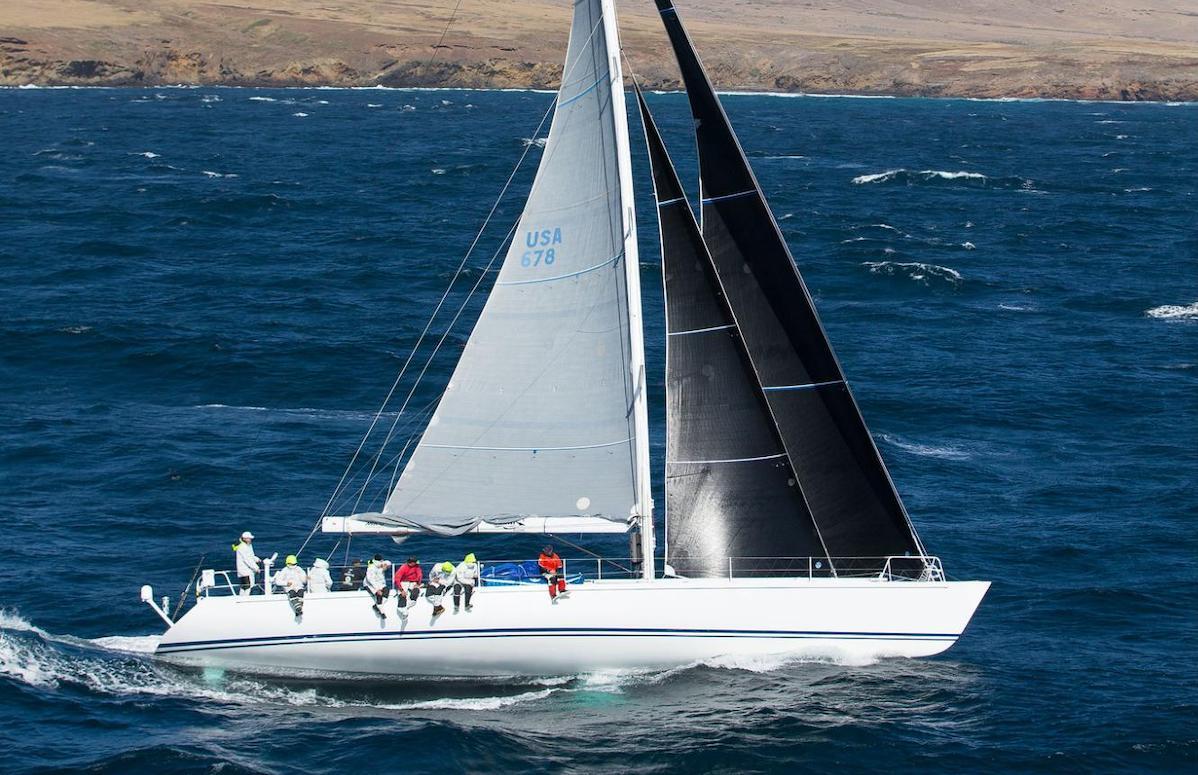
WEST COAST OFFSHORE WEBINAR TAKEAWAYS: PART I
WEST COAST OFFSHORE WEBINAR TAKEAWAYS
Tips For The Islands And The Cabo Race
📸 Sharon Green / Ultimate Sailing
Our North Sails experts from San Diego and Long Beach featuring Brian Janney, Patrick Murray and Alex Curtiss got together to discuss the Islands Race and Cabo Race. This first webinar is all about the race courses, what sails are typically used, and how offshore performance preparation can help you get ahead and stay ahead of your competition. Here are the top tips from the webinar as a quick read to have on hand.
Get Into A Downwind Mode Early
When it comes to the Islands Race, the team recommends getting into a downwind mode early on in the race since it’s more running than reaching. Add in the amount of current in the channel and it makes it even more important. Patrick and Brian also recommend knowing whether you have a southerly component or westerly component early on for the first leg on the race.
Know Your Weather Forecast and What’s Going On
Patrick Murray, Cabo Race veteran, advises on the importance of knowing your weather forecast and what’s going on because you’re going to have to work really hard to get offshore + off the southern California coastline.
Dew On Deck
The middle portion of the Cabo Race from Ensenada to Mag Bay is where you’ll be reaching and want to start thinking about running. Again, the offshore vs. onshore component plays a big role here. Brian Janney explains the old tried and true notion of dew on the deck, which tells you if the wind will shift from offshore to onshore. If it’s a wet deck then it will be onshore so keep westerly whereas if it’s dry then its going to shift to an offshore breeze.
Know How To Use Your Full Inventory
No one predicts they’ll need to use storm jib or trysail however on the offshore that you do, it’s important to know how to use them. Patrick Murray stresses the importance of really needing to know how to use them in case it ever happens because if you do ever have to use them, chances are you won’t be able to communicate with each other on deck due to the noise. Therefore review with your crew and practice.
When it comes to being prepared onboard, Patrick Murray recommends having an offshore tool kit ready, complete with cuban fibre material and locktite, to repair sails if needed. Brian Janney and Alex Curtiss both recommend using a departure checklist to ensure you’ve remembered everything from safety equipment to sail usage chart. Having the right tools onboard ensures you’re prepared for any situation that you might encounter.
Further questions about how to best prepare for the Islands or Cabo race? Connect with our team of experts today. Need a sail to fill the gap in your inventory? We can help with that too. Give your San Diego or Long Beach loft a call to talk sails or arrange a 10 point inspection and rig check before you leave.
Watch the Webinar
READ MORE
READ MORE
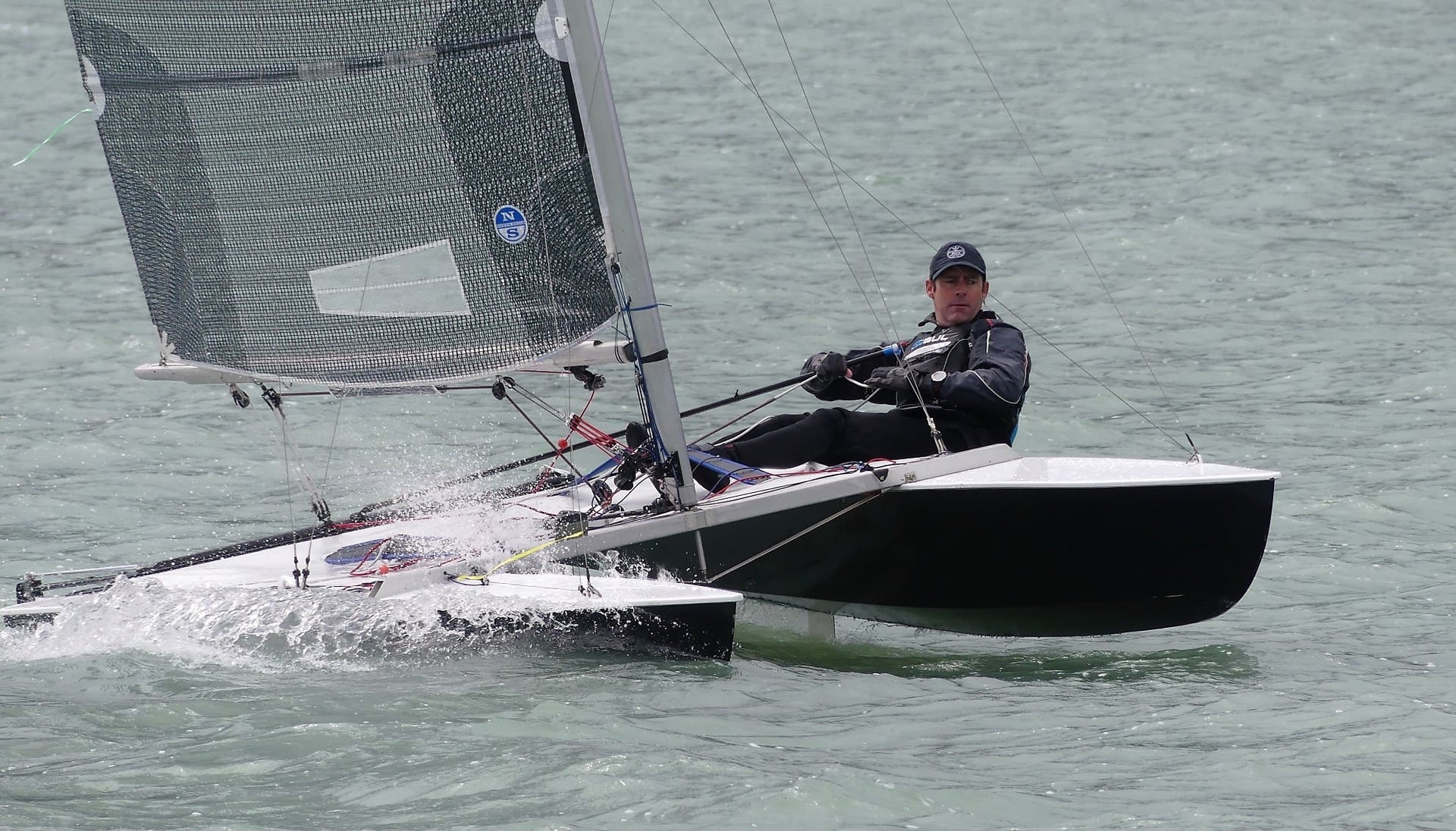
CLASS EXPERT DEREK SCOTT CLAIMS PAPER TIGER NATIONAL TITLE
CLASS EXPERT DEREK SCOTT CLAIMS PAPER TIGER NATIONAL TITLE
Powered by the North Sails S-5 Mainsail
Paper Tiger New Zealand National Champion, North Expert Derek Scott 📸 Kim Clinch
After taking home the Paper Tiger National Championship title in 2019, North Sails New Zealand One Design expert Derek Scott has done it again in 2021. Racing with the S-5 sail, Derek’s boat setup is deliberately simple and easy to use, allowing him to have more time to look around and concentrate on making the boat go fast.
“The S-5 sail is the best all-round sail,’’ explains Derek. “It has enough power in the light for most sailors and it can be flattened off for when the wind gets up. It’s a step up from the S-4 and goes through the wind range better.’’
The Nationals were hosted by Charteris Bay Yacht Club; a fantastic sailing venue where Derek sailed as a junior until he was 17. Now living in Auckland, he is no longer local, but this time sailing as a junior allowed him to build up some local knowledge which he could apply to the Nationals.
“Once you’ve lived in Christchurch, you never forget about the north-westerly wind. It’s a dry, warm, gusty wind that comes over the Port Hills and most of the time is in excess of 30 knots. This is what we had on the first two days which resulted in no racing either day. Once you lose a day or two of a regatta, you have to change your mindset; you can’t afford any bad races and you have to be consistent’’, comments Derek.
“The S-5 sail is the best all-round sail. It has enough power in the light for most sailors and it can be flattened off for when the wind gets up.’’
The New Zealand Paper Tiger class organizes a traveling Grand Prix series consisting of a series of regattas throughout the season at different venues. Derek makes sure to get the most out of these regattas to maximize his practice time on the water, racing against the best sailors in the fleet, which “makes you a better sailor all-round’’ he comments. “Boat prep is also a big one for me. I make sure to turn up with everything ready to go; hull and foils sanded smooth, anything that is worn replaced so the risk of any gear failure is low, and just cutting out the little mistakes that could cost my bad races.’’
As the Paper Tiger Class Expert, Derek’s clients make up a lot of the fleet, and he loves having the opportunity to race against them. It also gives him the chance to help them improve and hear first-hand customer feedback about our sails.
He trains most weekends with Owen Jenkens and Mark Orams as members of the same yacht club. “Both Owen and Mark were greatly involved with developing the S-5 sail. If we are not sail testing, then we are working on boat setup or sail control adjustments. We also partake in some short sprint racing run by the club where we practice starts and mark roundings.”
Finally, we asked Derek what his key to winning in this fleet was. His answer? Consistency. “I think it is all about being consistent, especially in regattas that have been cut short due to wind conditions. If you can minimize the big scores (bad races), then you have more options at the end of the regatta and takes the pressure off.’’
Next up for Derek is a final regatta in the Paper Tiger before the season ends, and he is also jumping back into the Farr 3.7, a class he knows well from before his time in the Paper Tiger class, to compete in the New Zealand Nationals at the end of February. He is looking forward to more great racing!
Third at the National Championship, Hayden Percy 📸 Kim Clinch
Derek Scott 📸 Kim Clinch
READ MORE
READ MORE
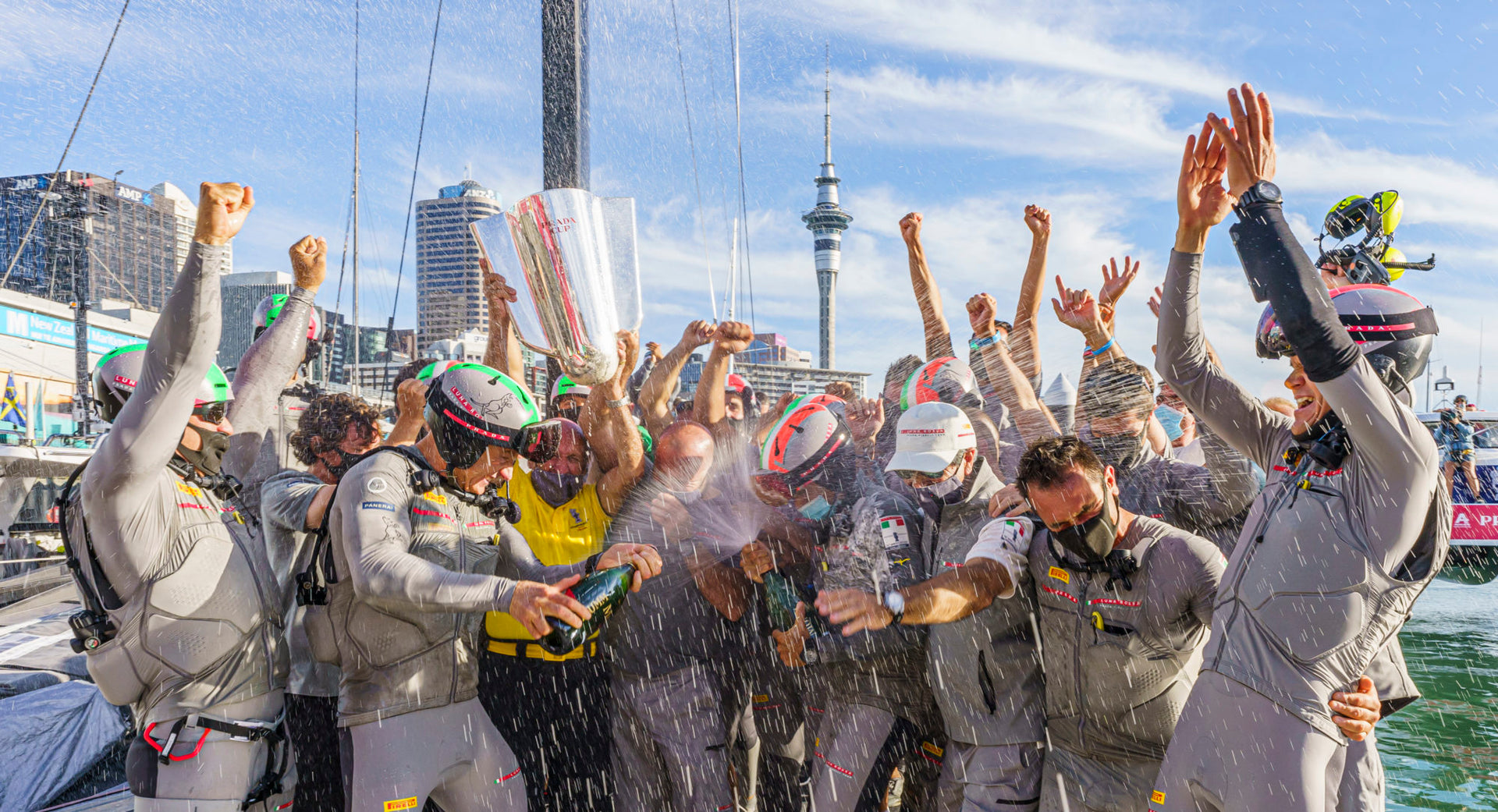
OFF TO THE CUP: A CHALLENGER IS CHOSEN
OFF TO THE CUP: A CHALLENGER IS CHOSEN
Luna Rossa Prada Pirelli Claim the PRADA Cup and Their Seat at the Big Show
COR 36 / Studio Borlenghi
Sir Ben Ainslie and INEOS TEAM UK arrived in Auckland, New Zealand determined to return the America’s Cup to Britain after 170 years. He leaves as a poster boy of true Brit grit, and the bittersweet knowledge that he has helped to hone the skills of Luna Rossa Prada Pirelli for their next challenge, the America’s Cup Match against Emirates Team New Zealand.
As he put it, it’s been a wild ride.
COR 36 / Studio Borlenghi
In December’s America’s Cup World Series, INEOS TEAM UK clocked up defeat after defeat as the other three teams shared the spoils. But the relentless string of losses wrote the INEOS TEAM UK joblist: they picked apart every aspect of their campaign and looked for tenths of knots under every download of data. Five weeks later, INEOS TEAM UK won all their races in the Round Robins and gained a direct line to the PRADA Cup Finals.
That left Luna Rossa Prada Pirelli, led by co-helmsman Jimmy Spithill and Francesco Bruni, to work on their shortcomings in the semi-finals. The Italians were spurred on by their whipping at the hands of INEOS TEAM UK.
“Ben is definitely one of those guys who, funnily enough, has made me better,” said Spithill. “Because anytime you go up against these guys , you have to be at the top of your game.”
Luna Rossa Prada Pirelli arrived at the PRADA Cup Finals with a much improved, all-round arsenal of speed. Their most effective weapon was: high mode upwind in light airs. That turned out to be INEOS TEAM UK’s Achilles’ heel, and unfortunately, light conditions dominated the last week of the series.
But there was a flurry of hope for the Brits and their fans when INEOS TEAM UK won race 6. It seemed like the British would go into Sunday with a new gear, but for races 7 and 8, the 9-12 knot breeze was dealing the cards.
In race 7, INEOS got a clean, impressive start but any advantage soon disappeared under Luna Rossa Prada Pirelli’s upwind edge. And, for Race 8 it was much of the same, although it was clear that INEOS TEAM UK would not go home without a fight. Ben Ainslie pulled a fast tack to port on the startline, burned the remaining three seconds, and watched Luna Rossa nudge out over the line before the buzzer. The Italians were rewarded with a 50-meter penalty. But that 50-meter distance did extend into the hoped 500 distance, and by the top of gate one, Luna Rossa was eking ahead.
And so, after 21 years, the Challenger Luna Rossa Prada Pirelli won the Challenger series and will head to face Peter Burling and the Kiwis. If this all feels a little too familiar, it is; the Kiwis faced off the Italians in 2000.
COR 36 / Studio Borlenghi
Here are some of the reasons why Luna Rossa Prada Pirelli was able to make this dream a reality:
Prior to the Finals, Luna Rossa said they had new foils and sails, a modified mast, and improved in-house software which sailors use to judge the exact time on distance, boundaries, and manoeuvers against the other boat.
Another reason is the Challengers’ Series did its job. The AC75 arrived without an operator’s manual and represents an extremely steep learning curve. The first two America’s Cup World Series would have been the baby steps for learning to race but were canceled by CoVid-19. Linking it to the real world, the Round Robins were high school, while the PRADA Cup Finals have been College.
Some of Luna Rossa Prada Pirelli’s success reflects its role as Challenger of Record. As CoR, they co-wrote the America’s Cup Protocol with Emirates Team New Zealand. This provided them a valuable edge in understanding the AC75 design and was reflected in the similarities between the two syndicates’ first-generation boats.
The big shock was Prada’s second-generation boat. Unlike every other syndicate, it is incredibly similar to their first. Of course, Max Sirena said, we got it right the first time. The skiff-like hull foils easily and recovers from splashdown quickly, even in the light airs that dominated the PRADA Cup Finals.
And there’s another reason. In the round robins, Luna Rossa Prada Pirelli may have been battling a weakness that has since become its major strength: co-helmsmen who are also co-flight controllers. Sirena said he has the world’s best Italian America’s Cup skipper on port and the world’s best Australian America’s Cup skipper on starboard, but, he chuckled, “It has been a difficult process. They are both super-talented. They are pretty different. They respect each other and they push one against the other to get better and better.”
How different? Quotes from Spithill and Bruni on how they felt immediately after winning the Prada Cup appear below:
“Yeah, not too bad, mate.”
“Fantastico!”
And the final word from Sir Ben Ainslie: “In these difficult times that we are seeing around the world, we’ve been incredibly fortunate to race these AC75s as we have been doing. We wish both teams in the America’s Cup all the very best.”
READ MORE
READ MORE
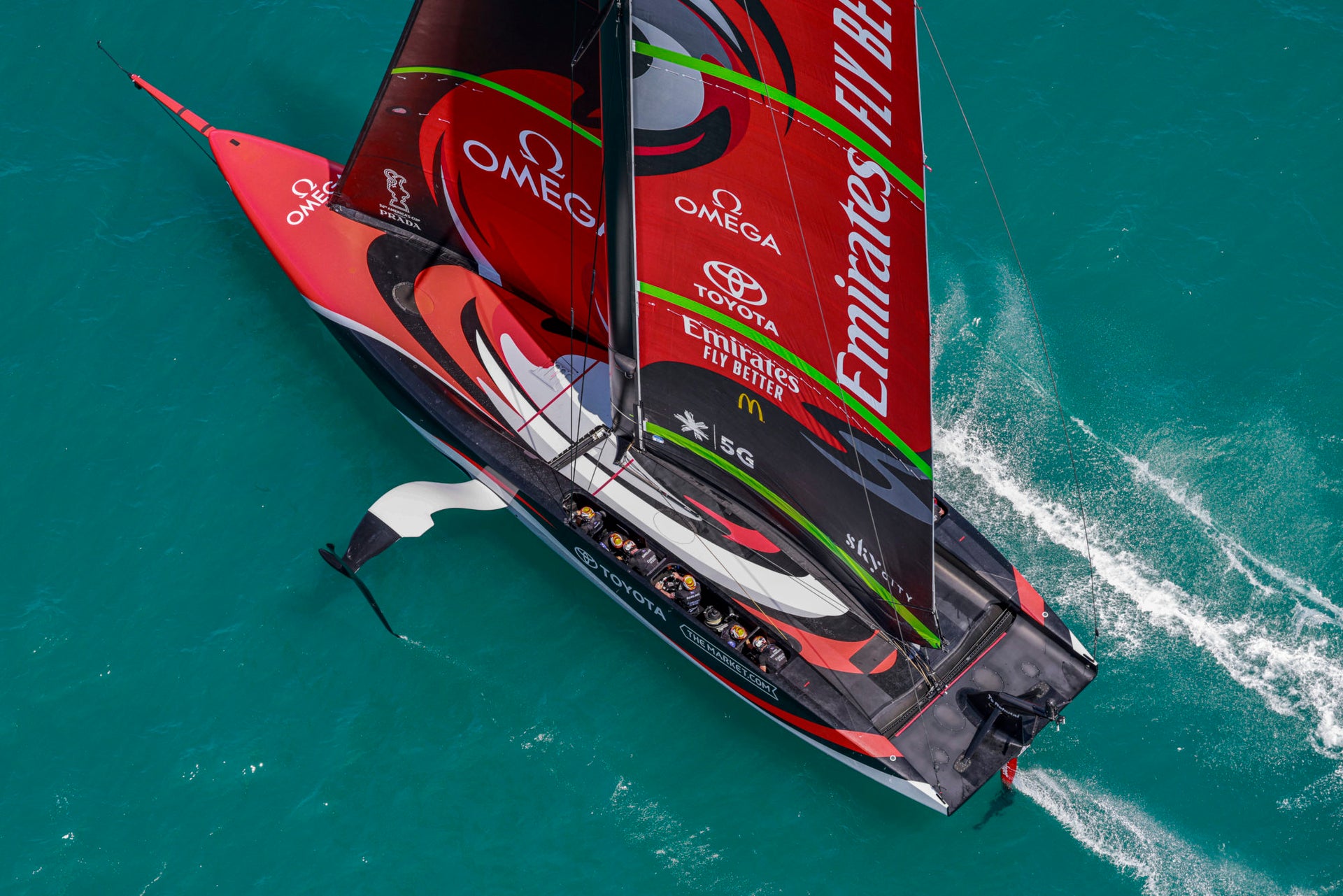
FOILING CHANGES EVERYTHING
The twin-skin mainsail, which has hit superstardom thanks to the AC75, is a surprising rediscovery of a patent developed by LF Herreshoff in 1927; LF Herreshoff was the son of Nathanael Herreshoff and, despite the famous father, his designs never won an America’s Cup.
READ MORE
READ MORE
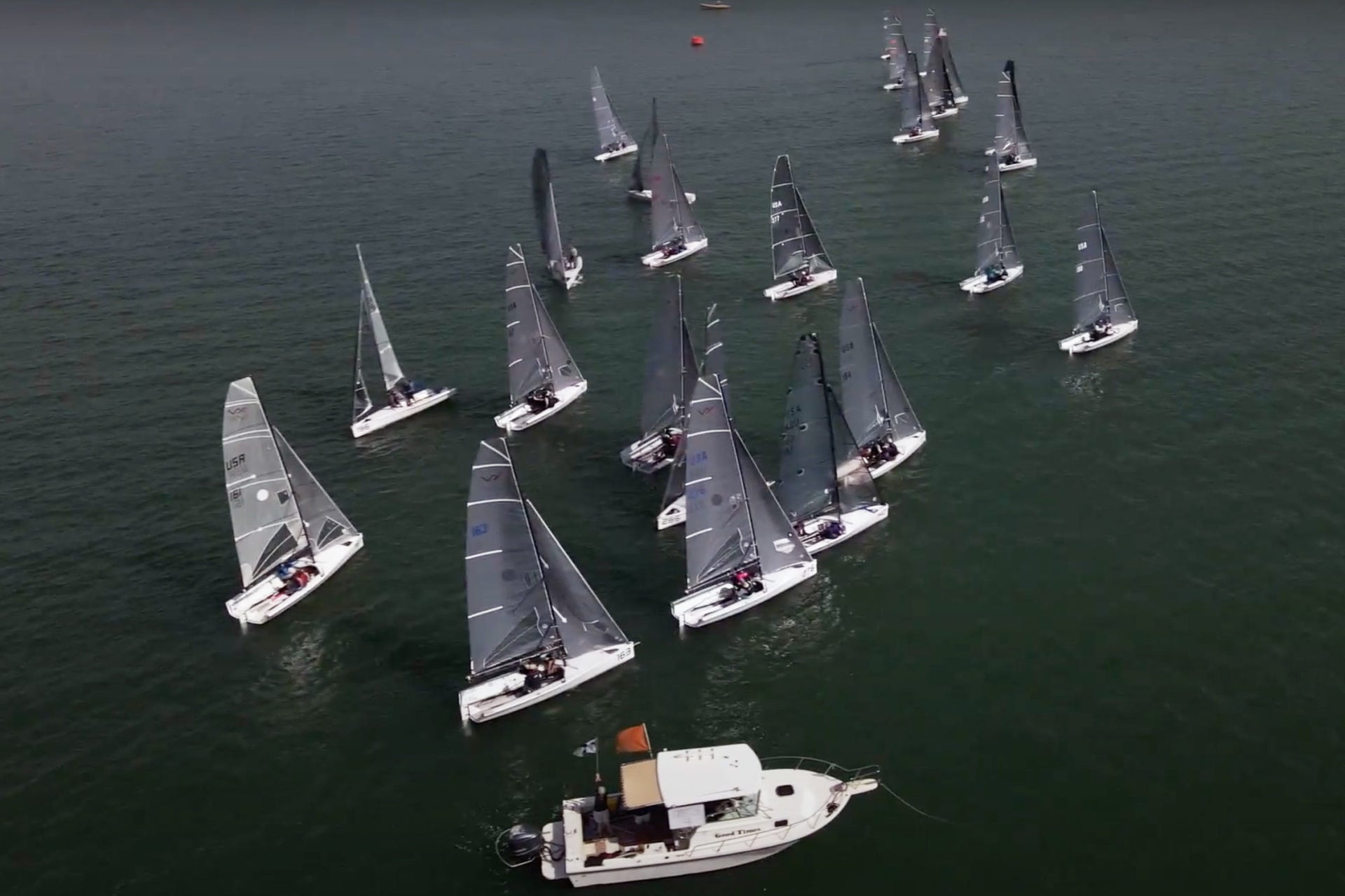
CONTINUED SUCCESS AT THE VX ONE WINTER SERIES EVENT #2
CONTINUED SUCCESS AT THE VX ONE WINTER SERIES EVENT #2
North Customers Sweep the Podium Once Again
📸 Roy Ingham
Sarasota Sailing Squadron welcomed the VX One fleet for their second winter series event over Valentine’s Day weekend. Following the successful Midwinter Championship in January, the fleet grew slightly to 24 boats. By Friday afternoon, most teams were onsite prepping, practicing, and sitting in on Chris Alexander’s rules discussion focused on mark room at leeward gates and downwind finishes.
Early morning fog on Saturday cleared before start time and the race committee was able to get four races off. The southwesterly breeze built from 5 to 10 knots and generally trended left, but not without some irregular righties rolling through. Teams who stayed focused on maintaining adequate power and balance onboard while also staying in phase were generously rewarded. One of the day’s biggest takeaways, however, was that the top teams are not the ones who only seek perfection, but the ones who adapt the most efficiently when mistakes are inevitably made. With no team winning more than one race on Saturday, it’s clear that resilience and forward-thinking were common traits amongst the leaders.
Sunday’s forecast was much less stable, with dark clouds looming on the horizon. A squall hit the fleet with heavy rain on the way out to the course but gave way to overcast skies by the time racing started. The 15 knots southerly steadily built to 25 knots over the course of two races. Sunday’s top teams were the ones who not only depowered the sail plan and hiked hard but also trimmed the sails to minimize heel angle and leeway. Many teams hit personal best downwind speeds, but the race committee made the decision to send the fleet in after seeing a few too many keels in the air.
Winning the weekend was Doug Clark with Mike Marshall. Second place went to Jim Ward with past class president Jeff Eiber and Lynda Bryant onboard. Rounding out the podium was current class president Chris Alexander sailing with Madeline Gill and Kate O’Donnell.
Teams powered by North Sails finished 1, 2, 3, 4, 5, 6, 8, 9.
The final event of the winter series will have a more extended format, with three days of racing on March 19-21. North experts Austin Powers and Madeline Gill will host a debrief after practice on Thursday. Keep your eyes out for more information as we get closer to the event.
SHOP VX ONE SAILS
📸 Roy Ingham
READ MORE
READ MORE
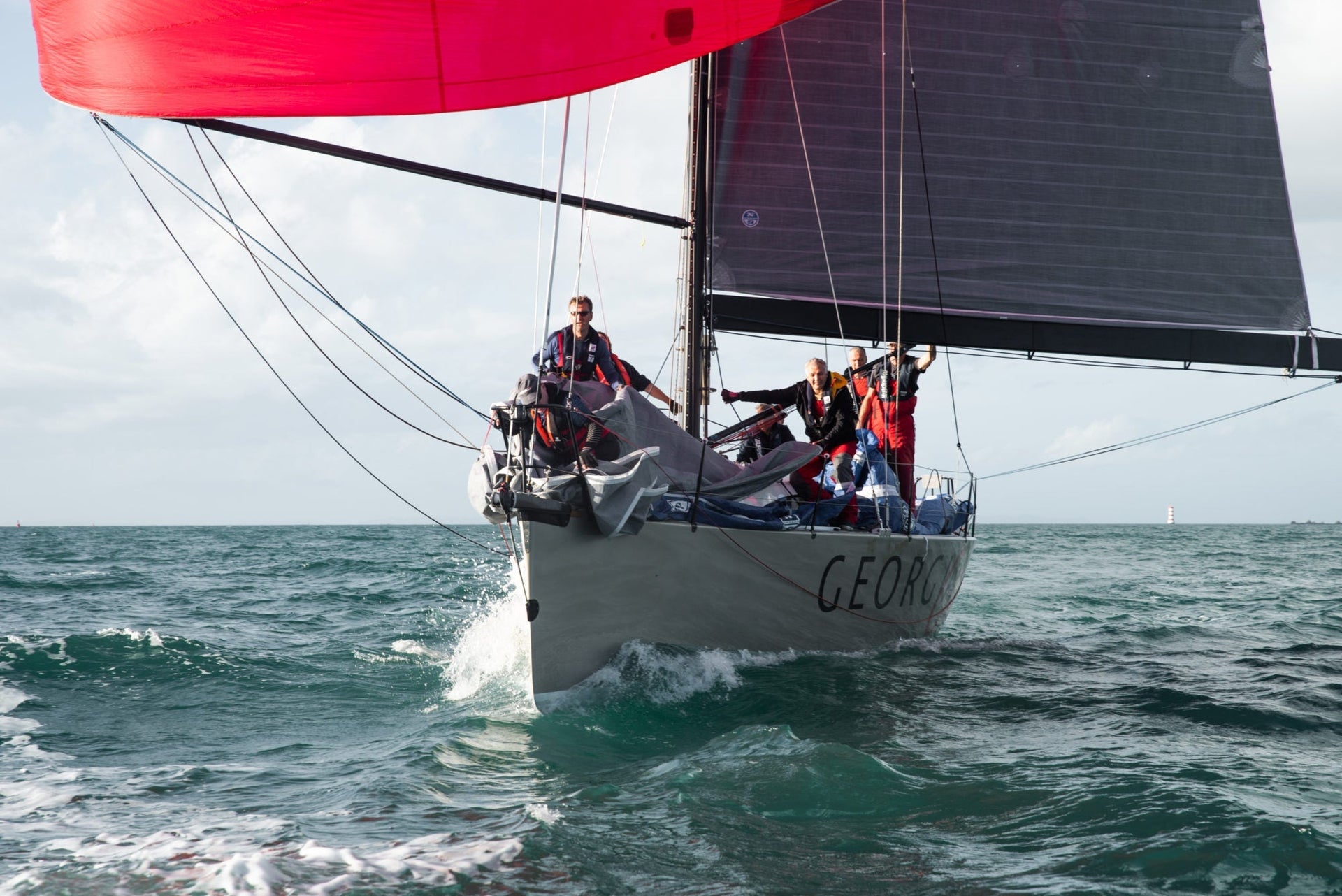
ASYMMETRICAL VS. SYMMETRICAL SPINNAKERS
North Sails expert Brian Janney explains why choosing a spinnaker means understanding your own sailing style.
READ MORE
READ MORE
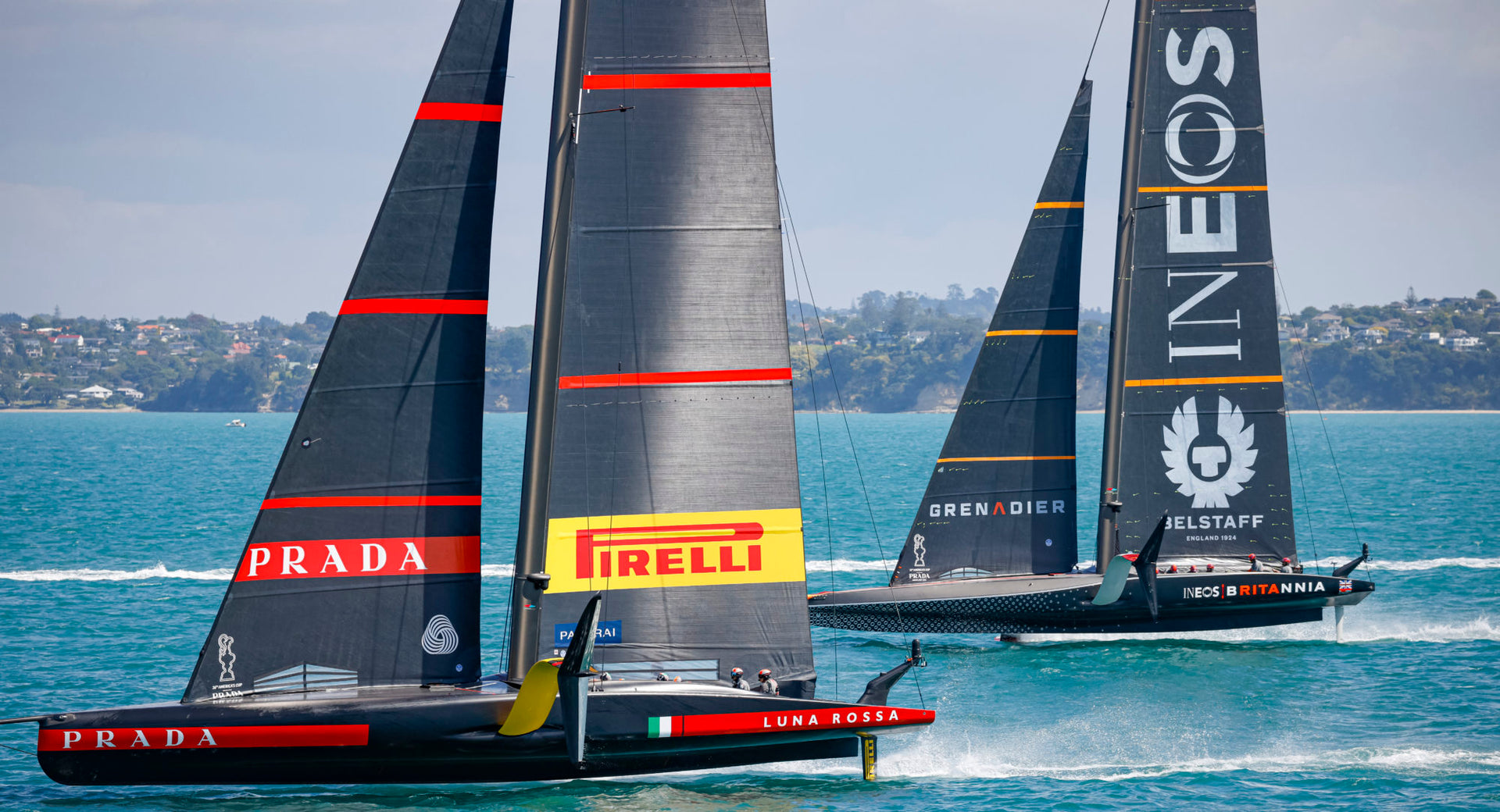
LIVE UPDATES: THE PRADA CUP FINALS
LIVE UPDATES: THE PRADA CUP FINALS
On-The-Ground Updates and Highlights from Auckland
📸 COR 36 / Studio Borlenghi
Two team racing for one seat in the America’s Cup match. INEOS TEAM UK and Luna Rossa Prada Pirelli will sail 13 races, with the first team to win seven declared the winner of the PRADA Cup. This is an exciting time for North Sails as both competitors, and Defender Emirates Team New Zealand North Sails, and our NTG family brands Southern Spars, and Future Fibres to power their engine above deck. Our group has also supplied design talent and software to support the teams’ quest for the Cup. And for those of you who want to dress the part, North Sails is an official partner for event branded clothing.
Racing begins January 13th at 1600 NZL time. Make sure to check your time zone if you’re watching remotely. North Sails will also be covering the PRADA Cup on this live blog and on our social channels throughout the next few weeks.
How To Watch
February 20, 2021, 14:00 GMT
Not going down without a fight
“We’re going into the thick of the fight,” Sir Ben Ainslie said before he led his men into Race 5 and 6 of the PRADA Cup Finals. Following the Covid-19 alert in New Zealand that postponed two days of racing, Ainslie and the British team was four races down to Luna Rossa Prada Pirelli in a best of thirteen event.
The time gave INEOS TEAM UK five consecutive days to hunt for the speed and agility they needed to extend their invitation beyond this weekend. With no boat modifications permitted, they looked at the human factor and went to light airs sailing school. After all, the day was a bit of a do-or-die race for the British team if they wanted to stop the Italians from steamrolling them straight to the America’s Cup.
📸 COR 36 / Studio Borlenghi
“Some of these racing techniques, particularly through the maneuvers, are very subtle,” said Ainslie. “There is so much that goes into a single maneuver, from the sequencing of changing the load between the boards, the main and jib transfers, and more.”
Then they went back to the game film to study their opponent. “The more the teams race,” Ainslie added, “the better we are at figuring each other’s play in the pre-starts.”
Race 5 would reveal the Italians were likely doing the same.
The day started with a show of strength. In the shifting south-wester of 8 to 11 knots, INEOS TEAM UK brought out their biggest jib to help launch the boat in the light airs. Luna Rossa Prada Pirelli hoisted a smaller jib, because their boat lifts onto the foils easier, and any unwanted sail power becomes drag as soon as their AC75 is foiling.
Then came the start. Both boats wanted the right side of the line, but Jimmy Spithill edged up to shut the door on INEOS TEAM UK at the mark, leaving Ainslie with a choice: barge for the line or bail out into oblivion. He barged.
📸 COR 36 / Studio Borlenghi
At the last second, Spithill pulled out his new trick. He brought Luna Rossa into a high, slow mode beneath Britannia.
Wait a second – was that a luff? AC75s don’t luff…do they?
Both boats survived unscathed, except INEOS TEAM UK emerged with two penalties, and by the time that was cleared, Luna Rossa was ahead. Somehow, everyone missed what had just not-happened. The lead INEOS TEAM UK had for the first half of leg one quickly disappeared. Then Prada won the race.
For race 6, everyone expected a repeat performance.
Both boats were headed for the start line, with INEOS TEAM UK to leeward and ahead when Spithill pulled out his next new trick (the luffing one). He dived down to make big swoops behind TEAM UK to make them squirm and burn off speed, but the Brits didn’t fall for it. Nor were they seemingly phased by it. In fact, Spithill burned off his speed and crossed the line late.
This was suddenly a very interesting race
Ben Ainslie took full control of the race and threw in some lee-bow tacks and led at every mark. Upwind, INEOS TEAM UK’s big jib was slower through the tacks while Prada Pirelli flexed their new, higher angles. Downwind, INEOS TEAM UK sailed deeper and exited the gybes lower to regain lost ground and extend the distance. Both boats sailed flawlessly around the course.
Ainslie and tactician Giles Scott played to their strengths, largely avoided duels, and saved their grinders’ energy for a final gybe to stay between Luna Rossa and the finish. The Brits crossed 14 seconds ahead to take their first win of the Prada Cup Finals.
And so, the Brits lived to tell the tale another day.
On Day 3, INEOS found their fight. Expect Spithill and Bruni to come back swinging tomorrow.
COR 36 / Studio Borlenghi
January 14, 2021, 2100 GMT
Winning streaks and losing streaks
In the PRADA Cup Round Robins, INEOS TEAM UK sometimes followed the match racing handbook and sometimes closed the book and played the wind shifts. They then won every race, in a remarkable turn of events where the team turned their 100% losing streak from the America’s Cup World Series into a 100% winning streak.
Now, in the PRADA Cup Finals, the team finds themselves in the familiar, but precarious territory – 4 races down to Luna Rossa Prada Pirelli. The positive: they’ve come back before. The negative: the Italians are on a roll and will do everything possible to ensure the Brits’ comeback story was a one-time thing.
📸 Graeme Murray
INEOS TEAM UK clocked their third and fourth losses on day two of the PRADA Cup Finals on a new venue: Course E, aka the Back Paddock. It’s surrounded by islands and, in the brisk northeasterly, it delivered shifty, gusty winds. The day promised a brawl: two evenly matched boats, lots of passing lanes, and three helmsmen highly skilled at match racing.
In race three, Ainslie entered the start box determined to get a hook on Luna Rossa Prada Pirelli, but admittedly got a bit greedy and ended up below the layline. From there, Luna Rossa ruled the race course. Sometimes they tacked on INEOS TEAM UK in classic match racing 101; sometimes they played to their leader’s privilege to pick wind shifts.
For the trailing Britannia, every tack was an opportunity to make a gain (and they did at times). When the boats did engage in tacking duels, INEOS TEAM UK generally tacked wider, losing a precious few meters every time. And although the Italians misjudged some gybes, INEOS TEAM UK never came within striking distance to pass. The final delta was just 13 seconds – roughly the cost of the error in the start box.
📸 Graeme Murray
For race four, INEOS TEAM UK wanted to make trouble, but a start-box maneuver went wrong and Britannia reared high evoking flashbacks from the now infamous American capsize. The mainsail swept across the deck, depowering just in time to prevent a capsize, but, once again, Luna Rossa was a force to be reckoned with. Again, INEOS TEAM UK tried to rewrite the script, but they could not force an error on Luna Rossa. The final delta was 41 seconds, but Spithill emphasized that the score-line doesn’t reflect the close racing. “You’re constantly just a split-second way from any mistake,” he said.
Ainslie knows there is still hope. “We have to go away and regroup and come back swinging,” he said.
Jaunaury, 13, 2021, 1330 GMT
It’s game on in the PRADA Cup Finals
As day one of the PRADA Cup finals, yesterday was a Very Important Day. Three weeks ago, INEOS TEAM UK won four in a row over Luna Rossa Prada Pirelli – but in America’s Cup terms, three weeks ago is like last year’s winter fashion. Yesterday, upon returning to the water, both teams would strut their new improvements on opening day of the penultimate series.
Going into the day, Luna Rossa Prada Pirelli promised new foils, a modified mast, fresh sails, improved software, and communications. INEOS TEAM UK said they had found more speed and promised they were race-ready.
📸 COR 36 / Studio Borlenghi
Race one opened in sunshine and a light breeze, and if you’re an AC75 named Britannia, that’s not the forecast you would order. INEOS TEAM UK fell off the foils in the prestart and was unable to catch up. Talk about an anti-climax.
Race two brought a perfect, steady breeze of 12 knots. The start was flawless. Luna Rossa Prada Pirelli was to windward and tacked away. Both boats bounced off their respective boundaries and came back for the all-important first cross. Luna Rossa had it, easily, and commanded the lead for the remainder of the race. The Italians finished the day two-up on the Brits.
Well, we didn’t expect that.
Neither, it was clear, did Ben Ainslie. Immediately post-race, he appeared rattled but gained composure for the press conference an hour later. “I think it will come down to who sails the best and that’s absolutely how it should be,” he said.
We agree.
In race one, Luna Rossa Prada Pirelli carried more depth in her mainsail than INEOS TEAM UK, which may have provided a power-boost to get her up onto the foils faster. For the second race, both boats switched to smaller headsails. Luna Rossa went with a fat-head jib, and INEOS TEAM UK, a peaked jib; both teams admitted they could have benefitted from smaller jibs as the wind developed through the race.
Our predictions going into day two? Well, expect to see INEOS TEAM UK sailors doing a wind dance overnight for a forecast suited to their liking.
READ MORE
READ MORE
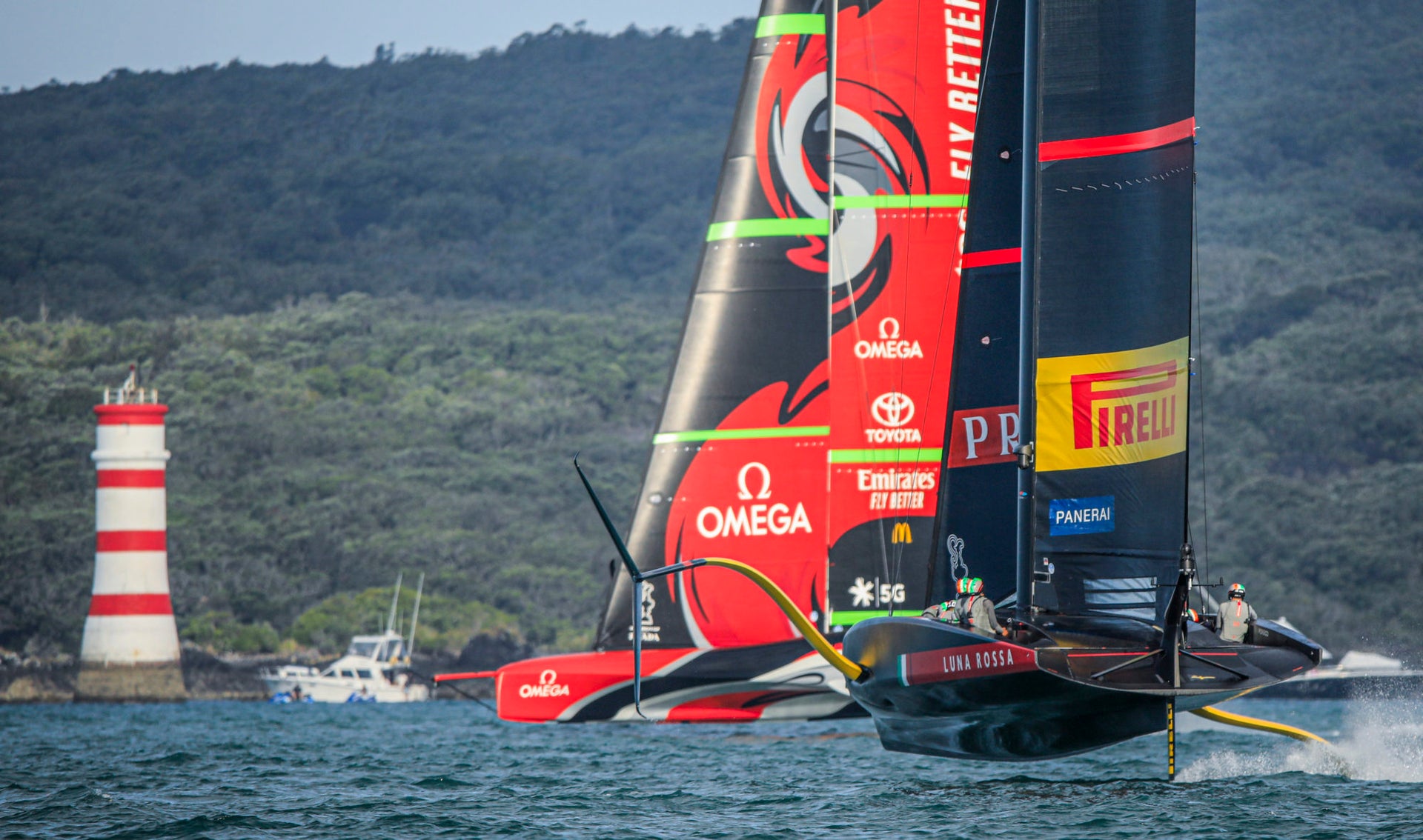
KEEPING SECRETS AT THE 36TH AMERICA’S CUP
We don’t yet know which of three teams (Luna Rossa Prada Pirelli, Ineos Team UK, and Emirates Team New Zealand) are going to win the 36th America’s Cup, but it’s easy to predict the winning sailmaker: North Sails.
READ MORE
READ MORE
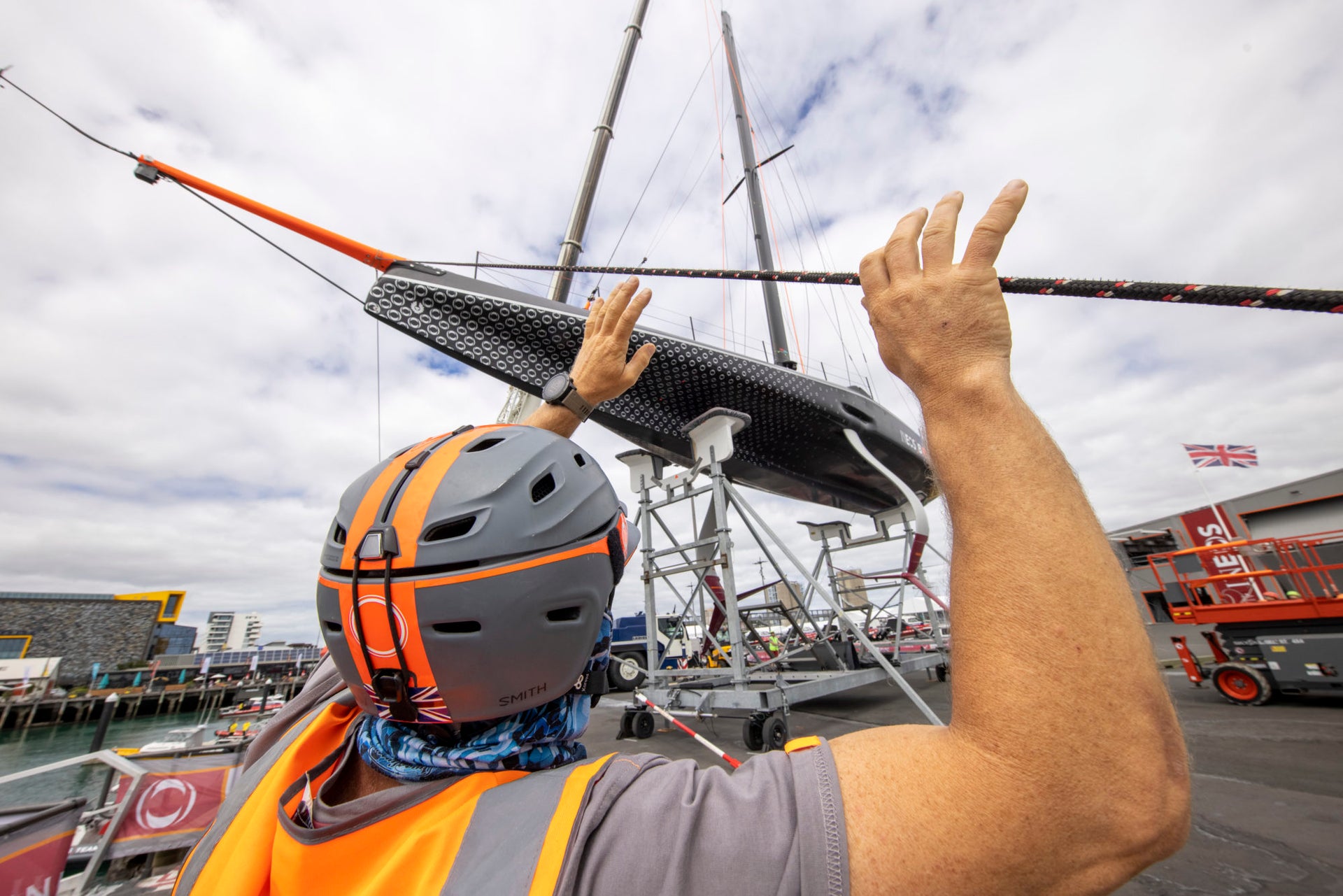
LAY DAYS: EVERY SECOND COUNTS
LAY DAYS: THE TINY GIANTS OF THE AMERICA’S CUP
Every second counts, and a day onshore is critical to development
📸 Harry KH / INEOS TEAM UK
On paper, a “lay day” is just two, three-letter words, but in practice, it is a logistical giant that can make, or break, the dreams of an America’s Cup team.
Just ask Jimmy Spithill. His famous comeback for ORACLE TEAM USA (OTUSA) in the 2013 America’s Cup in San Francisco was possible only because of a day without racing (and the subsequent development) following race 5.
Spithill and crew were behind and things were not looking good for the America’s Cup defenders. Then, OTUSA played a postponement card on the second race of the day (race 6). This then went straight into a previously scheduled lay day on September 11, buying them a total of 48 hours. The team regrouped, brought in a new tactician (Sir Ben Ainslie), and made some modifications.
A few days later, with Emirates Team New Zealand still leading, a journalist asked Spithill what he would do if Emirates Team New Zealand won the next race and went to match point. Spithill replied: “I think the question is, imagine if these guys (Kiwis) lost from here. What an upset that would be. They’ve almost got it in the bag. So that’s my motivation. ”
It was big, big talk. But OTUSA was writing the “comeback” book when they crawled back from an eight-to-one (plus a two-race deficit) to win the Auld Mug. To this day, many give credit to that 48 hour period after Race 5 for OTUSA’s success. Thus proving that lay days are the place where the tortoise might leapfrog the hare.
📸 COR 36 / Studio Borlenghi
A lay day begins as soon as the race boat returns to the dock after racing. From this moment forward, a three-dimensional thesis in time and skills management begins.
The teams start with a deep dive analysis into the live data telemetry which is transmitted from the AC75 during races. Engineers analyze the data looking for unusual readings– for example, a high rudder load. A high rudder load may coincide with a hard bear-away from the top mark, but if the timing shows no reason for the freak high load, the engineers want to know why. “It might be something starting to break or some gremlins starting to propagate,” said Gautier Sergent, North Sails sail designer embedded with INEOS TEAM UK. After looking at the data, the shore crew focuses on identifying the reason and then resolving it before the next race.
Other lay day jobs run to a critical path. “We keep a log of every component,” Gautier said. “For example, we know a rudder bearing has been used for X-amount of hours and done X many tacks, that many gybes and X-amount of bear-aways. After a certain number, it needs checking or replacing. Those preventative maintenance tasks happen on a lay day.”
Meanwhile, the design team always has a box of new tricks they are keen to try. But they’ll only reach for that box when they know the benefits will outweigh the risk level when the team introduces a new component. “If you had only one or two lay days , you might not do something high-risk,” Sergent explained. “You might just do a product change.”
📸 Harry KH / INEOS TEAM UK
That’s why designers like multiple lay days that allow them to validate any changes on the water. “You can’t mess about,” Sergent said. “You’ve got to be confident that the new features are going to be good-to-go without much tuning. Minor fine-tuning is ok, but nothing more.”
“There are new parts coming on every day. For example, new aero fairing details on the hull or the sails. You might want to do a luff curve change, change the batten stiffness or even do a recut on the sails if you think you can improve the shape. You might change the geometry ever so slightly. Many, many tasks like that can happen.”
With up to 50 people needing to work on the AC75 at once, the tasks are prioritized and then choreographed. Some shore crew work the full 24 hours; others work in shifts. The canteen keeps them all fuelled with food and coffee.
Then, there are the obligations to America’s Cup protocol, and this dictates everything. Prior to each series, such as the PRADA Cup final, all teams declare the configuration of their racing equipment such as hull, foils, mast, and sails. Some components cannot be changed after declaration and others can be changed within certain parameters– for example, sail areas can be altered by up to 25%. However, every change requires an updated declaration.
📸 COR 36 / Studio Borlenghi
“We get measured every day,” Sergent said. “The boat gets weighed. The sails get weighed. After components are measured, they are sealed into the boat. If the seal is broken, it has to be declared to the measurer and inspected.” All these steps require documentation and sign-off.
During lay days, the sailing crew become shore crew, helping with tasks such as procurement, data analysis, or servicing winches. They also regularly meet with the design team. “The sailors are our best sensors,” explained Sergent. “We have electronics on the boat, but the sailors have the best feel for how they want the boat to react.”
In between those obligations, the sailors go to the gym and, if they are grinders, consume tens of thousands of calories. Finally, if time allows and the weather is providing racing conditions, they go sailing to test new components and practice techniques.
The one thing they don’t do on a lay day is lay down. Not for one second.
📸 C GREGORY / INEOS TEAM UK
READ MORE
READ MORE
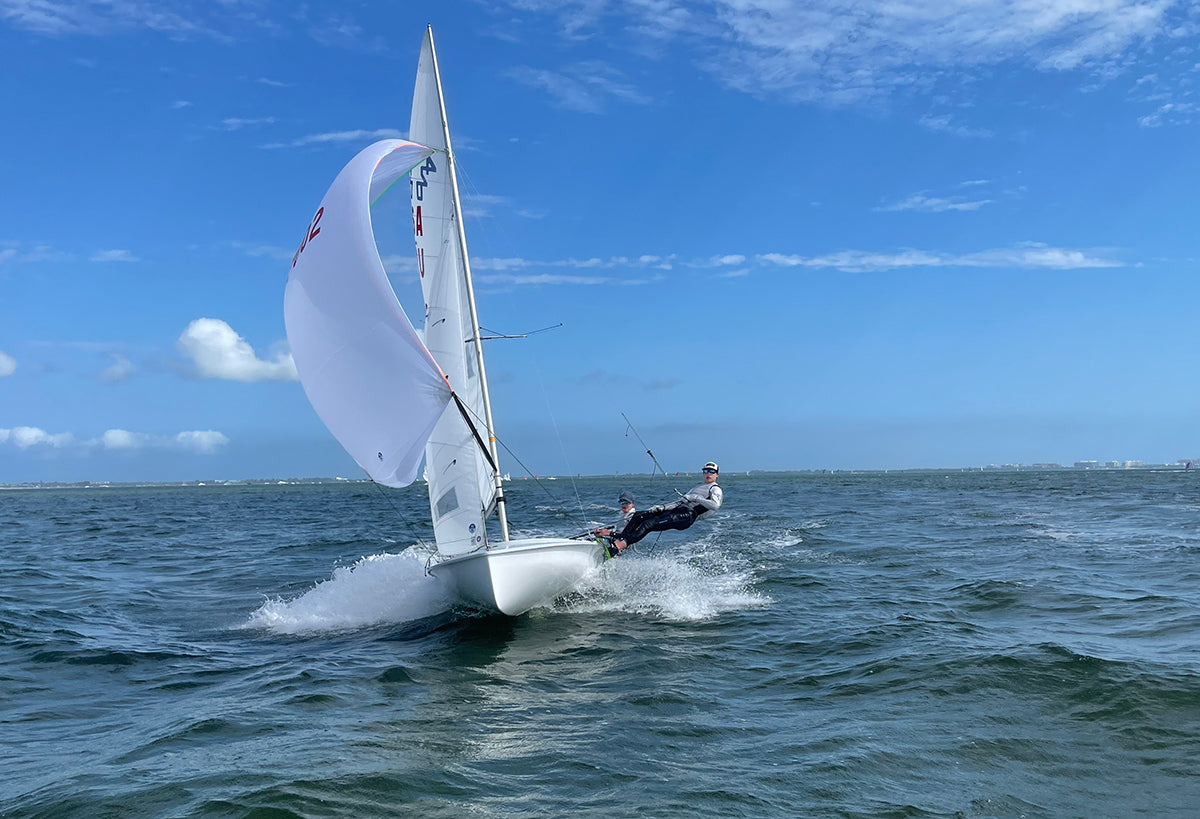
I420 US MIDWINTER CHAMPIONSHIP
i420 MIDWINTER CHAMPIONSHIP
Sitzmann/Woodworth Complete Winter Trifecta
Twenty-two teams competed at the 2021 International 420 Midwinter Championship, hosted by the US Sailing Center in Coconut Grove, FL. While much of the nation suffered through storms, snow, ice, and generally bad weather, competitors were treated to nearly perfect conditions from the practice day right through the last race.
Each day brought 80+ degree temperatures, plentiful sunshine, and SE/S winds that ranged from 6 to 18 knots. This 10-race series sailed all races between 160 and 180 degrees all weekend, with very few course alterations. Except for several general recalls that eventually brought out the Black Flag from the RC, I am not sure I can remember an event that offered such favorable sailing.
With such consistent conditions, this was a regatta that really put a premium on boat speed. Using a variety of sails including the M7, M9, and M11 mainsails, J12 and J13 jibs, and the S01 and S05 spinnakers, North Sails-powered teams dominated this event, finishing 1,2,3,5,6 overall.
Boats using North Sails also won every single race in this competitive ten-race series!
Third place overall went to former North American Champion Thomas Hall/Liam O’Keefe, and the brother team of Griggs/Emery Diemar finished 2nd. Congratulations to Tommy Sitzmann/Luke Woodworth for winning the i420 Midwinter Championship. In fact with this win, Tommy/Luke completed the winter trifecta, winning the Nationals, North Americans, and now the Midwinters.
All of our sail designs worked really well at this event! For more information on i420 Sails and tuning help, contact North Sails expert Tom Sitzmann.
SHOP 420 SAILS
READ MORE
READ MORE

NORTH SAILS RELEASES NEW J/70 TUNING GUIDE
NORTH SAILS RELEASES NEW J/70 TUNING GUIDE
New J/70 Designs, New Tuning Recommendations
After countless hours of sailing, testing, and competing in the J/70 fleet, our experts have updated the North Sails Tuning Guide. This guide is your go-to for recommendations and tips that will make it easy to get you up to race-winning speed with our World Championship winning sails. As we learn more about the J/70, we update information surrounding boat setup, tuning, and trimming techniques.
“With the introduction of the new sails to the J/70 inventory, the XCS-4 mainsail and J-2+ Jib, we revised the entire tuning guide making it easier to be followed. Two new Quick Tuning Charts were added; Rig Tension and Jib Trim, as well as new rake recommendations,” said Class Leader and current World Champion, Ruairidh Scott.
The Tuning Guide is a recommended starting point based on what we learned on the water. We encourage teams to explore and adjust the recommendations based on sailing style and preferences. And as always, contact your North Sails expert for all the most up-to-date information and for help tuning your boat.
OPEN TUNING GUIDE
READ MORE
READ MORE
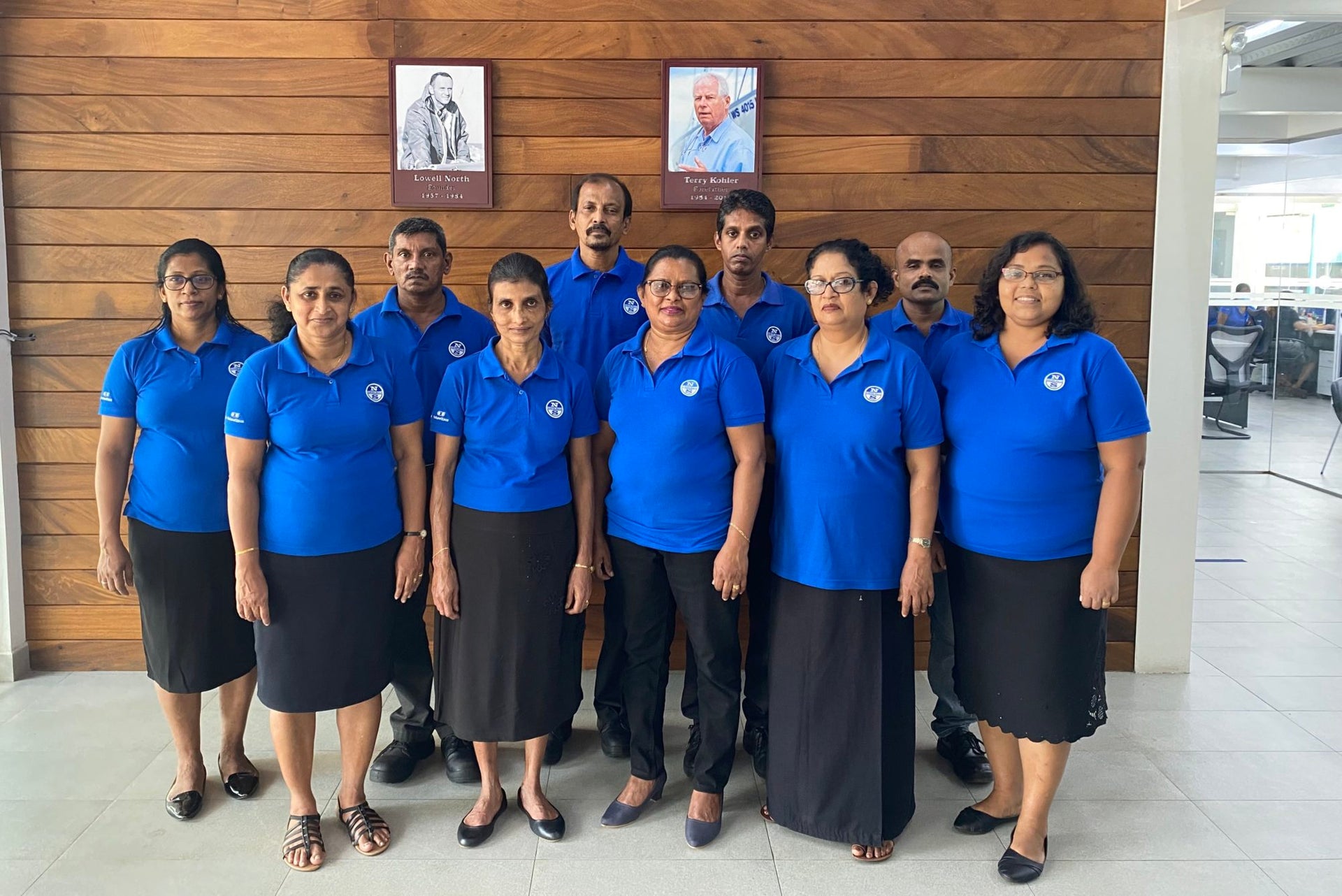
NORTH SAILS SRI LANKA CELEBRATES 25 YEARS
NORTH SAILS SRI LANKA CELEBRATES 25 YEARS
Evolving Together To Create The World’s Best Sail Technology
This month we give special recognition to ten employees who have been part of the North Sails team in Sri Lanka since 1996. Thank you for your hard work and dedication, which is a big part of why North Sails is the leader in sailmaking technology worldwide.
On February 1st, 1996, North Sails Sri Lanka facility opened with 12 employees, at one single loft location in the Biyagama Export Processing Zone. 700 employees now run the five buildings that make up the most advanced laminating line in the sail cloth industry—including 10 of our original employees. So together, we’re celebrating a silver anniversary!
How it began
When the facility first opened, capacity was just 25 one design sails per week. Today, a typical work week produces about 600 sails. The manufacturing compound consists of nine buildings, which house five 3D molds, Six 3Di tape heads, cloth lamination, and 11 flat-bed plotters with lasers. The total capacity is 20,000 sails per year, plus sail bags and accessories.
Creating a positive work environment
Over the course of their time at North Sails each employee has benefitted from their experiences in the workplace. It’s not just about building sails— it’s about building a framework and team structure that allows employees to succeed. With the many developmental programs, training sessions, and outbound programs to help align their cultures with the North Sails brand, the knowledge enhancement also offers staff a closer look into the inner workings of sailmaking.
📸 Lookatme.lk / Lasiru Lakruwan
“Outbound training has shown many benefits for employees,” says North Sails Sri Lanka Director Larry MacDonald, adding that the manufacturing team had the opportunity to build and sail remote control sailboats. “Many of the participants now are grasping the intricacies of the sport and the importance of sail design and workmanship. Employees were empowered with sailing know-how, improved problem solving, and communication skills. That has given them a better connection with our product, so they can make judgments and improvements to the sail assembling process naturally.”
During the pandemic the company has continued to provide a safe work environment, which allowed the facility to remain open.
Here’s some of what we heard when we reached out directly to our silver anniversary employees.
Employees Celebrating 25 Years
Indrani Wijebandara celebrates her 25th year anniversary with North Sails Sri Lanka. She believes that North Sails is the foundation stone of all her personal and social triumphs. She comments,
“This is my second home and I’m fortunate to be the first employee of North Sails Sri Lanka. I still remember my old days, 25 years ago, we worked with just a handful of people and with a very limited amount of resources. This company has evolved in so many ways, and in a very positive sustainable journey.”
Sumithra Gamage also celebrates her 25 year anniversary. She comments,
“The success of North Sails was not achieved overnight but with long term endeavors such as hard work, commitment and having the ability to overcome various challenges. I’ve enjoyed my 25 years here, which still feels like yesterday.”
Thank you to all of our employees who help contribute to our company success. A special thank you to the ten employees who’ve been part of our sailmaking revolution over the last 25 years.
1996
1998
READ MORE
READ MORE

OPGRADÉR DIN J/70 SEJLGARDEROBE FOR 2021
OPGRADÉR DIN J/70 SEJLGARDEROBE FOR 2021
North Sails tilføjer XCS-4 Storsejl og J-2+ Fok til udvalget af klassesejl
J/70 klassen er for sejler,e der kræver det bedste og North Sails Sails fortsætter med at opgradere og forbedre en allerede succesfuld sejlgarderobe. Nyt i 2021 er to designs i Norths udvalg af klassesejl, XCS-4 Storsejl og J-2+ Fok. Her er alt du skal vide.
XCS-4 Mainsail
XCS-4 er en finjusteret tilpasning til den vellykkede lineup af North Sails J/70 storsejl. "Det er et "all round" sejl, der er designet til at matche de stivere master, der har svært ved at få den rette forbøjning (pre-bend) i let luft,” forklarer North Sails-ekspert Will Welles. "Det er et godt valg for hold, der sejler med besætningsvægt på den lettere side."
J70-klasseleder og sejldesigner Ruairidh Scott kalder XCS-4 en udvikling af det EM vindende XCS-2-design. "Vi har arbejdet hårdt for at gøre sejlet glattere og lidt fladere. Mens F-1 storsejlet forbliver det fladeste i Norths udvalg, leverer XCS-4 bedst ydeevne under alle vindforhold. Sejlet er let at trimme og passer til både Selden og Southern Spars master. ”
"Vores mål er at udvikle sejl, der hjælper vores kunder med at få succes og tillid. Det arbejde, vi har lagt i J/70 sejldesignet, giver os mulighed for at hjælpe dig med at sejle det bedste du kan.”
J-2+ Jib
2021 J-2+ fokken tilføjer lidt mere dybde til den allerede succesrige J-2. "Vi prøver at gøre denne fok lettere at bruge,” siger North Sails J/70-ekspert Eric Doyle. ” J/70 har en ret stiv kulstofmast, hvilket gør det svært at at få et løst forstag, der falder til læ under meget lette vindforhold. J-2+ er lidt mere rund i bunden og i indgangen, hvilket gøre sejlet mere kraftfuldt og lidt enklere at styre på. Indhaler positionen er mindre kritisk med en J-2+, så dette er det sejl, der generelt er enkelt at trimme og en opgradering, når det er en udfordring at sejle båden i høj sø.
For hold, der foretrækker at sejle med mere mastehældning, er J-2+ også tilgængelig med et 50 mm kortere skøde.
Forbedring af sejldesigns er en lang proces. Efter at have indsamlet feedback fra sejlere, talte flere North Sails J/70-eksperter med designerne om, hvordan man gør J-2-fokken mere kraftfuld og lidt lettere at trimme. Med udgangspunkt i den eksisterende basisform brugte designerne flere måneder på at forfine den til det, der blev J-2+. Da alle var overbeviste om, at resultatet var en klar forbedring, blev kunderne bedt om at evaluere det og igen give feedback. Sejlets første kapsejladssejre var Annapolis Fall Regatta og Annapolis Fall Brawl i USA.
Giulio Desiderato brugte det nye design til at vinde 2021 Bacardi Invitational Winter Series Event # 1, og han er begejstret for at kunne gøre det lettere for kunderne at komme op i fart under vanskelige forhold. "Vi er heldige at have succesrige sejlere, der rejser rundt i verden og sejler J/70'er og bringer idéer tilbage til vores dygtige designere,” siger han. ”Vores mål er at udvikle sejl, der hjælper vores kunder med at få succes og tillid. Den tid og det arbejde, vi lægger i J/70 sejldesign, sparer sejlerne for tid, så stol på vores arbejde, og lad os hjælpe dig med at sejle det bedste du kan. ”
READ MORE
READ MORE

HRVATSKA DOMAĆIN TRI EUROPSKA I JEDNOM SVJETSKOM PRVENSTVU U IDUĆIH 14 MJESECI
Hrvatska domaćin tri Europska i jednom Svjetskom prvenstvu u idućih 14 mjeseci
📸 regate.com.hr
Tradicija održavanja vrhunskih jedriličarskih predstava u Hrvatskoj nastavlja se i ove sezone, a već su i za iduću godinu najavljena neke fenomenalne vijesti!
2021. godina proći će u znaku Europskih prvenstava, dok je za 2022. najavljeno i jedno Svjetsko prvenstvo!
Prvo ovogodišnje Europsko prvenstvo u hrvatskom dijelu Jadrana ono je koje organizira JK Mornar. Riječ je o Europskom prvenstvu klase Zvijezda. Termin održavanja je 24-29. svibnja. Uglavnom je riječ o vrlo iskusnim seniorima i veteranima od kojih su mnogi jedrili kako na raznim olimpijskim igrama tako i kao važni članovi posada u mnogim drugim posadama, krenuvši od krstaša, pa do Volvo Ocean Race i America's Cup bolida!
Tih dana posebno će biti zanimljivo vidjeti uvalu Baluni punu ovih jedrilica na vezu, jer se između pojedinih jedrenja one ne izvlače na suho, već noći provode na muringu. Sve novosti s regate možete pratiti na službenom web sajtu, kao i na službenoj Facebook stranici.
Drugo Europsko koje je pred nama je ono čijom organizacijom se bavi JK Marina Kaštela. U pitanju je regata za klasu Laser Radial i to u "youth" kategoriji. Kako je riječ o ženskoj olimpijskoj klasi za očekivati je da će konkurencija djevojaka biti iznimno jaka, dok kad su u pitanju momci riječ je o prijelaznoj klasi prema Laser Standardu.
Termin održavanja je od 26. lipnja do 3. srpnja a ne treba niti isticati da je mjesto jedrenja akvatorij Kaštelanskog zaljeva i vanjska strana otoka Čiova.
Sve aktualnosti oko regate možete pratiti na službenim web stranicama dostupnim na ovom linku, jednako kao i na sveprisutnom Facebooku.
📸 regate.com.hr
A u drugom dijelu ljeta, također u akvatoriju Kaštelanskog zaljeva i otoka Čiova, jedrit će se EP klase Šljuka. Organizatori su članovi JK Split i regatu planiraju organizirati između 29. kolovoza i 4. rujna. Inače, ovo prvenstvo se trebalo jedriti 2020., ali zbog svima poznatih nemilih događaja došlo je do odgode termina za godinu dana. Za razliku od Stella u Mornara, ove "male Stelle" nakon jedrenja idu vani, a njihove posade nisu toliko seniorski orijentirane jer je klasa iznimno popularna u svijetu zbog slobode u slaganju posada u vidu senior-junior, juniori, seniori, muško-ženska posada... i svi jedre zajedno.
Naravno i ove regata bit će dostupna na mreži svih mreža. Web sajt je dostupan na ovom linku, dok Facebookaši rezultate i ostale informacije mogu pratiti preko ovog linka.
A za iduću godinu pobrinuli su se članovi JK Val iz Šibenika koji su dobili organizaciju Svjetskog prvenstva klase IOM. Najbolji svjetski RU jedriličari regatavat će u Rogoznici od 3. do 9. travnja na istom regatnom polju gdje se jedrilo Europsko prvenstvo 2018. godine.
Šibenčani su vijest o organiziranju SP-a dobili prije desetak dana, tako da još uvijek nisu spremni web sadržaji, ali ono što je za sada sigurno je to da će Hrvatska ponovno imati jednu od najjačih reprezentacija na svijetu, a zlato i srebro će braniti Zvonko Jelačić i Ante Kovačević koji su ih osvojili 2019. na SP jedrenom u Brazilu.
Zgodno je spomenuti i to da je ovaj dvojac iste medalje osvojio na spomenutom kontinentalnom prvenstvu u ovom istom akvatoriju.
READ MORE
READ MORE
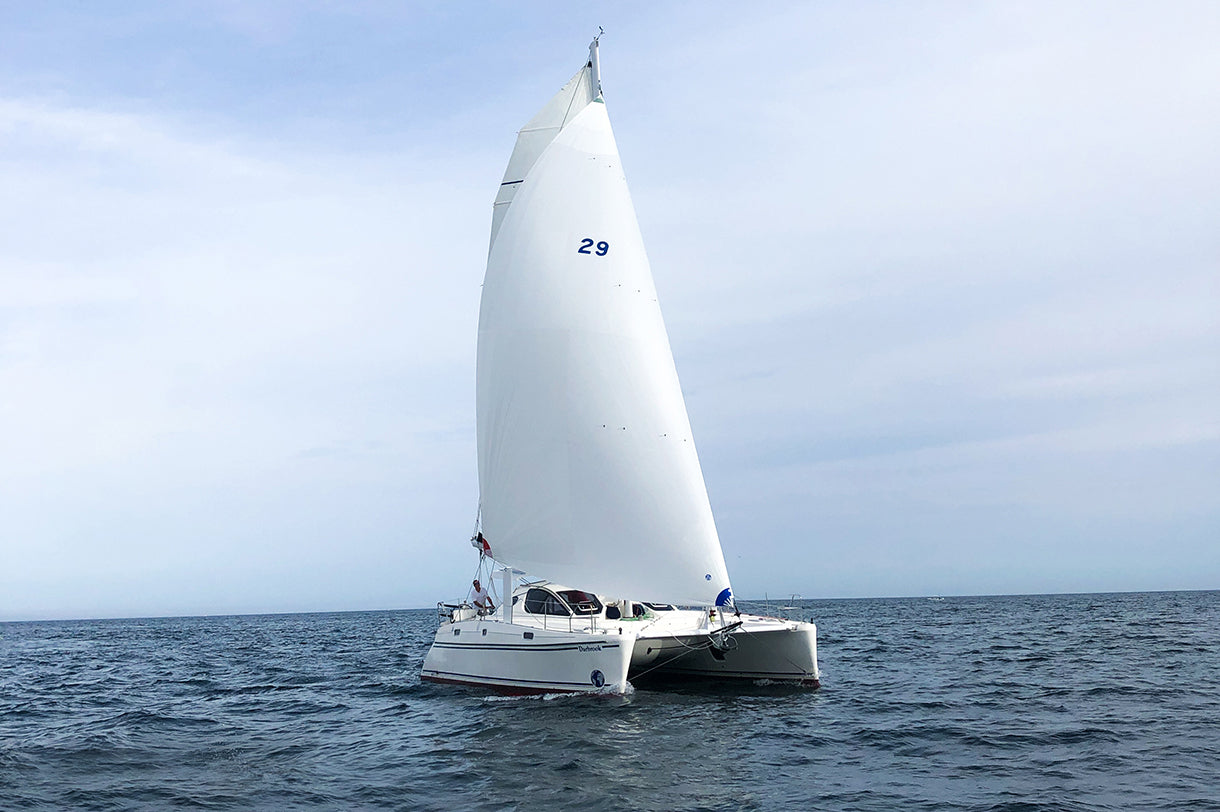
THE HELIX FURLING GENNAKER: YOUR NEW FAVORITE CRUISING SAIL
THE HELIX FURLING GENNAKER: YOUR NEW FAVORITE CRUISING SAIL
Expert Bob Meagher explains why you should update your Inventory
In the old days, you had two options for making it to your destination in time for cocktail hour: start the engine, or go below to lug a bulky spinnaker up to the foredeck. Unless you’re on a long enough passage to justify all that work, the diesel will probably be your first choice. Now a new gennaker gives you the best of both worlds. Regardless of whether you sail a monohull, multihull, or superyacht, I’m predicting it will become your new favorite cruising sail.
Benefits of the Helix Furling Gennaker
The Helix Furling Gennaker combines the power of an asymmetric spinnaker with the convenience of a Code Zero. Hoist it once and you have an easy-to-fly sail that will take you to that next harbor fast, even when your apparent wind angle is too far aft for your Code Zero reacher. Plus, this new gennaker is top-down furling, giving you a tight, neat furl that protects the sail.
How Does the Helix Furling Gennaker Compare to a Code Zero or Asymmetric Spinnaker?
The Helix Furling Gennaker is much deeper than a Code Zero. When the wind goes aft, release a little halyard or tackline and ease the sheet, and the luff will project out in front of a straight line between head and tack just like an asymmetric spinnaker. If the wind goes back forward again, just snug up the halyard or tack line to tighten the luff and reduce the sail’s depth.
How Does the Furling Work for the Helix Furling Gennaker?
The advances North Sails has made in structured luff technology and sail design are the key to making this all-new sail type work. Unlike a traditional furling sail that wraps around a stiff and heavy torque cable, the fabric provides most of the structure. A pencil-thin proprietary Helix cable allows for top-down furling without the weight aloft of a traditional cable, and its flexibility eases both handling and stowage.
You can leave it up and furled like a Code Zero, and top-down furling makes it far more reliable than a typical bottom-up furl. When sails with large middles or low clews roll from the bottom up, the foot is sucked in first, dragging the clew forward and changing the sheet angle—which sometimes leaves the upper leech loose. Top-down Helix furling wraps securely, and the built-in suncover protects the sail from UV damage at rest (check out this video to see top-down Helix furling in action). When flying, the sail tacks in front of the genoa, but on a catamaran it can also fly from the windward hull, farther away from the mainsail’s wind shadow.
Make the Move to the Helix Furling Gennaker
From tight reaching to broad running angles, the Helix Furling Gennaker may replace both your Code Zero and your asymmetrical cruising spinnaker. This new cruising sail saves you storage space and money, and leaving it furled and ready to deploy saves aggravation. A single downwind sail you can keep rigged and ready to go, the Helix Furling Gennaker will get you to that next harbor even when the wind shifts. And that’s a lot more fun than starting the engine.
Questions about how the Helix Furling Gennaker will work on your boat? Contact your local North Sail expert to decide if this will turn into your favorite downwind cruising sail.
PRODUCT DETAILS REQUEST A QUOTE FIND AN EXPERT
READ MORE
READ MORE
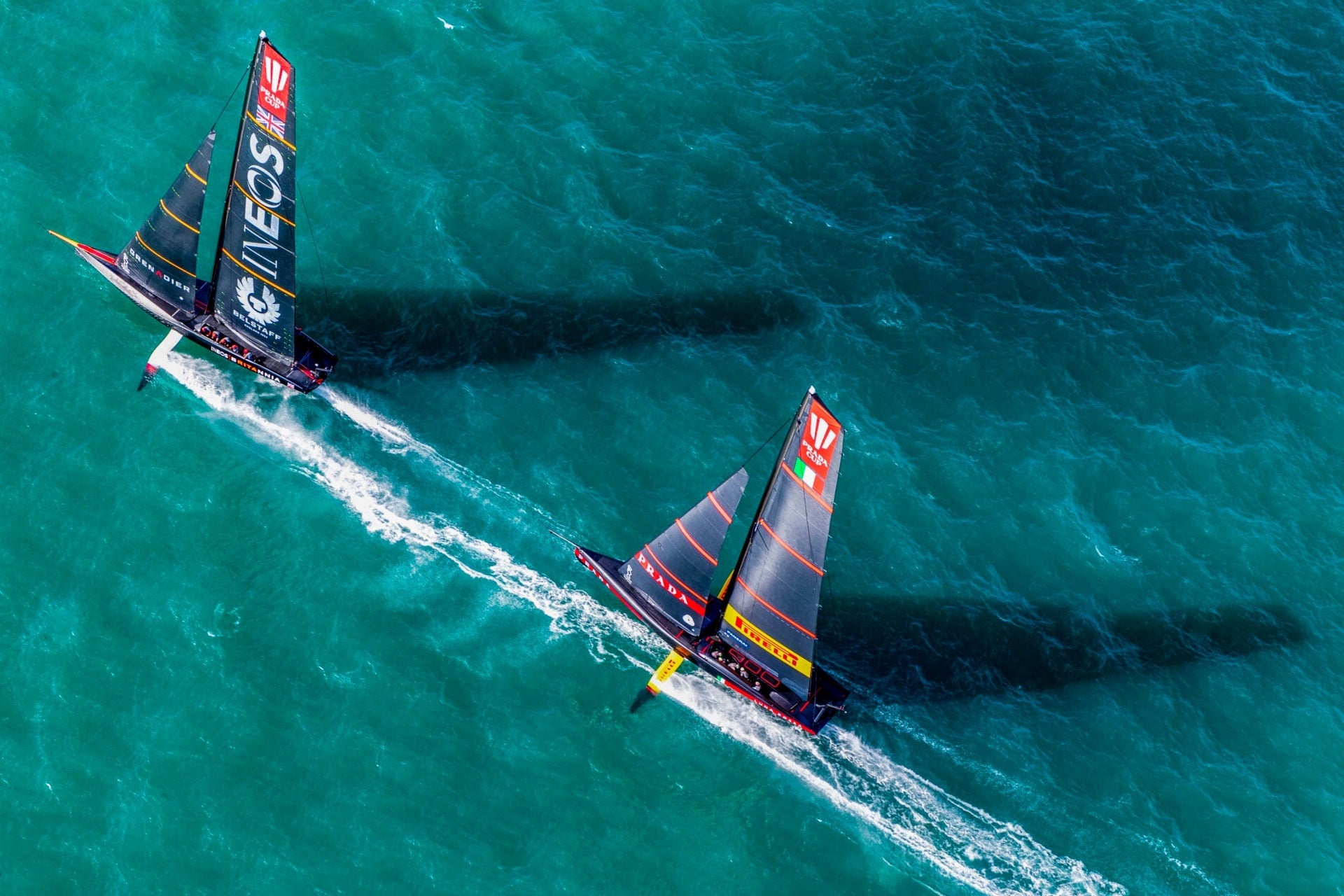
AMERICA’S CUP FAST FACTS
There’s been a lot of Googling America’s Cup facts and stats around the North Sails offices over the past few weeks. We’ve gathered some numbers for you so you don’t have to go searching when you’re asked “how many headsails is each team allowed?” Hint, it’s a lot!
READ MORE
READ MORE
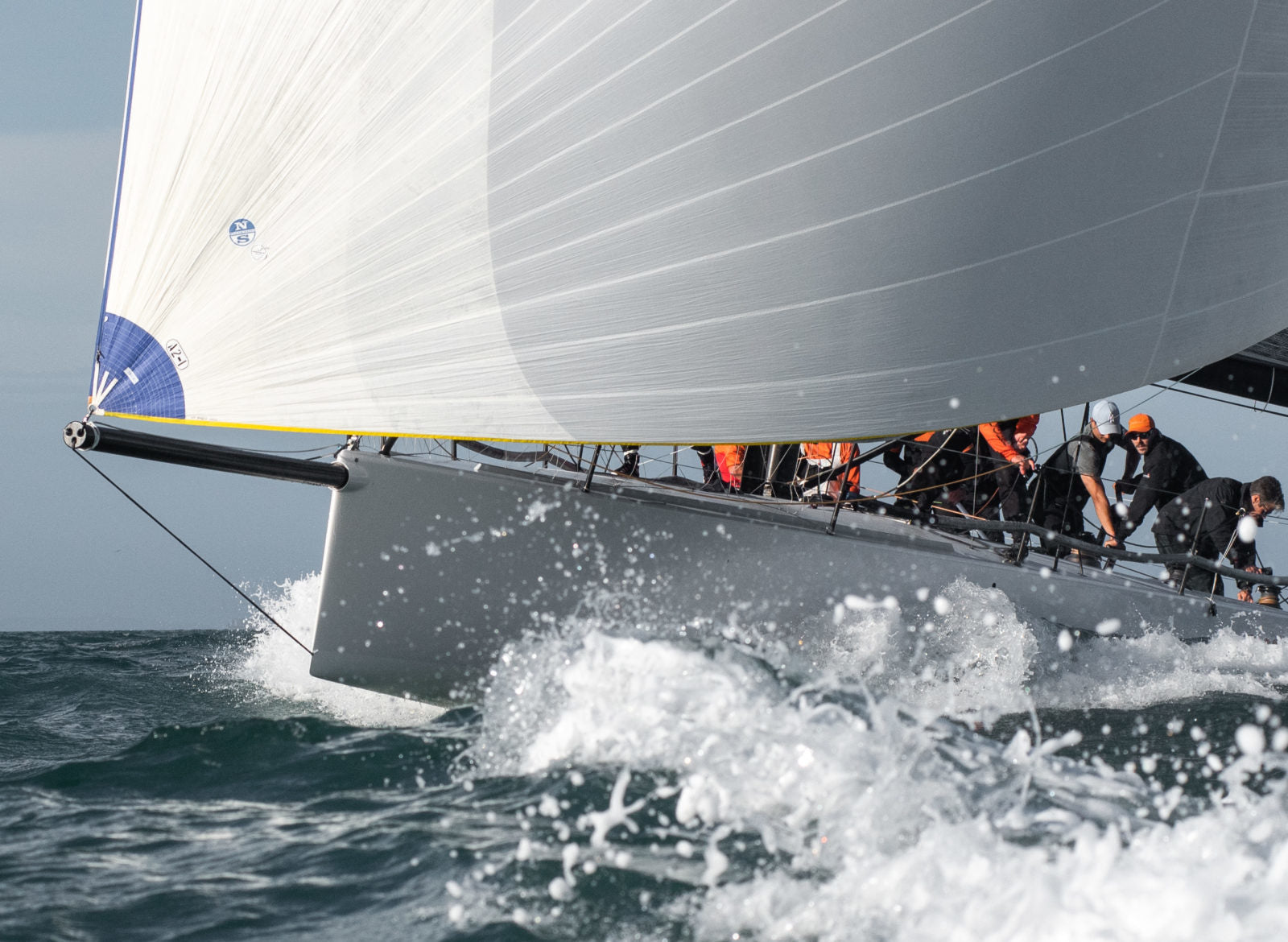
ALL ABOUT DOWNWIND SAIL TRIM
ALL ABOUT DOWNWIND SAIL TRIM
Tips for Off-Wind Angles
📸 Lissa Photography
Reaching
Close Reaching
As you bear away from close-hauled to a close reach the forces on the sails rotate forward, speed jumps, and heeling forces are reduced. To make the most of the wider wind angle, retrim the sails for the new course. Ease the jib and, for best performance, move the lead outboard and forward, chasing the clew of the sail with the lead. Keep the halyard firm to hold the draft forward and prevent the back of the sail from becoming too round. If the lead is not moved as the sheet is eased, then the top of the sail will twist open, spilling power, and the bottom of the sail will hook in toward the boat, creating excess drag.
With the jib trimmed outboard, ease the main. Keep the vang tight, and ease the mainsheet or lower the traveler. As the main goes out, heeling forces decrease, and the boat accelerates. As the boom goes out, the vang is critical to control twist. As an initial setting, take the slack out of the vang while trimmed for close-hauled. As you turn to a reach and ease the mainsheet, the vang will go taut, preventing the boom from rising and the leech of the main from spilling.
When overpowered on a reach, easing the vang will spill power, reduce heel, and balance the helm. Use the telltales to fine tune trim. The leech telltales should be flowing. If the sail luffs, then trim in. Also, ease the outhaul and backstay slightly to add power to the main. On a heavy air “blast reach” keep the main flat, and ease it to half luffing, if necessary, to control heeling forces and weather helm. If still overpowered, then reef.
On a close reach, a reefed main and big jib can be an effective sail combination.
Beam to Broad Reaching
As we bear off more, the boat stands upright. Ease sails, using the telltales to match the angle of attack to your course. On a beam to broad reach, the top of the jib will spill open. Trim to keep the middle of the sail working. Ease the main until it luffs. The main should go way out—out against the rigging if necessary. If the sail doesn’t luff, let it rest against the rig. It won’t hurt the sail or the rig. Keep the boom vang firm enough to hold the top batten of the main parallel to the angle of the boom.
Reaching in a beam or following sea can be treacherous, as the boat lurches around. A preventer (a line that holds the boom out) should be rigged to prevent the boom from swinging wildly. Autopilots are at their worst in these conditions, as are human steerers. A spinnaker can add extra power, speed, and stability. Short of that, motor sailing is an option—or consider a new destination.
Running
Wing and Wing
Running dead before the wind under jib and main requires careful steering to avoid an accidental jibe. In light air, it often pays to reach up, sailing with the jib in normal position, as the extra speed will make up for the extra distance.
In more breeze, running wing and wing (with the main on one side of the boat, and the jib on the other) can be a very stable way to sail dead downwind. A whisker pole will help the genoa fly much more effectively.
The pole should be set with topping lift, afterguy, and foreguy to hold the pole in place. With the pole trimmed to position, the genoa sheet is run and trimmed through the end of the pole.
In heavy air there are often following seas, which can make steering a challenge. A poled out jib allows sailing above a dead downwind course, which provides a wider steering lane and reduces the chance of an accidental jibe.
To control the main and boom, rig a preventer. The line should run from the end of the boom to a block well forward on the rail, and then back to the cockpit, near the mainsheet cleat. Every time you ease the mainsheet, tighten the preventer. It doesn’t have to be bar-taut – just tight enough to prevent the boom from jumping around. If it’s led this way, the preventer can easily be adjusted or cast off as necessary.
Learn more about trimming an asymmetrical spinnaker here.
Gennaker Trim
Cruising spinnakers or gennakers are remarkable sails for their ability to change shape to match your course and wind angle. By trimming both the tack line and spinnaker sheet, we can transform the sail from a genoa to a spinnaker, and back again. For best performance, a symmetric spinnaker must carry a curl. In contrast, a gennaker will deliver top performance without trimming on the edge of a luff. Ease the sheet until it curls to make sure the sail is not overtrimmed, and then trim just enough to remove the curl. For optimum performance, play the gennaker sheet constantly. (Me? I check it between naps.)
Learn more about cruising sail trim here. What’s the difference between a spinnaker and a gennaker? Learn more here.
Adjusting the Tack Line
It is adjustments to the tack line that allow us to so drastically change the shape and performance of the sail. On beam reaches, keep the tack line snugged down and the luff of the spinnaker pulled firm. The Gennaker assumes the shape of a great reaching genoa.
On a broad reach, ease the tack line and allow the tack to lift. Easing the luff lets the Gennaker roll out from behind the mainsail to assume a more powerful spinnaker-like shape.
📸 Marc Turner / CCC
Spinnaker Trim
There are three initial settings for spinnaker trim and refinements that can further improve performance.
For starters:
Trim the guy to set the pole perpendicular to the wind.
Raise or lower the topping lift so the pole and tack are the same height as the clew.
Ease the sheet to curl the luff, and trim to just take out the curl.
From these initial settings we can fine tune trim in several ways.
Unless it’s very windy, the guy can be trimmed aft further than square to the wind. The goal is to get the luff to run vertically from the shoulder of the spinnaker down to the tack, and to get the shape across the foot to match the mid shape.
If the shoulder is rolled out, and the foot is too round, then trim the guy to pull the pole aft. If the foot is stretched flat, and the tack is poking out to windward, then ease the guy to let the pole forward.
Learn more about setting a spinnaker here.
Pole height can be fine tuned:
On a broad reach fly the pole higher, keeping the two corners (clew and tack) even. In fresh breeze beware of flying both corners too high, which lets the spinnaker get too far from the boat and may decrease stability. If the boat is rolling side to side, try lowering the pole, pulling the pole aft, and/or choking down the sheet lead.
📸 Lissa Photography
VMG Tip
In lighter winds, the key to success is sailing fast angles. Do not sail dead downwind in light air—reach up until you feel some apparent wind from the side. Often the best course may be as much as 40 degrees above straight downwind. You’ll sail extra distance, but you will go so much faster that you’ll arrive downwind sooner, and you’ll have a more enjoyable sail to boot!
See also: How to Hoist and Douse a Gennaker
READ MORE
READ MORE
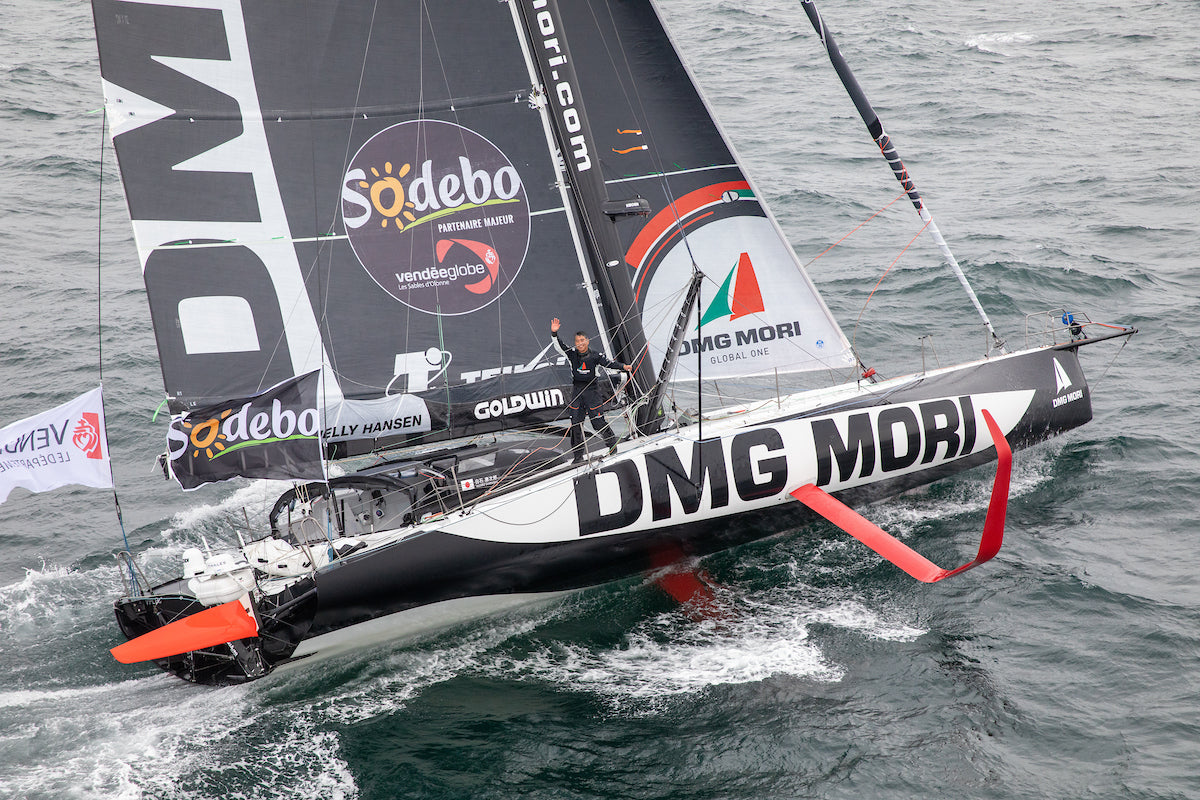
A DREAM BECAME REALITY: KOJIRO ON THE VENDÉE GLOBE
KOJIRO: “THE VENDÉE MAKES ME STRONG AND MAKES ME WANT TO SAIL.”
When he left Les Sables-d’Olonne on November 8, Kojiro Shiraishi had no idea that he was finally going to realize his dream of finishing the Vendée Globe. He had granted us an interview a few days before the start of his second Vendée Globe.
© Olivier Blanchet/Alea
On November 8th, Kokijo Shiraishi (DMG Mori), dressed in his black combat suit, sword at the belt, greeted the crowd as he made his way up the channel of Port Olona in Les Sables-d’Olonne. He had no idea that he was finally going to realize his 30-year-old dream: Finish the Vendée Globe. A dream that almost collapsed a week after his start when damage to the autopilot and violent gybes broke the top of the mainsail. But thanks to remote instructions from his team and North Sails, he managed to repair the sail.
It was a tremendous relief. The adventure could resume. “It’s the most wonderful day,” he said at the press conference after returning from his race. And then on February 11, 2021 at 11:52 a.m., at the end of a long journey of 94 days and 21 hours, Kojiro crossed the finish line with a smile full of gratitude and humility (ranked 16th). This is an amazing feat for this 53-year-old Japanese skipper, who marks the history of the Vendée Globe in his own way by becoming the first Asian sailor to complete this legendary race. He gave us an interview at the beginning of November before casting off for his second Vendée Globe.
Can you talk about yourself and your career as a sailor?
I am originally from Kamakura, a coastal town south of Tokyo, Japan. In my country, ocean racing is not popular, and it is by chance that I discovered the sailing profession at the age of 16. After seeing on TV the victory of Yukoh Tada (Japan’s sailing legend) in the BOC Challenge (single-handed round-the-world race with stopovers), I told myself that this is what I wanted to do: sailing around the world on a racing yacht. And then I went to meet Yukoh Tada. I trained with him and became his trainer for six years. I helped build his new sailboat Koden VIII, later renamed “Spirit of Yukoh” in his memory.
Since then, I have sailed around the oceans, three times around the world, including one non-stop race. I took part in the race of my dreams four years ago, the Vendée Globe, but I had to give up after dismasting off the coast of South Africa. I also had the chance to sail alongside great sailors like Lionel Lemonchois and Bruno Peyron during the Pacific records, as well as with Roland Jourdain, who accompanied me as a coach throughout my DMG Mori project.
© Jean-Louis Carli / Alea
What attracts you to this job? Why are you doing the Vendée Globe?
I feel good on the water and the landscapes you encounter in the South Seas are fantastic. To be able to sail around the world and have the land as your playground is unique. There is no other event in this world like this race. A race that makes me strong and makes me want to sail.
How was your first Vendée Globe?
To be at the start of this 8th edition was an exploit because time was running out for me. I got my boat in April 2016 and within a few weeks I had to qualify and do the New York – Vendée transatlantic race. Then a month after the start of the Vendée Globe, I dismasted… I was obviously disappointed with the result, and I still am, but I am lucky to be able to do the Vendée Globe again and I am grateful to all the people who have supported me so far.
How is sailing perceived in Japanese culture?
Both ocean racing and yachting are not widespread in my country. Historically, Japan is not a nation that has made great land discoveries. Therefore, sailing has not really had its place in Japanese culture. But my mission today and since I have been a professional sailor is to try to expand the small existing sailing community and promote ocean racing as much as possible in Japan.
© Thomas Deregnieau / DMG Mori
Do you know other Japanese sailors?
Yes, I do of course. The few Japanese sailors who have made a breakthrough in this field have often worked outside their country and have raced on America’s Cup boats. But lately, there are several young sailors, including Masa Suzuki in Class40 and other young Japanese sailors who have accompanied me in my preparation for the Vendée Globe and who are trying their hand at the IMOCA. I’m happy to no longer be the only Japanese to sail here in France. But today, and even if it is a great honor to have become the first Asian to have participated, I want to become the first to finish the Vendée Globe.
What do you think of the sailing culture in France? Why aren’t there more foreign skippers in the Vendée Globe?
France remains the best country in the world in terms of ocean sailing. I’m also grateful to all the people around me for welcoming me to this very closed environment. Offshore racing is particularly difficult to integrate, which explains why there are fewer international skippers participating in the Vendée Globe. But I hope that my case can serve as an example for other foreign sailors who wish to integrate this special universe.
Is it difficult to sail on an IMOCA? What do you think of these boats?
An IMOCA is a powerful boat, so each manoeuvre, each sail change requires a lot of physical effort. They are demanding boats, but the sensations of speed that you can have are so different than on other boats and that’s really what I like.
Do you feel much more prepared than on the last Vendée Globe? What do you expect from this race?
It has only been 1 year since my boat has been sailing. We need to do even more sailing together so that the boat is perfect, but I know that time is short and that the boat will not be perfect before the start of this Vendée Globe. The goal is to finish at all costs. This is my one and ultimate goal.
And Kojiro did it! Bravo!
© Thomas Deregnieaux Photography
READ MORE
READ MORE
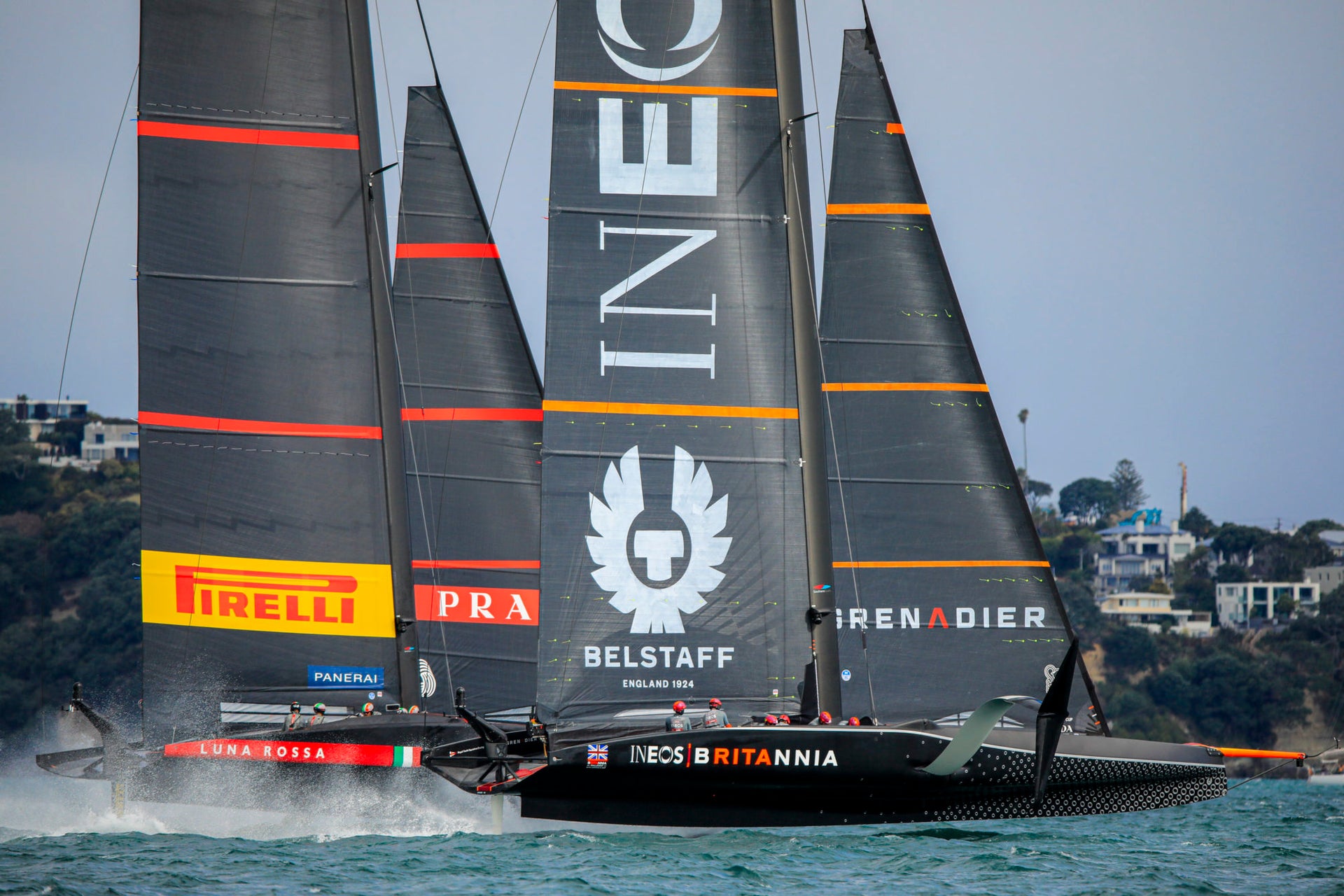
THE CUNNINGHAM HITS THE BIG TIME
Upon finishing the phenomenal PRADA Cup Round Robin Day 4, packed with lead changes between INEOS Team UK and Luna Rossa PRADA Pirelli, Sir Ben Ainslie described an issue on the boat: Britannia’s Cunningham hydraulic ram failed to work for the entire race.
READ MORE
READ MORE

SPILER TIL KAPSEJLADS VS. GENNAKER TIL TURSEJLADS | HVAD ER FORSKELLEN?
FORSKELLEN PÅ EN GENNAKER OG EN SPILER
At vælge det rigtige sejl til hver lejlighed
📸. Lissa Photography
Som en skaffel (kombination af en ske og en gaffel), stammer navnet Gennaker fra kombination af de to engelske ord Genua og Spinnaker. Ulig en skaffel, er gennakeren en ny sejltype. Hvad præcist er en gennaker? Kort fortalt, en gennaker har en genuas form (asymmetrisk, hvor Halsen er fastgjort til stævne og begge skøder er i samme skødehjørne med den samme dybde som en Spiler. Gennakeren er et alsidigt sejl til halvind og læns, mens spileren er bygget til dybe vindvinkler (læns).
Udtrykket gennaker kan virke kompliceret. Lad os først sikre os, at vi forstår de to originale sejltyper: Spileren og Genuaen.
Hvad er en spiler?
En populær online ordbog definerer spileren som: En Spiler er et ballonlignende sejl der er designet til at sejle med vinden på læns og slør... Dengang alle spilere var symmetriske, ville ordbogens definition have været fin.
I dag er tingene lidt mere komplicerede.
Asymmetric spinnakers on Melges 32's. 📸. Zerogradinord / Melges 32 Class Association
Symmetriske spilere og asymmetriske spilere
Vi beskriver nu spiler på ovenstående billede som symmetriske spiler. Del en spiler lodret i to halve og de to sider vil være spejlbilleder. Luv skødehjørne holdes ud med en spilerstage der er fastgjort på mastens forside, og når der bommes flyttes stagen til det modsatte hjørne på spileren. I modsætning til et forsejl, er der ingen defineret tack or clew; begge er clews, indtil stagen er fastgjort og det hjørne bliver the tack.
(Ja, det er kompliceret.)
Symmetriske splere er fortsat en levedygtig sejltype til sejlads på medvind på både udstyret med spilerstager og den nødvendige rigning. De flyver godt, når de sejler "dybt", med spilerstagen kvadreret godt bagud - eller som ordbogen siger, "når de løber for vinden." I løbet af de sidste par årtier er en anden spiler-type blevet mere og mere populær - den asymmetriske spiler eller " Et sejl." En asymmetrisk spiler har tre forskellige hjørner:Hmm, det lyder meget mere som et fok eller en genua...
Asymmetriske spilere er populære på både, der har permanente bovspidser eller tilbagetrækkelige stager. De bruges også af cruisingsejlere, fordi de er lettere at håndtere end symmetriske spilere.
Mens symmetriske spilere og asymmetriske spilere ser forskellige ud, er de begge spilere under måleretningslinjerne i de fleste kapsejladsregler. Vi går ikke nærmere ind på specifikationerne for sejlmålingsprotokoller her, men formålet er at se på at spilere bærer betydelig omkreds (bredde) og derfor er nyttige, når de reaching/running. Et bredt, kurvet sejl som dette flyver simpelthen ikke med vinden.
Fleet of symmetric spinnakers. 12 Metre Worlds 2019, Newport, RI 📸. Ian Roman
Hvad er en genua?
Hvis du googler 'Genua', er dette sandsynligvis, hvad du vil finde: en stort fok eller et forsejl, hvis fod strækker sig agterud for masten, især brugt på kapsejladsbåde. Alle fokke og genuer er asymmetriske; del en fok i to lodret, og de to resulterende stykker er næppe spejlbilleder. Også her hjælper retningslinjerne for måling af kapsejladsregler yderligere med at definere standardformen for en fok eller en genua: Trekantet, med en mindre omkreds end en spiler, med kun et hjørne (clew) tilladt at flyve frit (med fastgjorte reb for at holde det under kontrol).
Genoa headsail. 📸. Paul Wyeth
Hvis du googler 'Genua', er dette sandsynligvis, hvad du vil finde:
en stort fok eller et forsejl, hvis fod strækker sig agterud for masten, især brugt på kapsejladsbåde. Alle fokke og genuer er asymmetriske; del en fok i to lodret, og de to resulterende stykker er næppe spejlbilleder. Også her hjælper retningslinjerne for måling af kapsejladsregler yderligere med at definere standardformen for en fok eller en genua:
Trekantet, med en mindre omkreds end en spiler, med kun et hjørne (clew) tilladt at flyve frit (med fastgjorte reb for at holde det under kontrol).
En dag for mange år siden var der nogen der tænkte: måske skulle vi tage en genuas form (asymmetriske dimensioner, head and tack pinned down, a couple of sheets tied to the clew) og give den mere omkreds som en spiler. Det er vanvittigt nok til at kunne fungere! Men hvad skal man kalde denne genua / spiler? Og så blev gennakeren født.
En gennaker flyver ikke som en genua. Og den er ikke lige så effektiv som en spiler, der er bygget til specifikke vindvinkler. Men en gennaker fungerer godt som et alsidigt medvinds sejl til reaching/(almost) running. Og fordi der ikke er brug for nogen spilerstage, er en gennaker meget lettere at rigge og sætte end en symmetrisk spiler.
En gennaker har den asymmetriske form som en genua med en spilers omkreds (bredde).
Er en gennaker til kapsejlads eller tursejlads?
Er en gennaker et cruisingsejl eller et kapsejladssejl? Ja. Det kommeer an på. Mange kapsejladsregler kræver et specifikt mindstemål for en spiler og et maksimal omkredsmål for at kvalificere sig som et lovligt forsejl - og det efterlader en no-go-zone derimellem. Når det sker, skaber dette "ulovlige"sejlstørrelsesområde til kapsejlads en meget håndterbar gennaker til tursejlads.
For nylig er regler for rating / handicap begyndt at fjerne denne gråzone - måske har du hørt udtrykket "tweener" sejle? Hvis du har en gennaker, kan din sejlproducent hjælpe dig med at afgøre, om den kvalificerer sig til den type kapsejlads, du vil deltage i.
En anden grund til, at udtrykket gennaker er forvirrende, er, at dets anvendelse har udviklet sig forskelligt rundt om i verden. Afhængigt af din placering henviser navnet muligvis til en cruisingorienteret sejlkonfiguration. Eller det kan beskrive et meget højteknologisk, tætvindsvinkel, sejl på højeste grand prix niveau. Hvis du har brug for hjælp, skal du bede din lokale North-ekspert om at forklare brugen.
Udviklingen indenfor gennaker-teknologien
Udviklingen indenfor gennakere har flyttet sig meget hurtigt i de seneste år, til både tur- og kapsejlads. Et godt eksempel er North Sails Helix Rulle Gennaker. For mere information om branchens leading edge henvises til Helix, Load-sharing og Structured Luff. Utroligt meget mere end en skaffel - en gennaker er en god tilføjelse til din sejlgarderobe - til både tursejlads og kapsejlads. North Sails er glade for at introducere Helix Rulle Gennaker, en ny sejltype til cruisingmarkedet. Den strukturerede luff Helix Furling Gennaker eliminerer det tunge kabel, der kræves til traditionel rulning, og er det mest pålidelige og let håndterbare top-down rullende cruising sejl i verden.
Helix Structured Luff transformerer, hvordan sejl flyver, og er nøglen til at opbygge en moderne sejlgarderobe. Vores cruisingsejl med struktureret luff giver en mere pålidelig rulning end et sejl, der vejes ned med et tungt kabel, er vægtmæssigt lettere, nemmere at håndtere og har et bredere udvalg af vindvinkler. Det reducerer antallet af sejl, du har brug for ombord, såvel som slidtage, hvilket gør det til den perfekte tilføjelse til din cruisingsejlgarderobe.
Med en række materialer at vælge imellem er en Helix Rulle Gennaker tilpasset bådens størrelse og anvendelse: fra familie cruiser til superyacht. Oprindeligt udelukkende et 3Di-sejl, nu er Helix Structured Luff tilgængelig i en række materialer fra vævet polyester til 3Di. På bestilling kan et valgfrit LightWeight UV-cover tilføjes til Helix Rulle Gennaker. For mere information, kontakt din nærmeste North Sails ekspert.
READ MORE
READ MORE
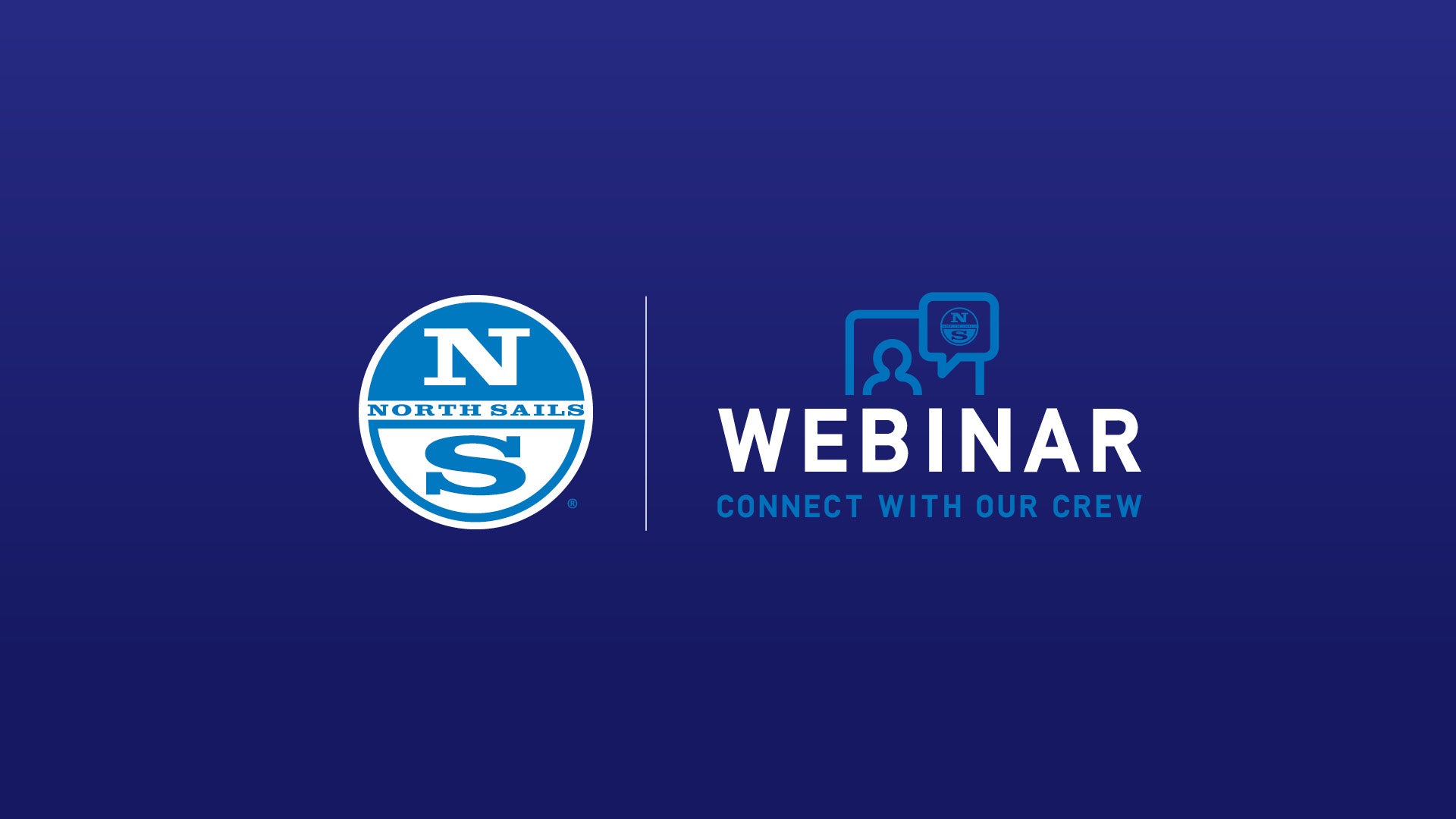
BASIC RACING RULES OF SAILING EXPLAINED
BASIC RACING RULES OF SAILING EXPLAINED
Visual Interactive Webinar
In this webinar, North Sails experts Zeke Horowitz and Brian Hayes explain and demonstrate basic rules according to the US Sailing “Racing Rules of Sailing”. Using a whiteboard, Zeke re-creates many scenarios that we experience on the racecourse to explain the rules and when they can be applied. The webinar was presented to Flying Scot sailors, but the rules apply to all one-design classes. Below are the timestamps if you want to jump to a specific topic of interest.
Definitions:
4:41 – Clear Ahead and Clear Astern; Overlap
6:57 – Keep Clear
8:45 – Leeward and Windward
10:30 – Proper Course
12:21 – Room
14:08 – Zone
Scenarios:
17:01 – Starting Line Situations (Windward/Leeward, Rule 16, Rule 17, “Barging” and Rule 13)
50:04 – Mark Room (Weather and Leeward Mark)
1:22:00 – Open Water (Room to Tack, Room to Duck, Tacking too close, Rule 17, Rule 18)
If you have a question, please don’t hesitate to contact Zeke or Brian.
READ MORE
READ MORE
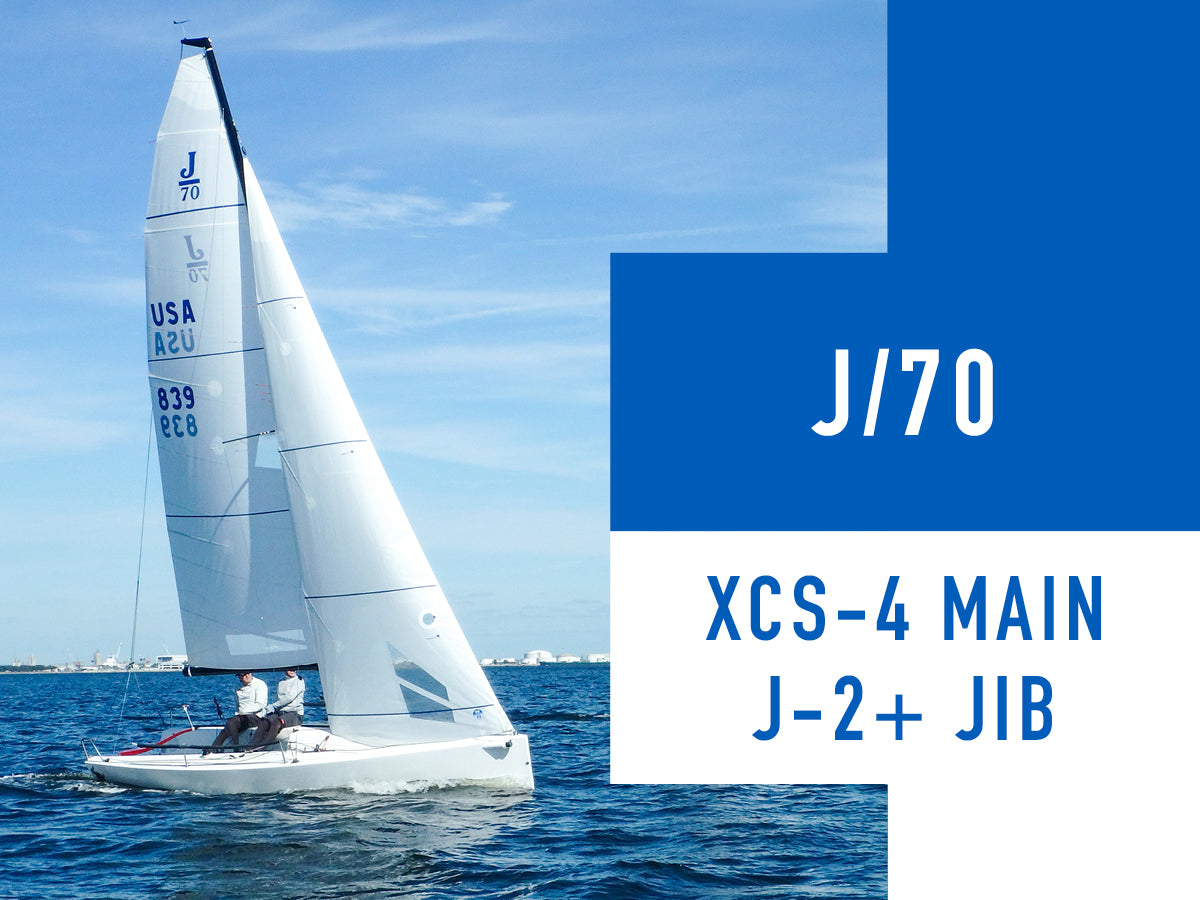
NORTH SAILS J/70 TEAM LAUNCH TWO NEW SAIL DESIGNS
UPGRADE YOUR J/70 INVENTORY FOR 2021
North Sails adds the XCS-4 Mainsail and the J-2+ Jib to the class line-up
The J/70 class attracts sailors who demand the best, and North Sails continues to upgrade and improve an already successful inventory. New for 2021 are two designs added to the North class line-up; the XCS-4 Main and J-2+ Jib. Here’s what you need to know.
XCS-4 Mainsail
The XCS-4 is a fine-tuned adjustment to the successful lineup of North Sails J/70 mainsails. “It is an all-purpose sail, designed to match the stiffer masts that have a hard time getting the proper prebend in light air,” North Sails expert Will Welles explains. “It would be a nice choice for teams that sail on the lighter side of crew weight.”
J70 Class leader and sail designer Ruairidh Scott calls the XCS-4 an evolution of the European championship-winning XCS-2 design. “We have worked hard to make the sail smoother and flattened it slightly. While the F-1 main remains the flattest in the North lineup, the XCS-4 delivers optimum performance in a variety of conditions. The sail is easy to trim and suited to both Selden and Southern Spars masts.”
“Our goal is to develop sails that help our customers be successful and confident. The work that we put into J/70 sail design let us help you sail at your best.”
J-2+ Jib
The 2021 J-2+ adds a little more depth to the already successful J-2. “We are trying to make this jib easier to use,” says North Sails J/70 expert Eric Doyle. “The J/70 has quite a stiff carbon mast, which makes it hard to sag the forestay in really light conditions. The J-2+ is slightly fuller down low and forward, for more power and a bit more entry angle. In-hauling precision is less critical with the J-2+, so this is the ideal sail for those of us that don’t get to race as often as we like. It’s really an upgrade when racing in bumpy conditions and driving the boat is challenging.”
For teams who prefer to set up with more rake, the J-2+ is also available with a 50mm shorter leech.
Sail design improvement is a long process. After collecting feedback from the fleet, several North Sails J/70 experts talked with the designers about how to make the J-2 jib more powerful and a little easier to trim. Starting from the existing base shape, the designers spent several months refining it into what became the J-2+. Once everyone was convinced the result was an improvement, customers were asked to evaluate it and again provide feedback. Its first regatta wins were the Annapolis Fall Regatta and the Annapolis Fall Brawl.
Giulio Desiderato used this new design to win the 2021 Bacardi Invitational Winter Series Event #1, and he is excited about making it easier for customers to get up to speed in difficult conditions. “We are lucky to have successful sailors that travel around the world sailing J/70’s and bring ideas back to our great designers,” he says. “Our goal is to develop sails that help our customers be successful and confident. The time and work that we put into J/70 sail design will save sailors time, so trust in our work and let us help you sail at your best.”
READ MORE
READ MORE
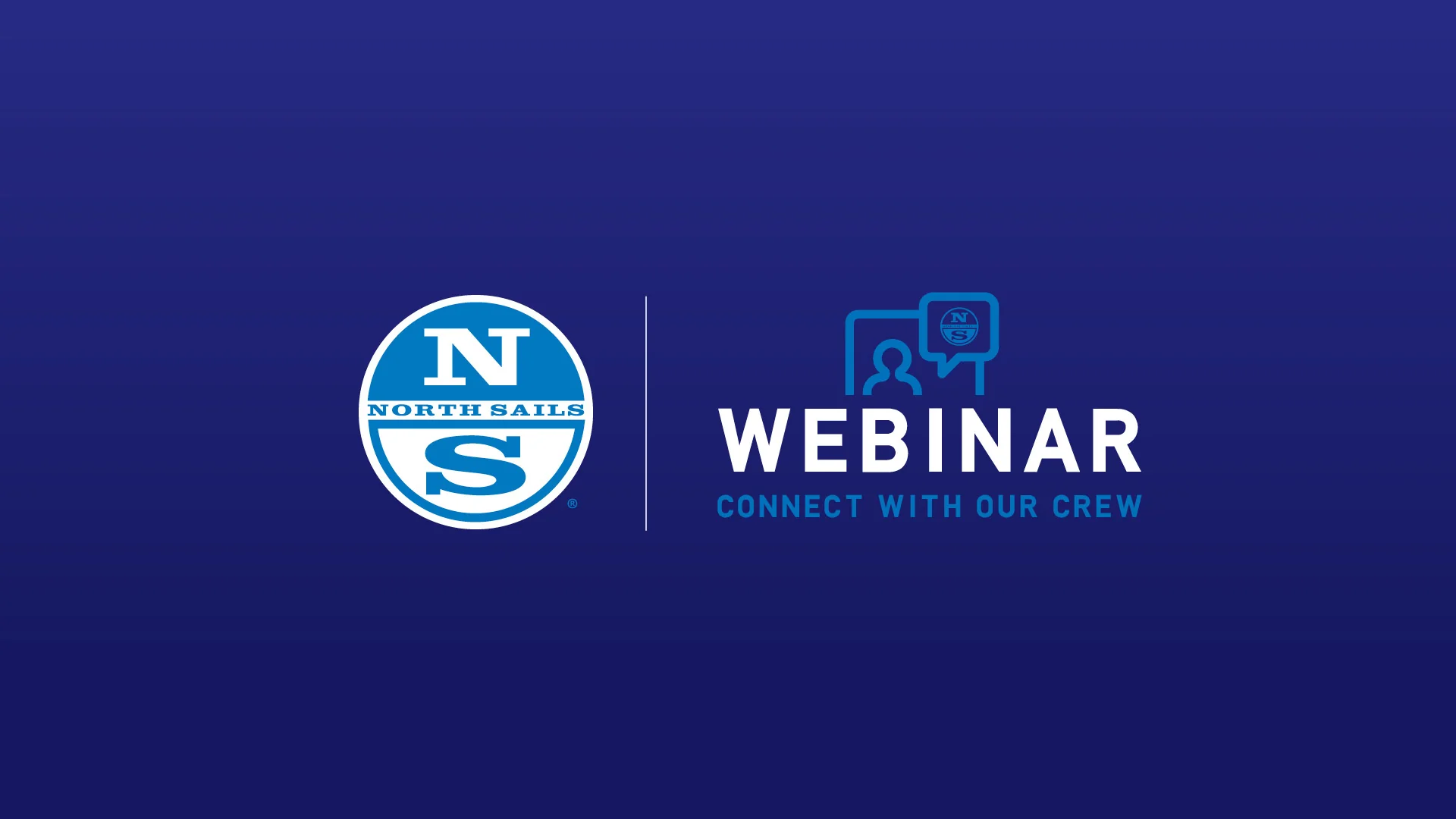
LET'S TALK MC SCOW | FIRST LOOK AT THE MC MAGNUM
LET’S TALK MC SCOW
First Look at the New MC Magnum
The MC Scow Happy Hour was held virtually on Friday, February 5th, for a virtual debrief about the Lake Eustis Training Week/Train Wreck Regatta with North Sails MC Scow expert Allan Terhune and North sail analyst Eric Doyle. During a week of training in Lake Eustis, FL, Allan and Eric had a chance to test the new MC Magnum sail, which is an optimization of the very successful MC Z-Max. They shared their impressions on the new sail and tuning findings for light conditions. In fact, Eric and Allan are working on a new Tuning Guide for the MC Scow class to incorporate a lot of what they learned about the boat.
Take a seat and enjoy the conversation!
Related story: MC Scow Training Week / Train Wreck Regatta
READ MORE
READ MORE
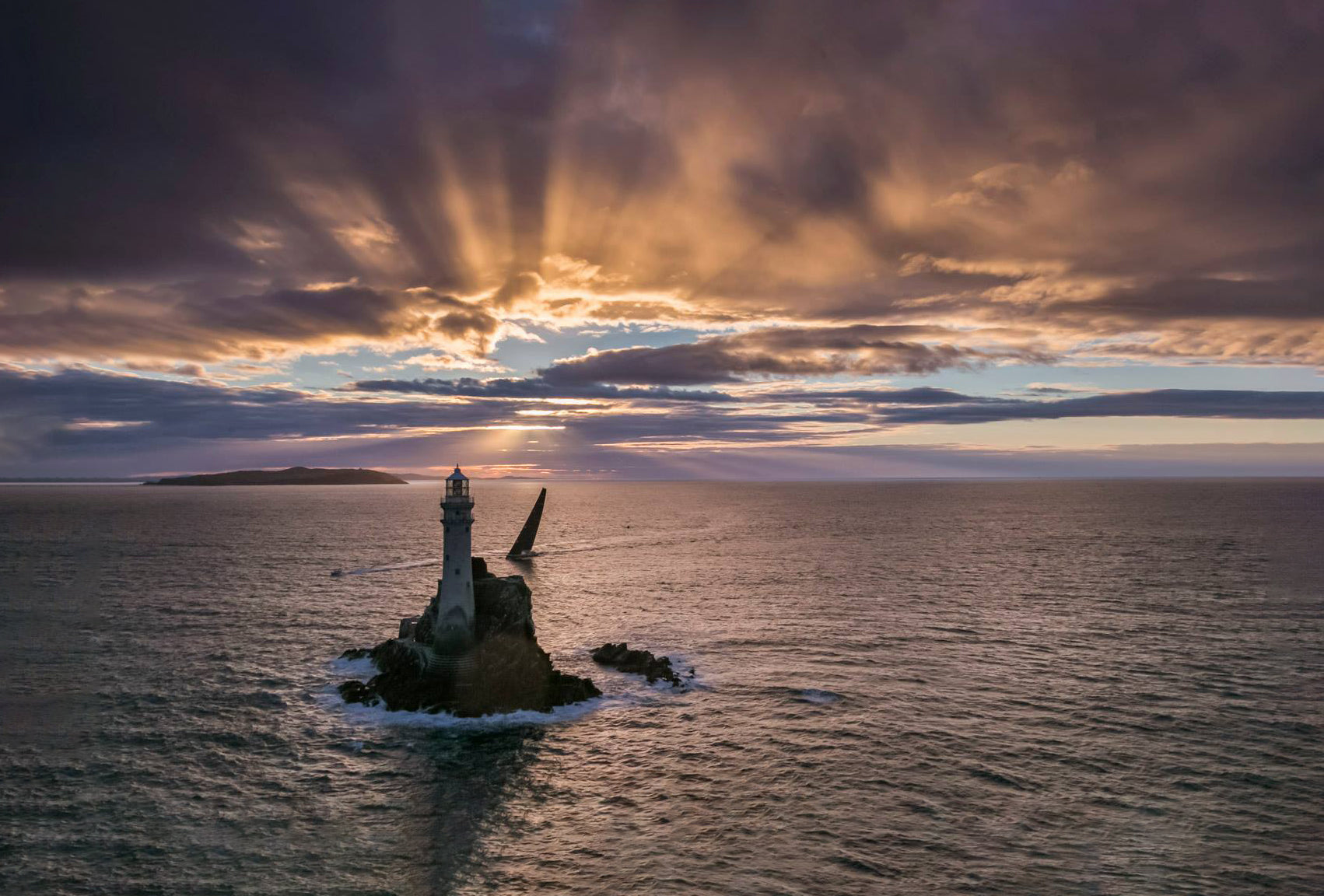
IS YOUR SAIL INVENTORY READY FOR THE ROLEX FASTNET RACE 2021?
IS YOUR SAIL INVENTORY READY FOR THE ROLEX FASTNET RACE 2021?
Live Webinar: Campbell Field & North Sails Talk Through the New Course
© ROLEX/Carlo Borlenghi
Over 400 yachts will set off from the Royal Yacht Squadron start line on the 8th of August 2021 to compete in the Rolex Fastnet Race, organized by the Royal Ocean Racing Club. With a finish in Cherbourg, France, the route now totals 696 nm, adding 90 nm (15%) to the previous course and presenting new challenges for both crews and navigators. North Sails has teamed up with professional navigator, Campbell Field, to help you prepare for this much-anticipated yacht race.
Campbell has run route optimizations based on 10 years of weather data about windspeeds and angles on this new race course. Analyzing this information, alongside your IRC rating and sail inventory, is the best way to improve your performance.
A new course brings new opportunities, but identifying areas to improve will vary with boat design and your existing inventory. To optimize your sails for your IRC rating, first, we need to answer a few questions. What are the 2021 rating updates? Are there any free gains you could make, or should you increase your rating to improve a weakness in your current inventory?
By combining Campbell’s routing data with your knowledge of your boat, North experts Pete Redmond and Ronan Grealish will help you figure out the best strategy for this longer course.
Special guest, Campbell Field, will discuss the route and weather predictions alongside North experts Pete Redmond and Ronan Grealish during a live, free webinar on Thursday, 18th February at 7:00 pm GMT / 8:00 pm CET. With a Q&A session at the end, don’t miss the opportunity to optimize your inventory for this year’s new and different Rolex Fastnet Race.
If you already have specific questions, get in touch with Ronan or Pete ahead of time so we can prepare answers. Or just show up. We look forward to seeing you there.
Register Today
Average from 10-year data by time % at different TWA bands © Field Yachting Ltd.
10 years of Expedition Navigation Software Optimal routes © Field Yachting Ltd.
READ MORE
READ MORE
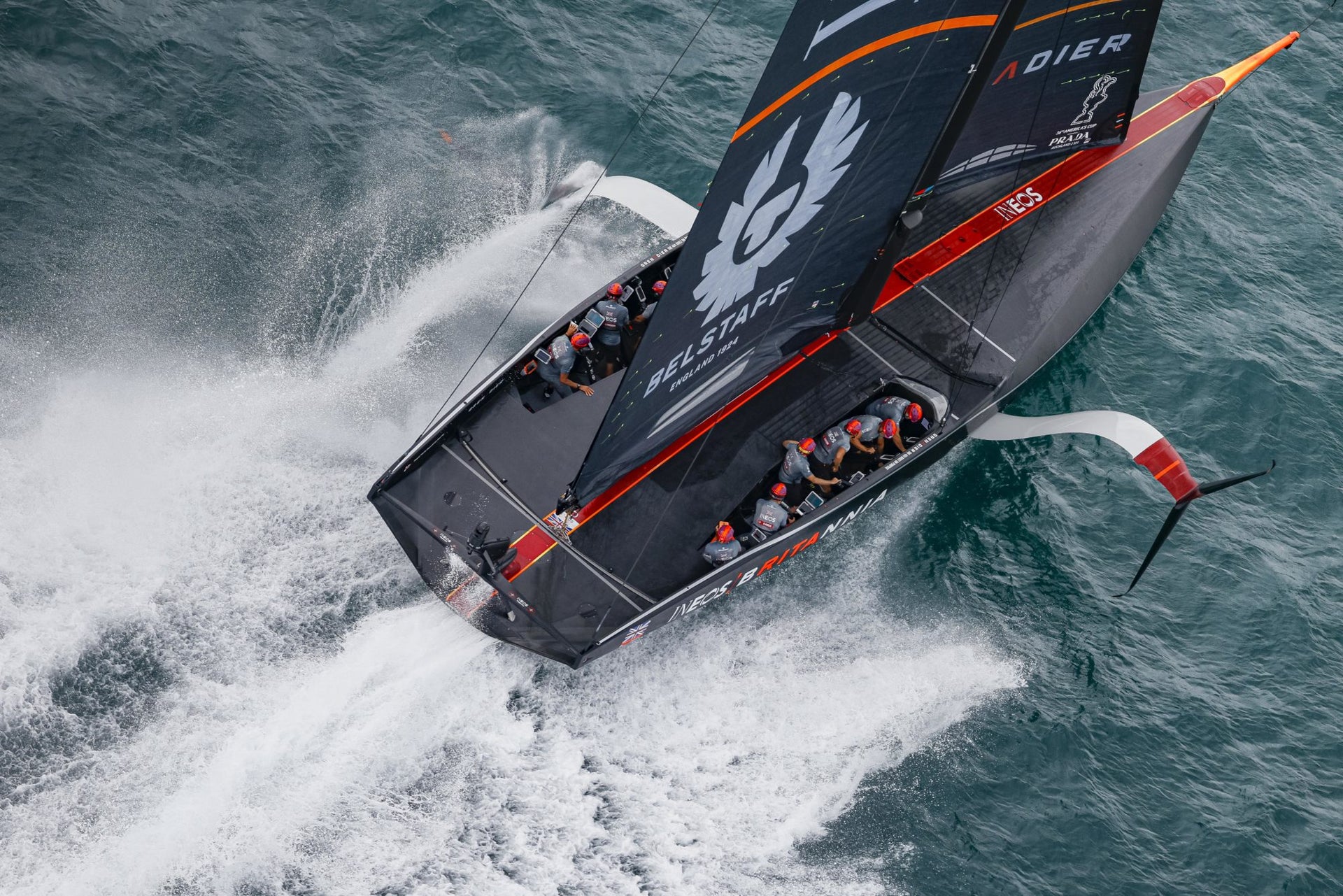
WHAT IS THE TWIN-SKIN MAINSAIL?
We caught up with Emirates Team New Zealand embedded sail designer Burns Fallow to learn more about the twin skin mainsail; a concept decided on before they had finalized the AC75 hull design.
READ MORE
READ MORE

NORTH SAILS + HYLAS YACHTS
The new Hylas 57 features a complete suit of North Sails. The mast furling mainsail, furling genoa, and inner self-tacking jib are all 3Di OCEAN 700.
READ MORE
READ MORE
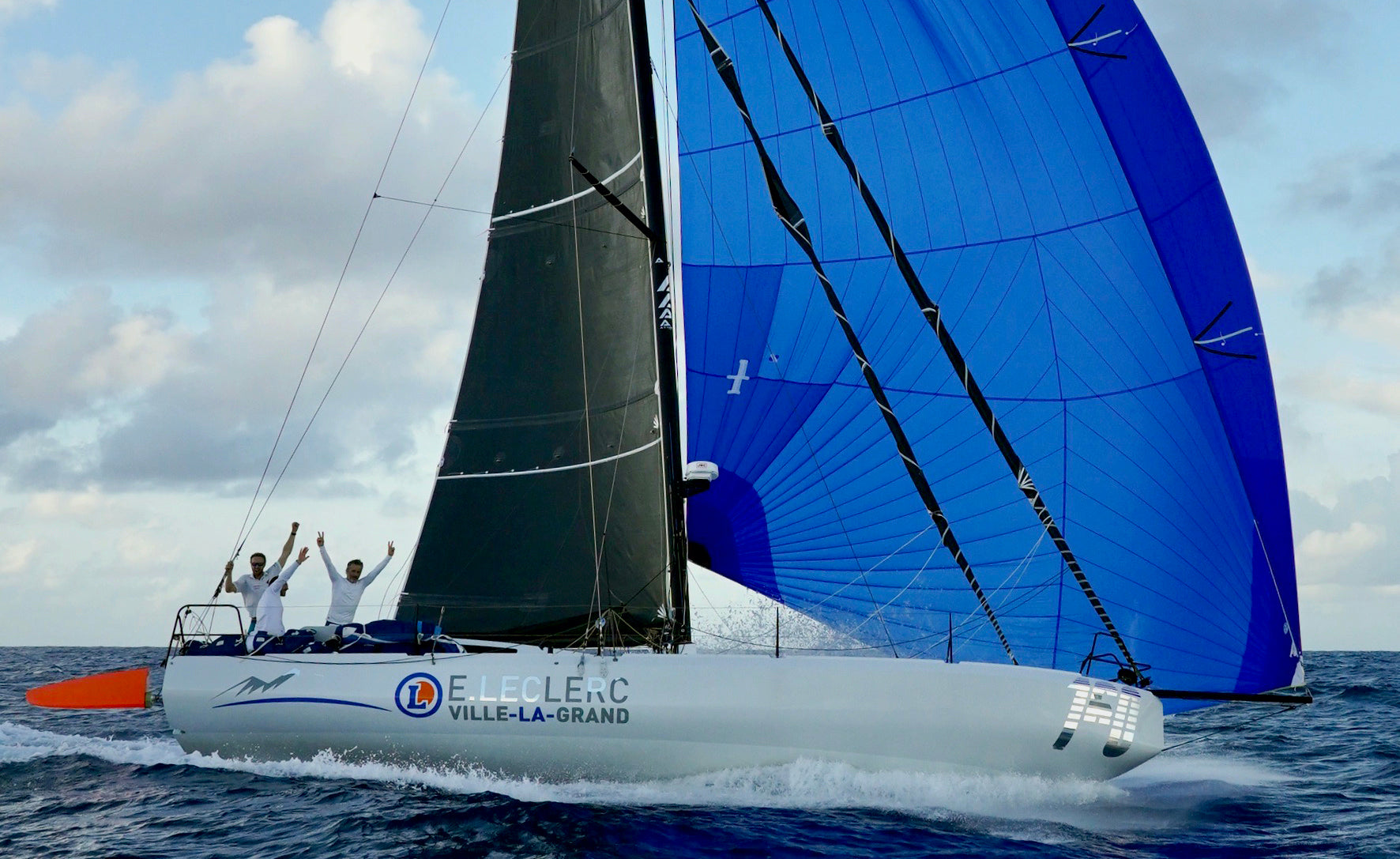
#NSVICTORYLIST: RORC TRANSATLANTIC
#NSVICTORYLIST: RORC TRANSATLANTIC
Powerhouse Trio on Class40 Palanad 3 Wins Overall
📸 Ed Gifford
Olivier Magre and son Antoine launched their brand-new Class40 Palanad 3 in June of 2020 with an ambitious plan: compete in the RORC Transatlantic and the Caribbean 600. Combined with a full season of Class40 racing in 2021, those two events would provide the miles needed to qualify for Olivier’s ultimate goal, the 2022 Route du Rhum.
The Class40 is designed to sail shorthanded, and Olivier finds three to be the lucky number. First, he signed on Corentin Douguet, a well-known Figaro racer, brilliant with weather and strategy. Next, he asked Luke Berry, a young, strong sailor who usually races on his own Class40 and would be the perfect fit and go up the mast when needed. Youth strength plus experience: it turned out to be a winning combination.
“Everyone can do every job, and with the talent we had onboard, we were able to make all the right moves at the right time.”
The RORC Transat was a great chance to test the boat’s downwind sailing potential“, said Olivier. “We had strong competition with Redman, and it was a lot of fun to get to know the boat more and see how hard we could push her.”
Class40s have rounded bows (like Scows), and the design is built for pure speed. Antoine explains, “With all weight focused aft and an eight-degree mast rake, it looks like a windsurfer.” Boat speed is comparable to an IMOCA, Olivier adds. “We hit 27 knots during the Transat. Even on our trip to the starting line in Lanzarote, we saw 28-29 knots. Impressive! Our average speed over ten days was 14 knots. It feels effortless to sail this boat fast, nonstop. It’s a lot of fun!”
Check out what the race was like onboard. 📹 Courtesy of Luke Berry.
Olivier and Antoine both credit the support they received from North Sails experts to get the new boat up to speed. Palanad 3 is equipped with a 3Di RAW 760 main, J1, and J2. In addition, they have an A2, A5, A6, and a FR0.
North Sail expert Alan Pennaneach joined him for the 2020 Dhream Cup and was involved in every step, including onboard training, testing systems, and fine-tuning sails and trim. “We’ve been delighted with our experience and our partnership throughout our program development,” Antoine said. “The feedback is helpful and constructive, the customer service is great, and the sails have not disappointed. It’s been a very positive experience.” Laurent Tilleau, who recently retired, was also a significant part of the Magre’s North Sails experience as they raced together for several years on previous boats.
“The feedback is helpful and constructive, the customer service is great, and the sails have not disappointed. It’s been a very positive experience.”
Olivier’s son Antoine first sailed with 3Di in 2013, and he was impressed, so a new suit of sails from North for the new boat was a must. “The stiffness provides a better feel on the helm, and of course, more durability over time. Our first suit of 3Di lasted 3-4 seasons, and we pushed them hard. With a proper service plan in the off-season, too, our sails were in perfect condition every time we needed them.”
3Di is also lighter and easier to handle than traditional sail materials, both on and off the boat. The weight difference was even more apparent when helping another Class40 with their sails. “We were shocked about how light ours were, after picking theirs up.”
📸 Pierre Bouras
Both father and son enjoy the Class40’s camaraderie. “Before events and after training sessions, we discuss sail selection and design, sail shapes, rig setups– there is a ton of exchange and collaboration, which is why the Class40 is such a great class to be part of.”
Palanad 3 had three crew members on board for the RORC Transatlantic. After the first six hours, they took watches of two hours on, two hours off. For sail transitions or maneuvers, it was all hands on deck. “The Class40 is built for racing,” said Olivier. “The boat designer didn’t care about comfort, so cooking is still a work in progress for us.” With a jet boil for hot water and no water maker, the only hot meal options were freeze-dried or boil-in-the-bag food. “We definitely don’t go sailing for the food,” said Olivier, “but we also enjoyed cold salads with rice and tuna, especially good in the warm weather.”
He said there were two critical things to Palanad‘s Transat victory: the start and avoiding the wind shadows under the Canary Islands, and avoiding sargassum seaweed whenever possible. The tradewinds were stronger farther south, but that’s where the seaweed patches were much thicker, so they planned out their route carefully. “Every 20 minutes, we had to do a weed check,” said Olivier. “The best method we found was to broach the boat intentionally to knock it all off.” For future races, they plan to add a kelp cutter.
All around, the team is composed of seasoned talent. “Everyone can do every job, and with the talent we had onboard, we were able to make all the right moves at the right time,” said Olivier.
With over ten new boats launching this year, the Class40 will only get more competitive and more exciting for all involved. Olivier and his crew hope to get as much time in the boat as possible this year in preparation for the 2022 Route du Rhum.
“We had planned to sail the Caribbean 600, but it was canceled,” Antoine explained. “So Palanad 3 is now headed back to Europe.” The team will start training for the Normandy Channel Race in April, followed by scheduled racing, the Rolex Fastnet in August, and then potentially the Transat Jacques Vabre. “The end goal is the Route du Rhum, and I am sure there will be plenty of smaller races in between to continue to improve on the boat,” said Antoine. “We’ll work hard to keep our training going whether events still go on as planned or not. It’s all about sailing the boat fast–and we’ve got some pretty high expectations!”
📸 Antoine Dujoncquoy
READ MORE
READ MORE
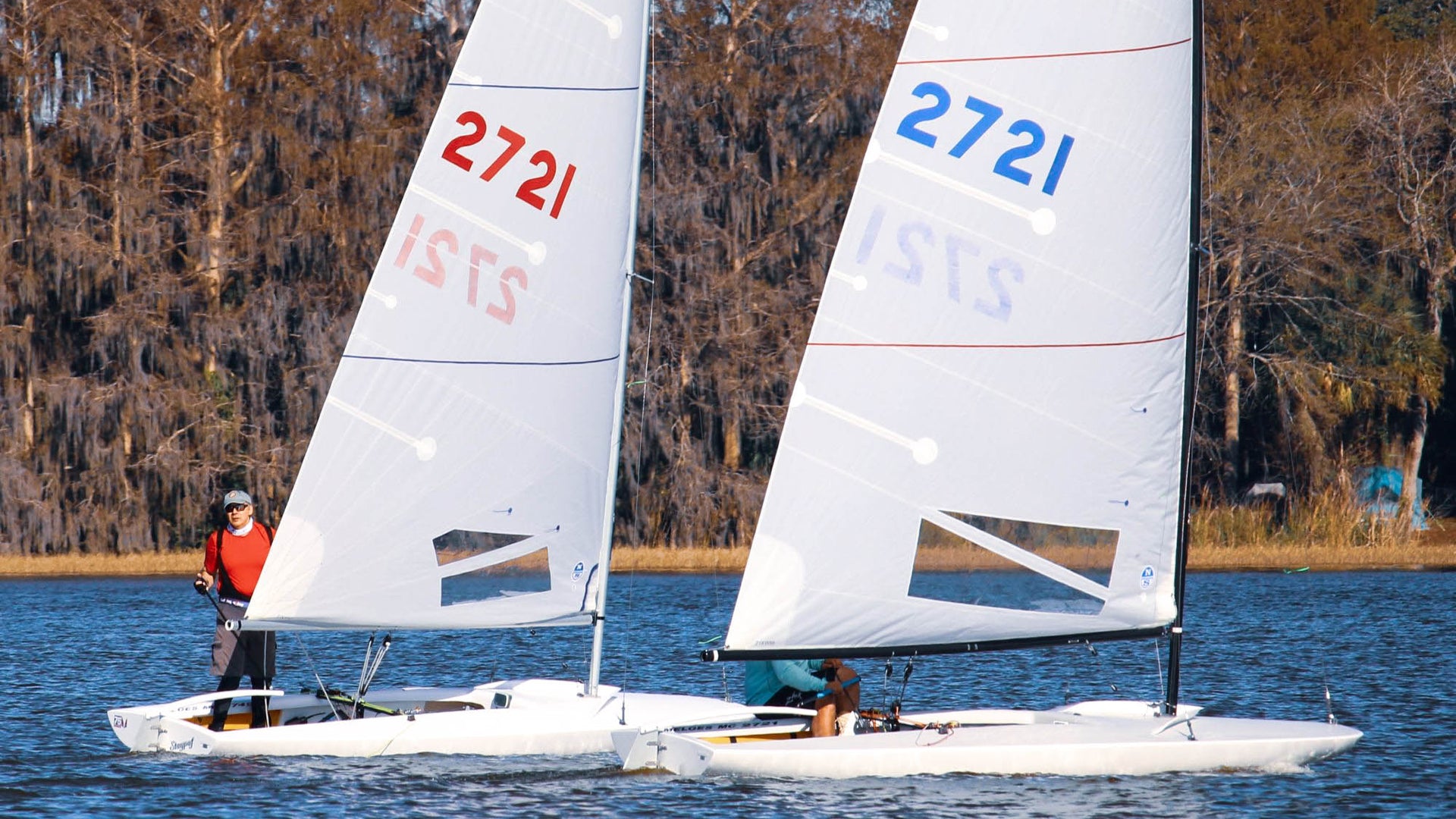
MC SCOW TRAINING WEEK / TRAIN WRECK REGATTA
MC SCOW TRAINING WEEK + TRAIN WRECK REGATTA
A Closer Look At The New 2021 MC Product Line
The new 2021 designs for the MC Scow
North Sails MC Scow class leader Allan Terhune was joined by North’s top sail analyst Eric Doyle, aka ‘the man who is obsessed with making fast sails faster’ for a solid week of MC Scow training on Lake Eustis in Florida.
Thank you to Lake Eustis Yacht Club and Commodore Dave Moring, who welcomed the duo and provided support as well as the perfect facility for sail testing. The MC Masters champions Matt Fisher and Lisa Fisher, as well as Sean Bradley, Ken Felis, Al Haeger, and Chris Kubickek and others also joined in the fun, making it a successful week of test trials for North MC Scow sail designs.
The main goals for the week were to test the new 2021 MC Scow product line, including the brand new “M” design – the Magnum, and warm up for the upcoming regatta with all minds open to continue to learn as much as possible about sailing the boat.
While Allan was sailing, Eric was busy observing all the action from the powerboat and together they made important conclusions about fine tuning the sails. For instance, In light air the main must be trimmed hard enough to bend the mast, but not too hard because it closes the leech and will stall. “This is a very tricky balance between luff curve and broad seam in order to go through the entire wind range with very few controls and adjustments,” said Eric. “It’s important to understand the level of details involved that affect sail design, and how crucial it is that the sail is fast in all conditions.”
Allan had excellent race finishes, with a 3rd, 2nd, and 1st at the regatta, proving that the work done during the week of training paid off. “This is my second MC event,” said Allan. “I learned a lot about the sails and the boat this past week at Lake Eustis, including rake measurements, board angles, and shroud tension. I am excited to share what I learned with the gang.”
MC Virtual Happy Hour
Allan and Eric hosted MC sailors on Friday, February 5th, for an informal virtual debrief about what they learned this past week in Florida.
WATCH
Allan Terhune sail testing the new MC Magnum mainsail.
Sail testing the ZMax and the new MC Magnum. Lake Eustis, FL.
READ MORE
READ MORE
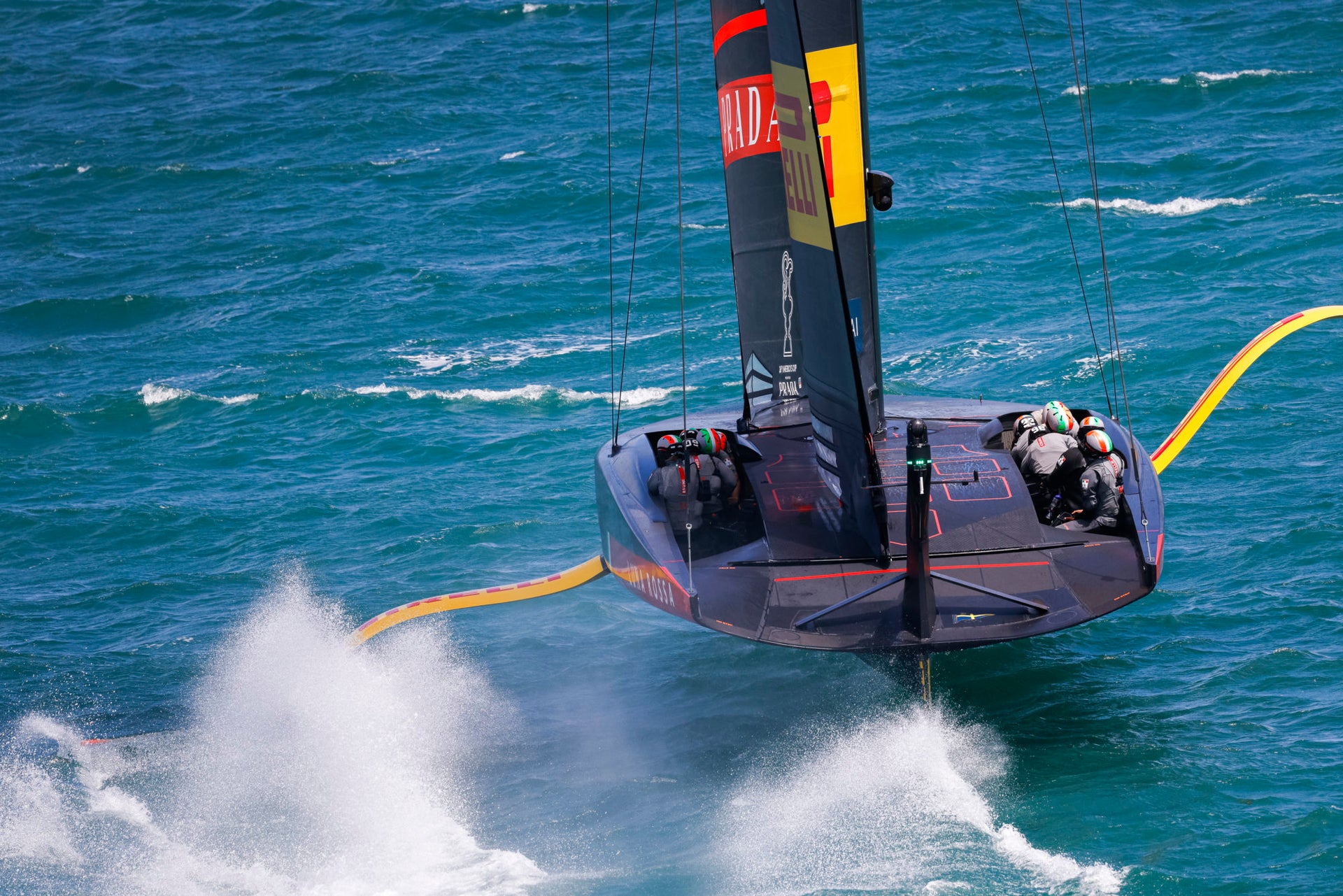
#NSVICTORYLIST: THE PRADA CUP SEMI FINALS
#NSVICTORYLIST: LUNA ROSSA WIN THE PRADA CUP SEMI-FINALS
The Italians sweep the series and secure their spot in the Finals
COR36 / Studio Borlenghi
The drum-roll for the semi-finals of the PRADA Cup began about three days out with two big questions: had Luna Rossa PRADA Pirelli found new speed and restored its mojo after its consistent losses against INEOS TEAM UK? And would the other boat even show up after its frantic repair work?
Race 1 and 2 opened the semi-finals on Friday, 29 January: Luna Rossa PRADA Pirelli vs American Magic. Luna Rossa was almost certainly the stronger team, but the semi-finals would see the first elimination and there was no room for complacency. Jimmy Spithill admitted this did put pressure on the team – but in a good way. America’s Cup wannabes veterans eat pressure for breakfast; this is not a game for the faint of heart.
Over the weekend, the weather conditions were potentially boat-breaking: a choppy sea and puffs that sailors call bullets – sudden bursts of high-speed winds firing off the land. They can strike an AC75 at its most vulnerable when it is executing a bear-away from the top gate. It’s like watching a scary movie: you simply can not look away.
Luna Rossa PRADA Pirelli’s Francesco Bruni would never admit to being scared, but he later said that in such difficult conditions it is important to pre-plan the day. “There is no time to make last-minute calls,” he said, “and if you do make one, you are doing something you shouldn’t.”
COR 36 / Studio Borlenghi
It was exactly the racing experience the Italians needed to up their game before the finals. Luna Rossa sailed into the start box floating like a butterfly, and ready to sting like a bee.
They dominated the start and led to the finish. Then they did the same again in the second race.
They also displayed subtle changes in strategies. Like speed, for example. For 170 years, the experts have said that the fastest boat wins the America’s Cup, but when boat speed is red-lining at 53 knots, the ability to slow down on demand can be an advantage. Thus proving that sailing a clean race is equally important.
“We’re not worried about reaching the maximum speed,” Bruni said, “and when you bear-away at the top mark you probably don’t want to be doing maximum speed.” That’s a good trick, because 53 knots at the wrong time can take an AC75 deep into the danger zone.
Races 3 and 4 on Saturday, 30 January were a whole new day: sunny with an even north-easterly breeze that would provide few passing lanes on the course. Luna Rossa PRADA Pirelli was almost certain to add two more to the scoreboard. They controlled both races from the get-go, sailed faster upwind, and pointed higher. The Americans suffered major issues with controlling their foil boards. Which ultimately extended the Luna Rossa lead.
Max Sirena, Luna Rossa’s skipper, and team director said he was very happy with the performance of Luna Rossa and the on-board communication. “Both have been improving a lot,” he said, “so heads down and concentration up.”
With the semi-finals complete, the America’s Cup bus is boarding the last few passengers, Luna Rossa has shown off its overall improved performance and is looking cool under pressure – except it wasn’t under the pressure it can expect from Ineos Team UK.
Jimmy Spithill was asked what he saw as the key challenge in facing the British team when the Prada Cup finals begin on 13 February.
The reply was a classic Spithill one-liner: “Cross the finish line in front of them.”
COR 36 / Studio Borlenghi
READ MORE
READ MORE
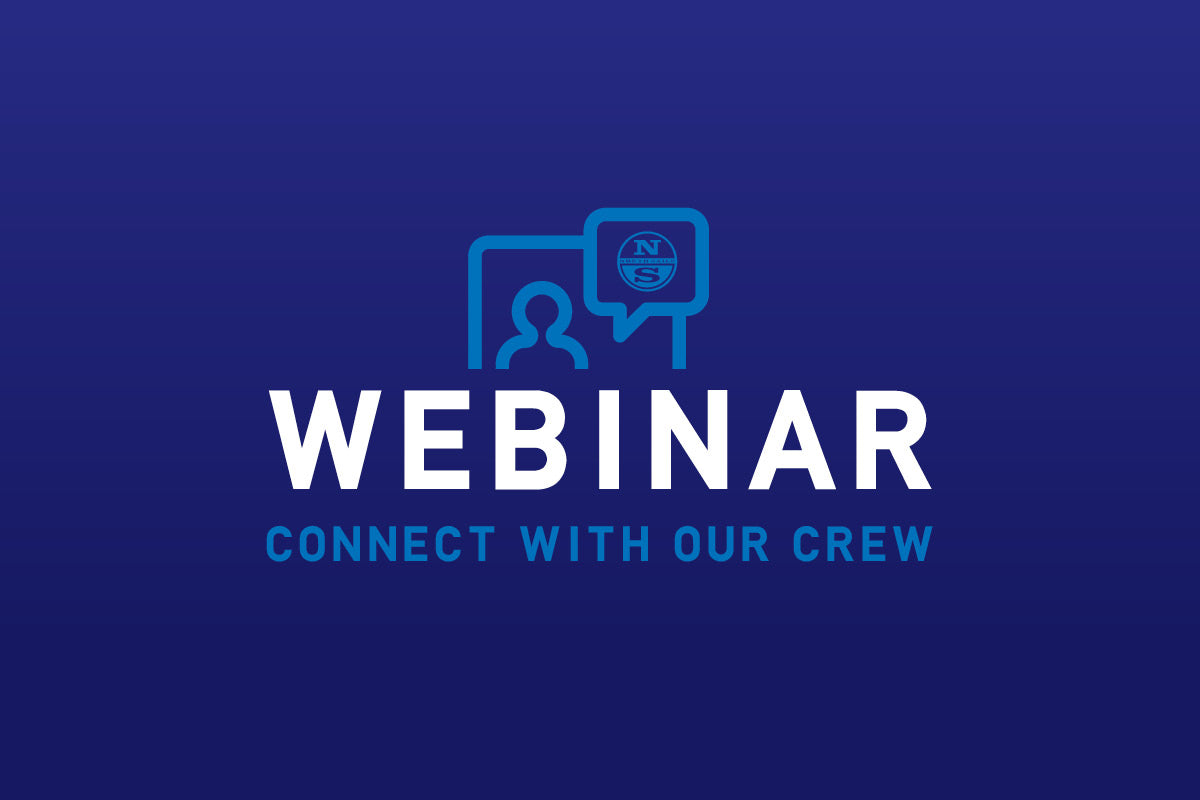
YOUR NORTH SAILS TEAM IS LIVE!
YOUR NORTH SAILS TEAM IS LIVE!
Upcoming Expert Webinar Schedule
Catch your local teams live with our upcoming interactive webinar schedule. North Sails Class Experts from around the world have joined forces to bring you the best tips and techniques that will help you get the results you are looking for. When you sign up for the webinar of interest, you will be sent the link to access the live presentation so you can view at any location you are in the world, from the comfort of your home. Grab a seat, a drink, and kick back with our full-on educational webinar schedule, open to all.
*All webinars are recorded and will be published on our YouTube channel. Did you miss one? View all of our webinars and rewatch or rewind at your own convenience.
Watch Past Webinars
Upcoming Webinar Schedule:
🌐 LET’S TALK J/70 MIDWINTERS
Get ready for the 2021 Midwinters in Tampa, hosted by Davis Island Yacht Club. Join North the Sails Experts Allan Terhune and Zeke Horowitz and Sail designer Mike Marshall for a full session of tips, tuning, and sail trim information.
Tuesday, November 16th at 8:00 pm EST
Register Here
🌐 LET’S TALK NEWPORT BERMUDA RACE – WEATHER & NAVIGATION
North Sails is back the Official Performance Partner to the 2022 Newport Bermuda Race. Three editions in the running, we’ll once again be running our enormously informative and popular Performance Seminars, focused on weather, navigation, sail selection, and performance optimization.
Raise your Newport-Bermuda weather IQ with Chris Bedford and Peter Isler, founders of Marine Weather University.
Thursday, November 18th at 7:30 pm EST
Register Here
🌐 LET’S TALK NEWPORT BERMUDA RACE – SAIL INVENTORY OPTIMIZATION
North Sails is back the Official Performance Partner to the 2022 Newport Bermuda Race. Three editions in the running, we’ll once again be running our enormously informative and popular Performance Seminars, focused on weather, navigation, sail selection, and performance optimization.
From race-record-breaking skippers to multi-edition veterans, the North Sails team’s collective experience and expertise are proven to deliver results.
Thursday, December 9th at 7:30 pm EST
Register Here
READ MORE
READ MORE


